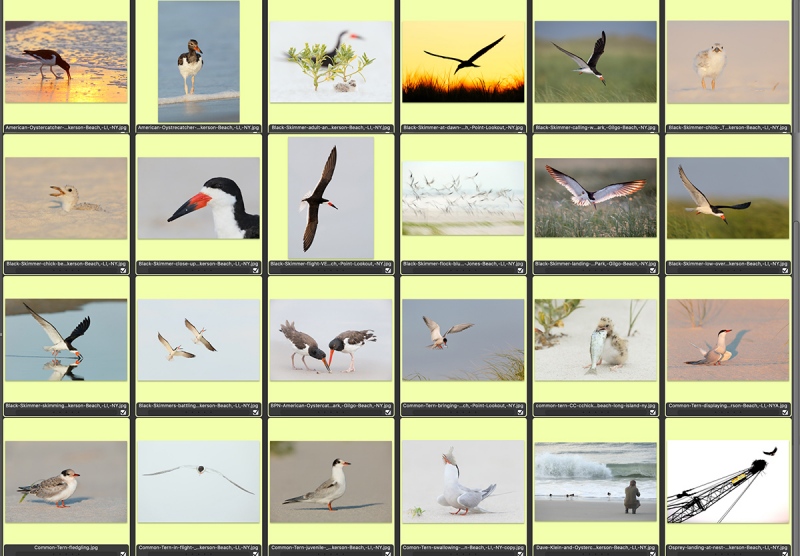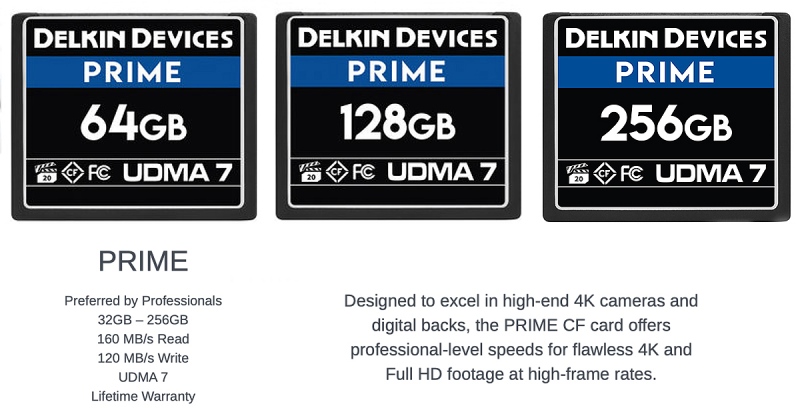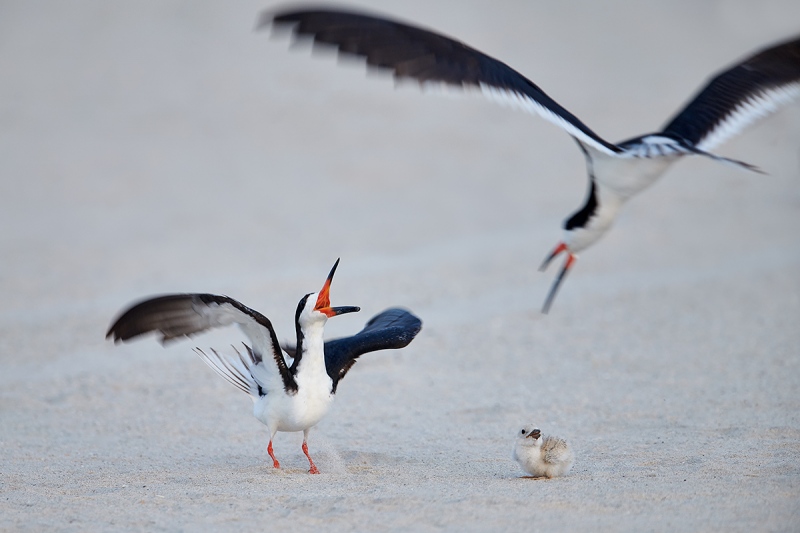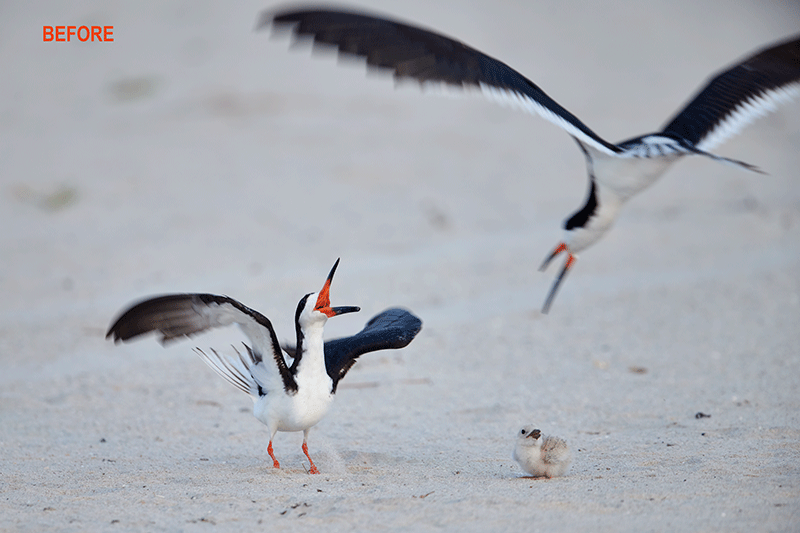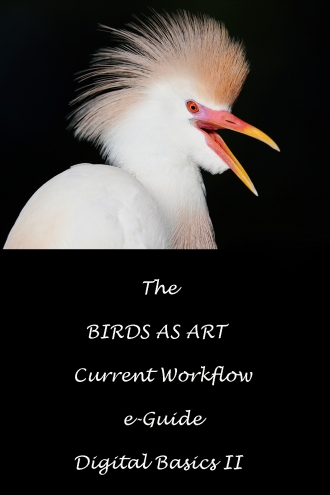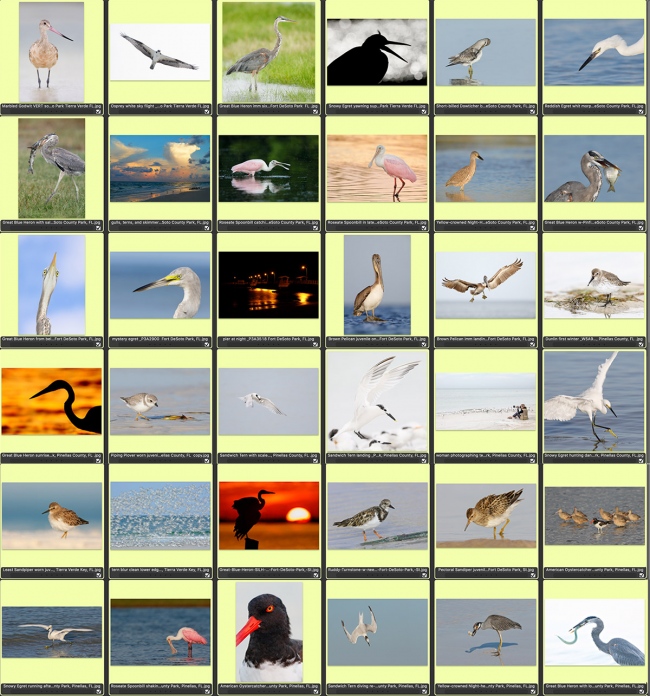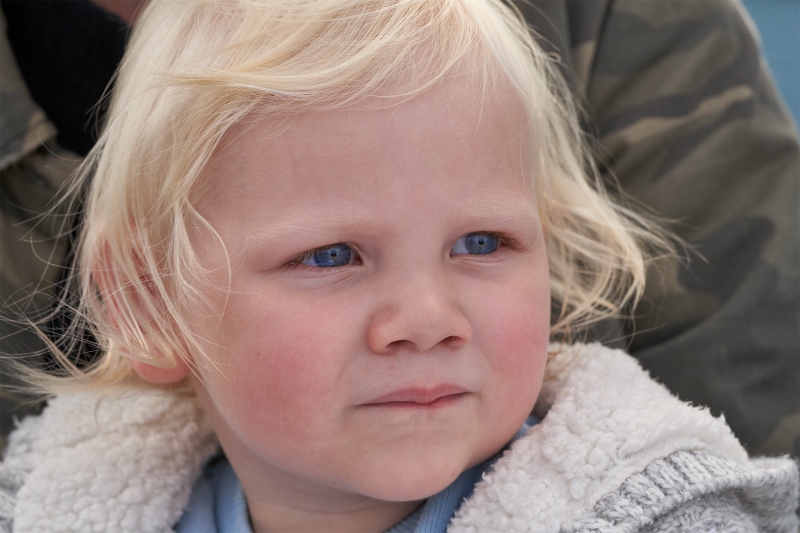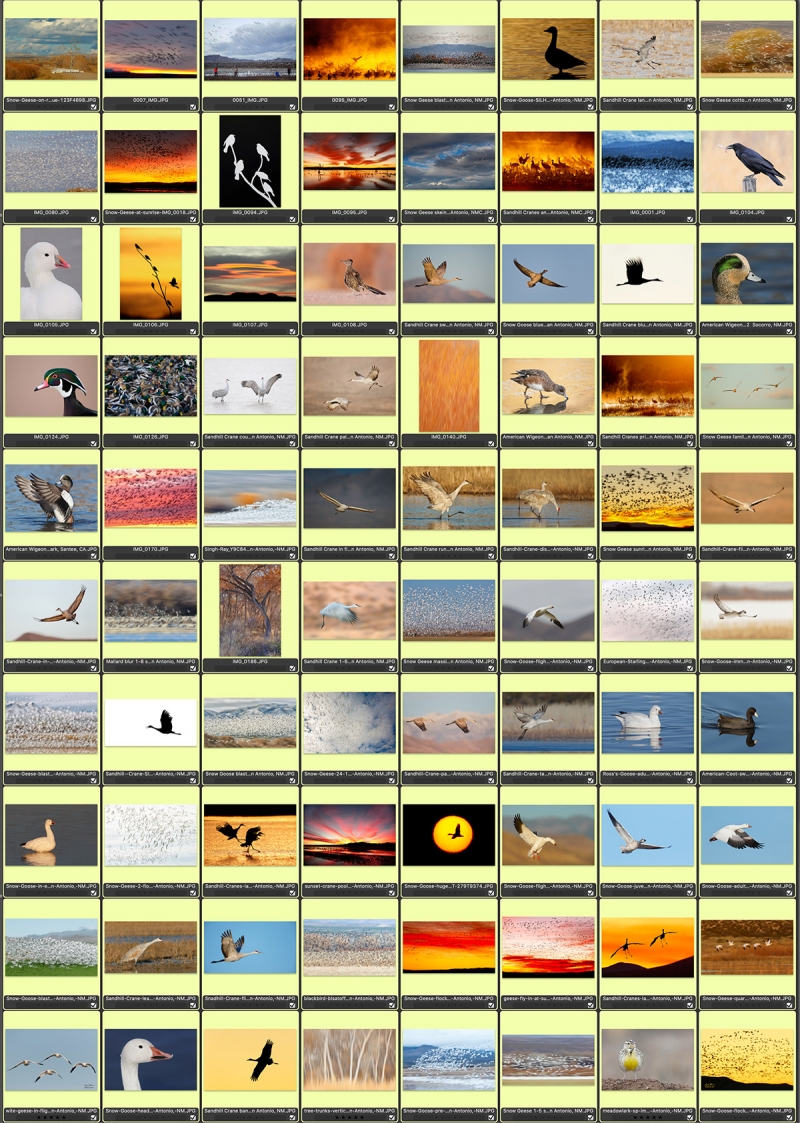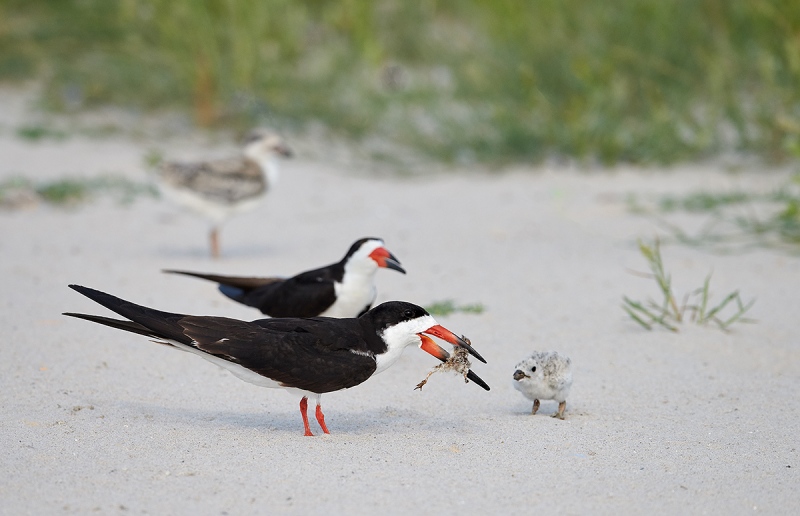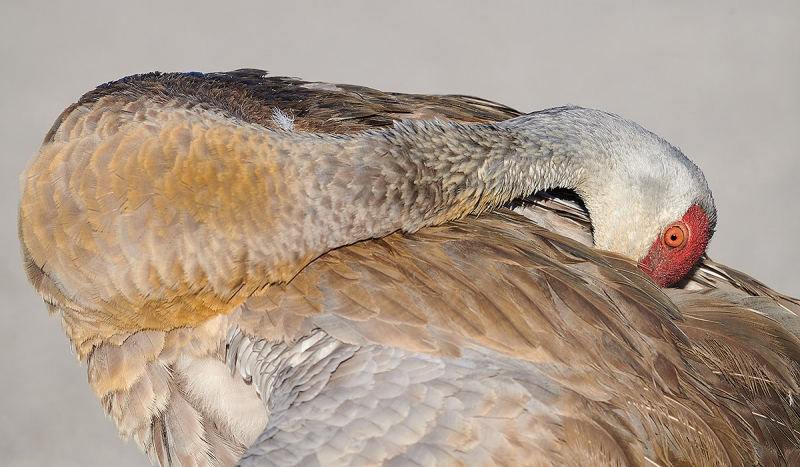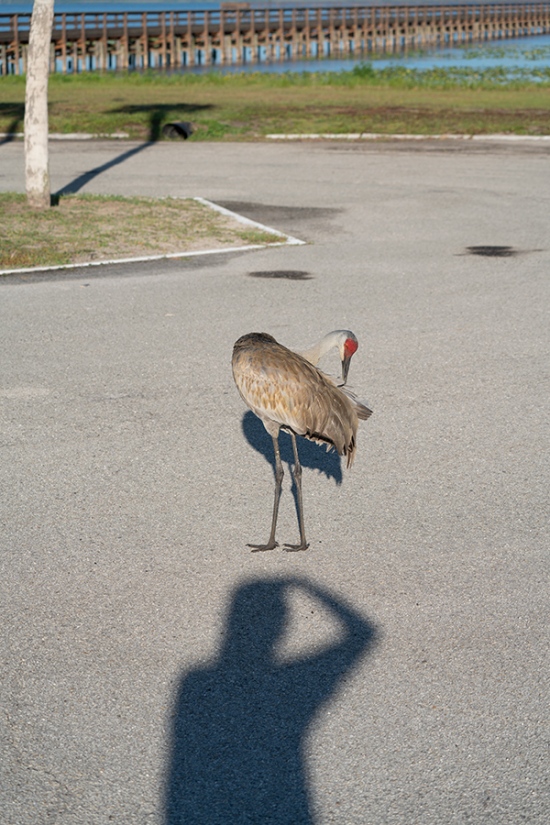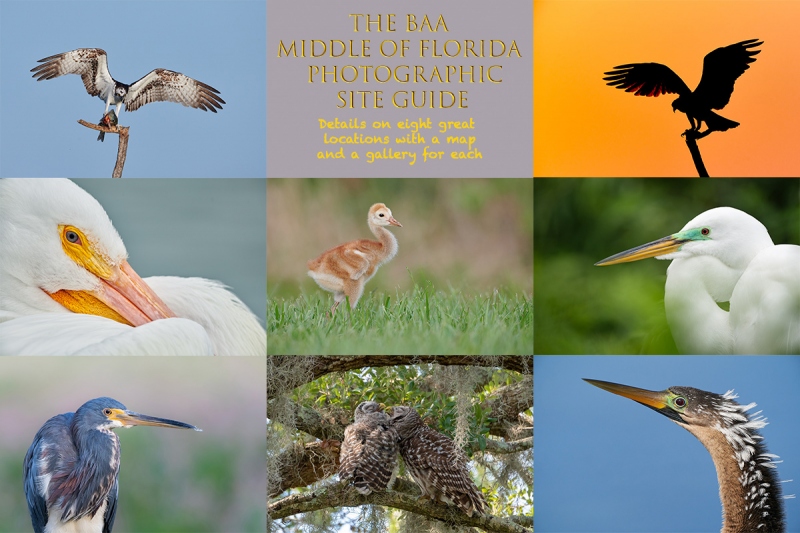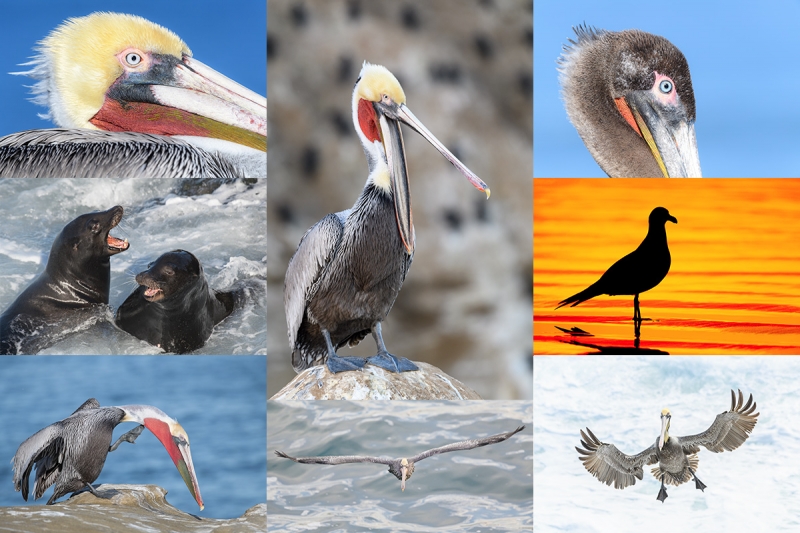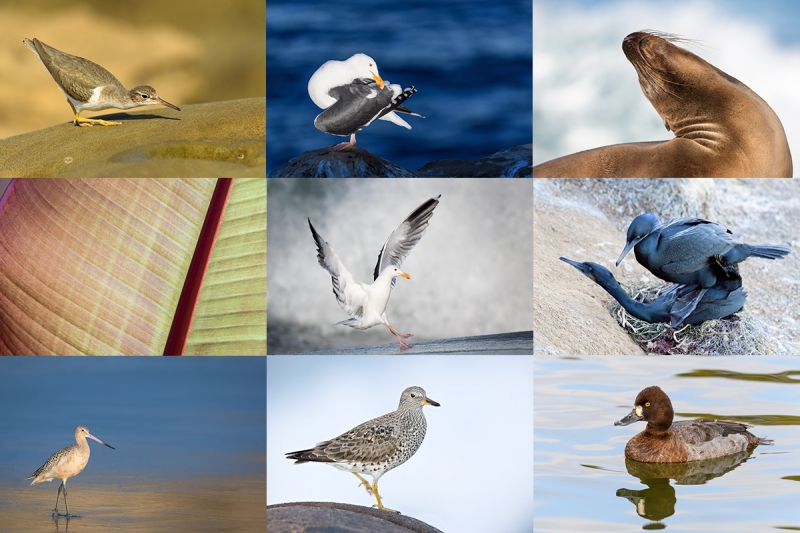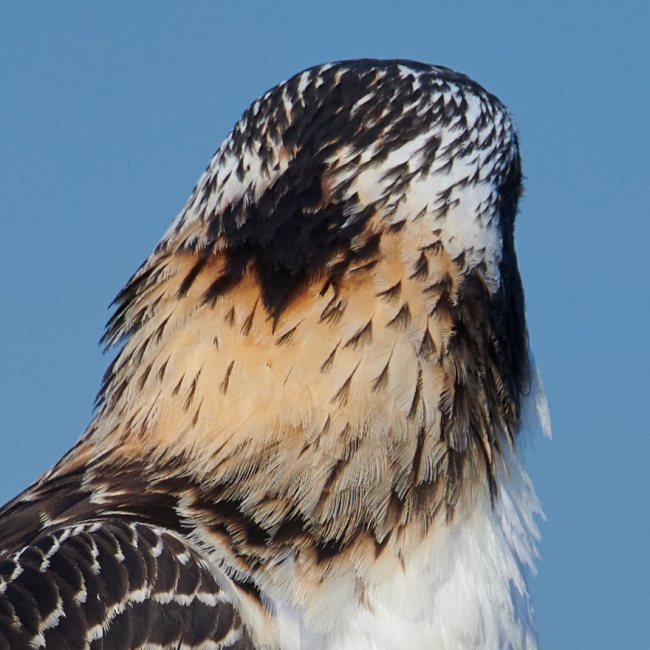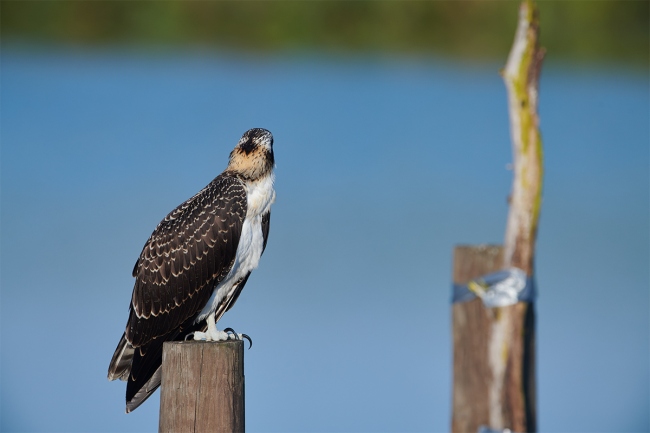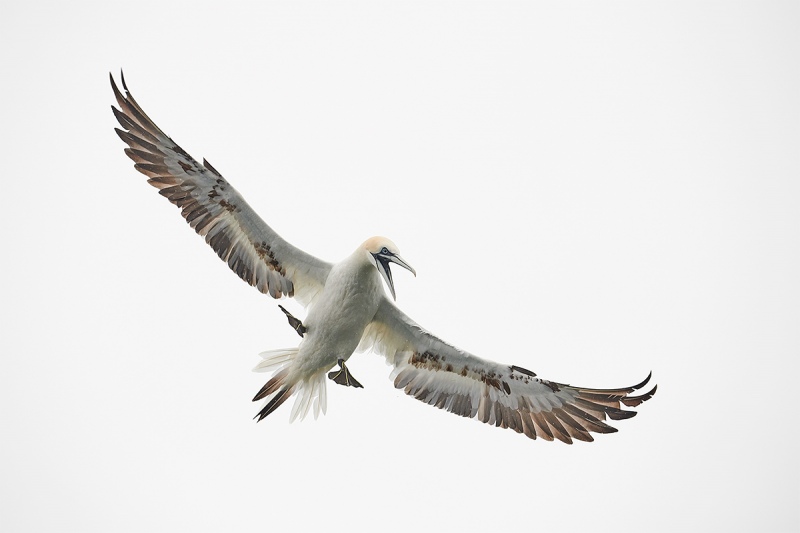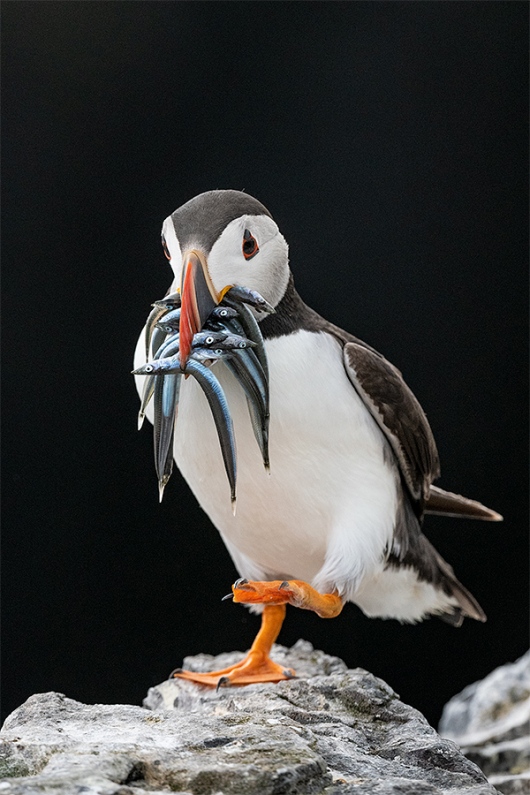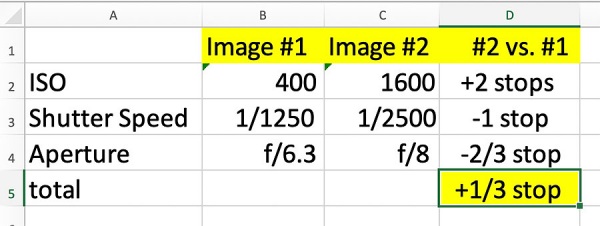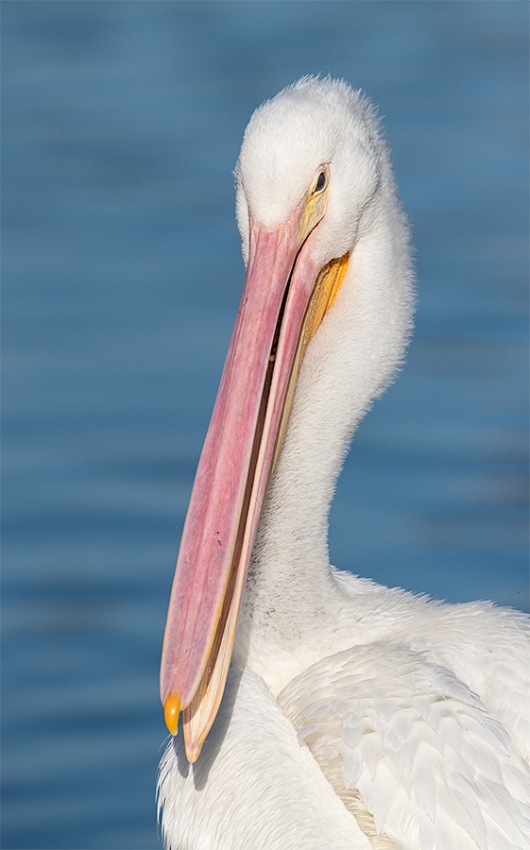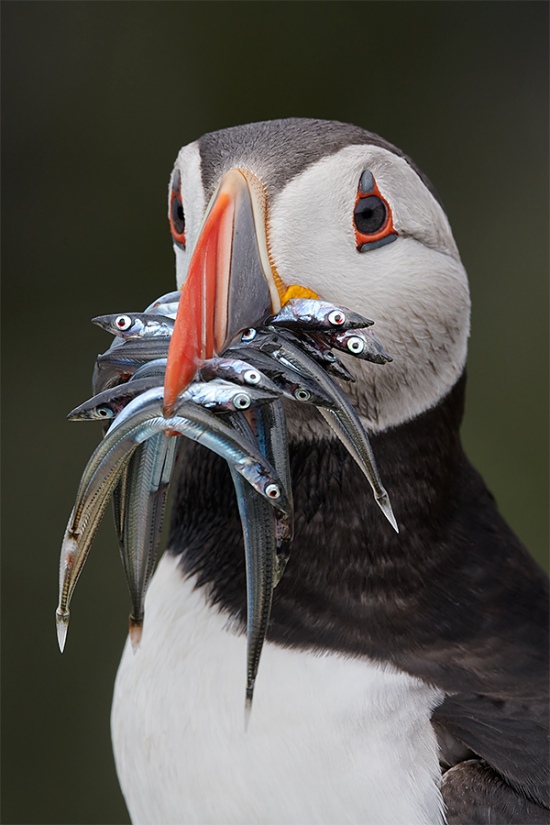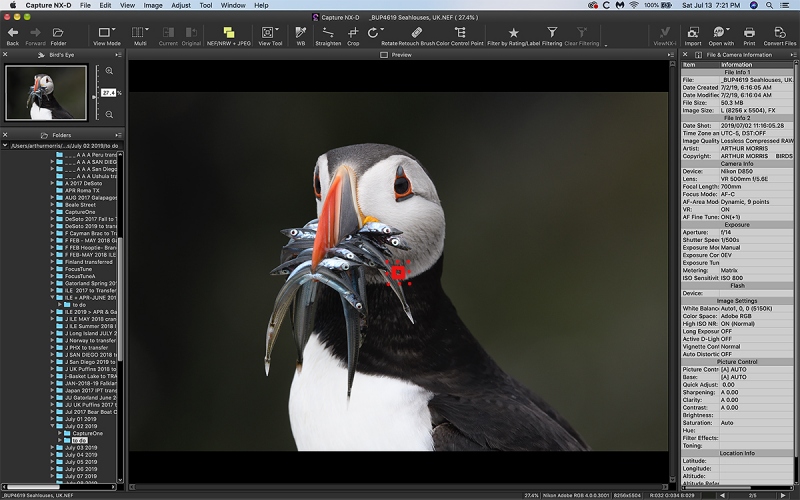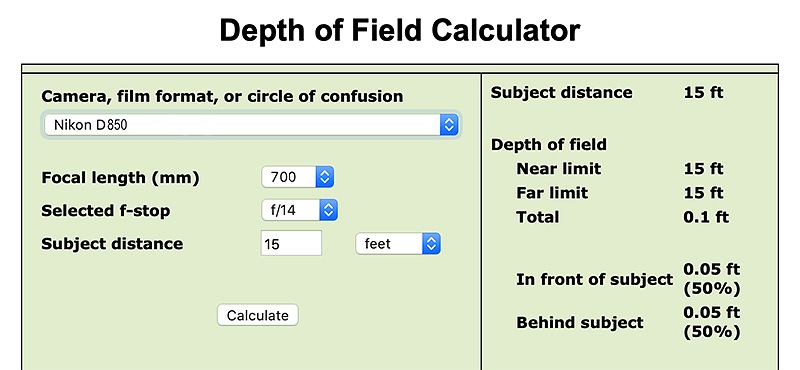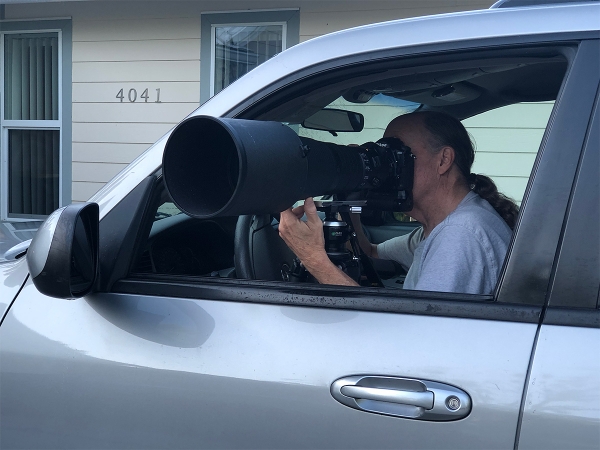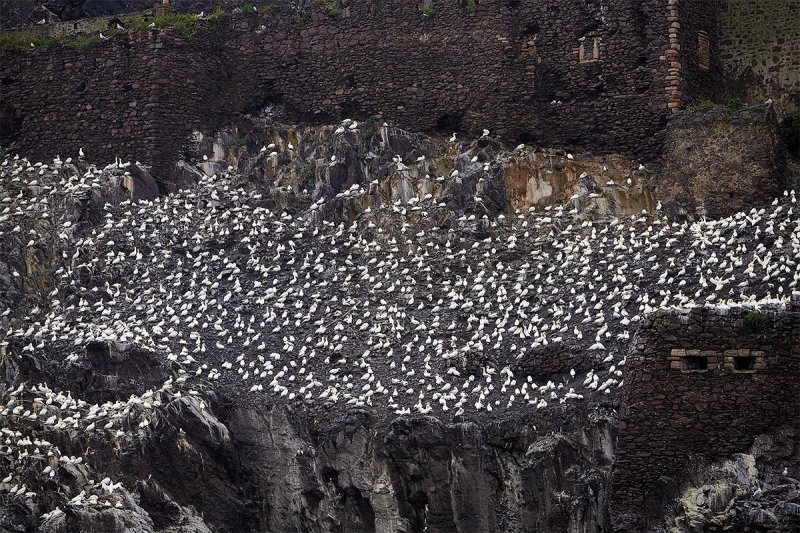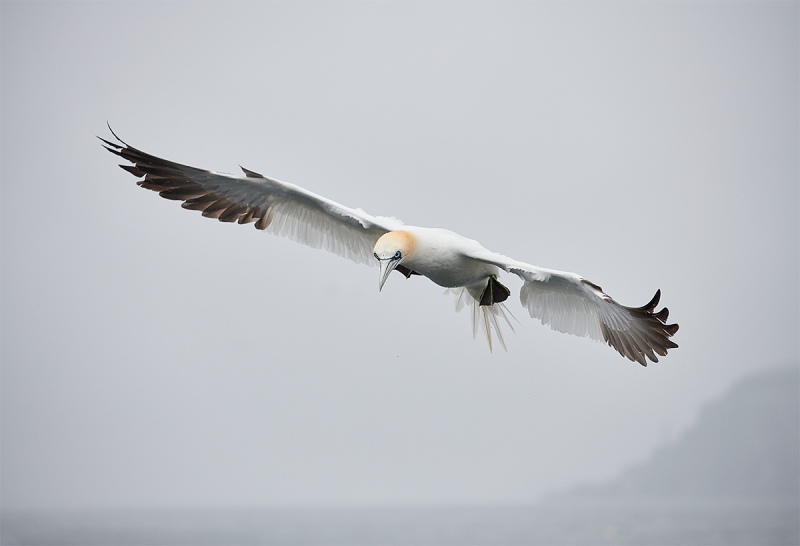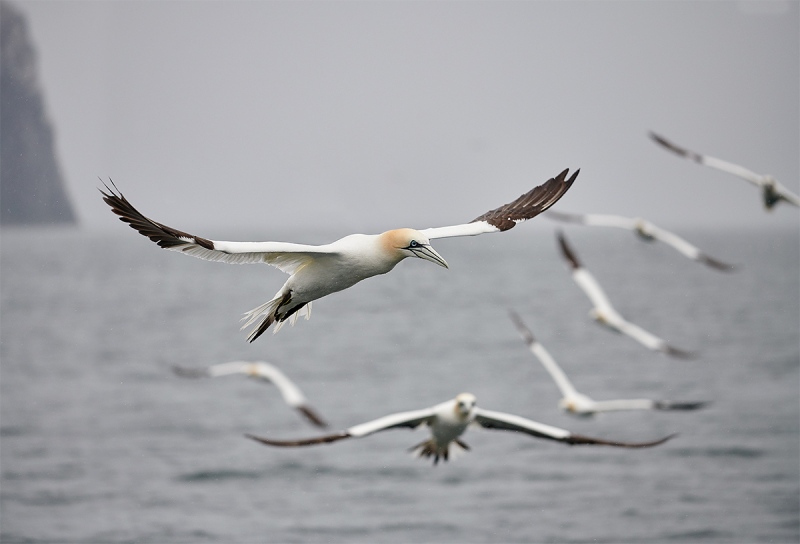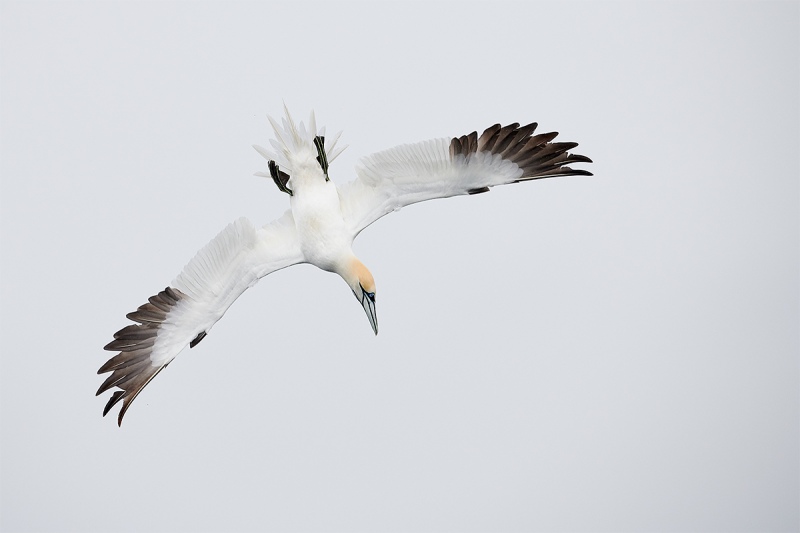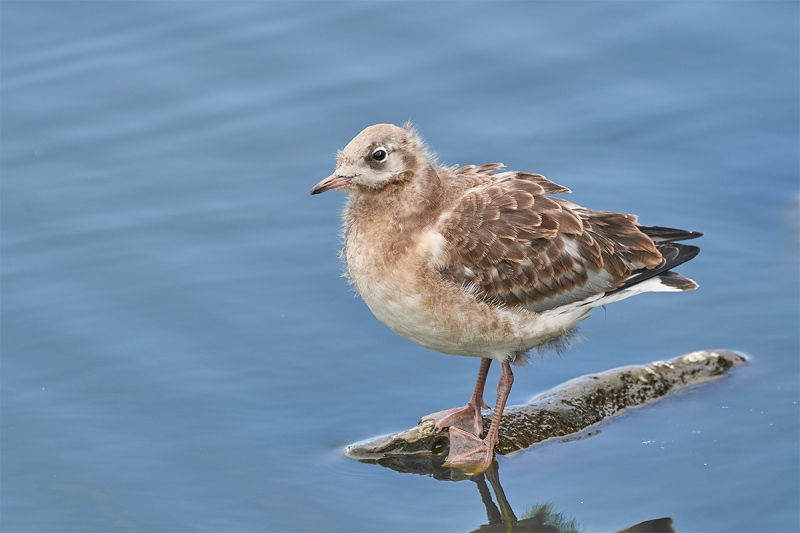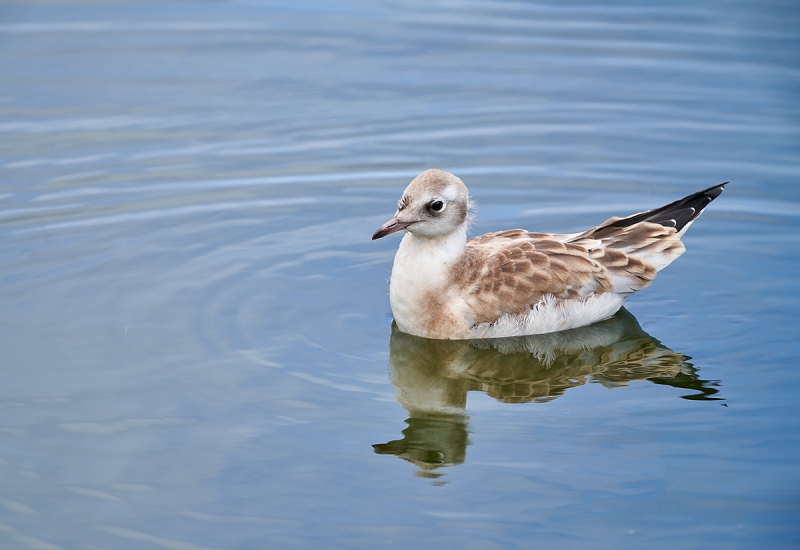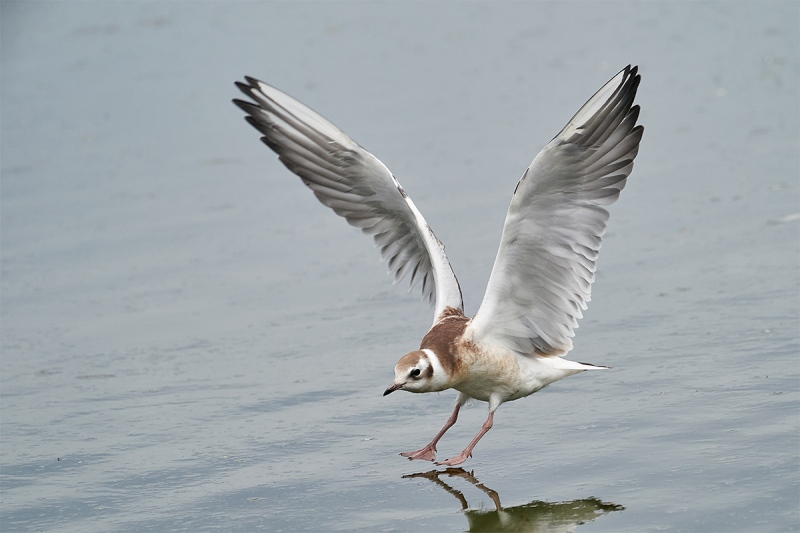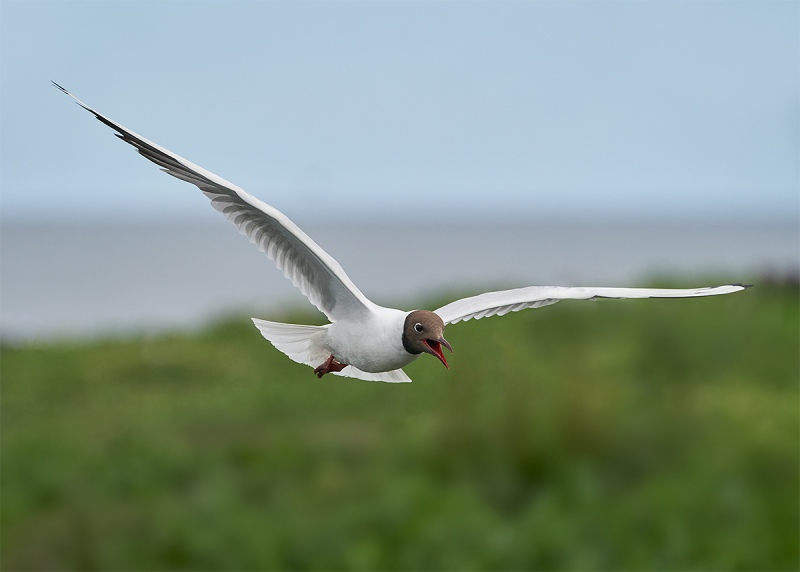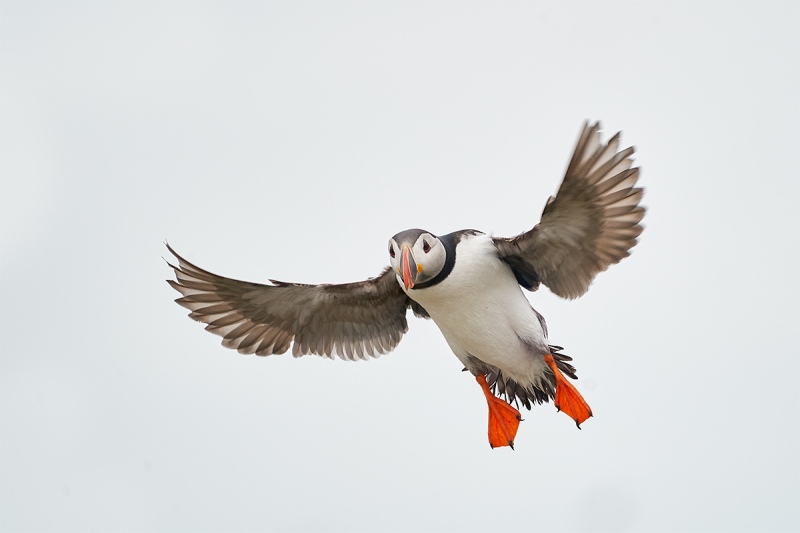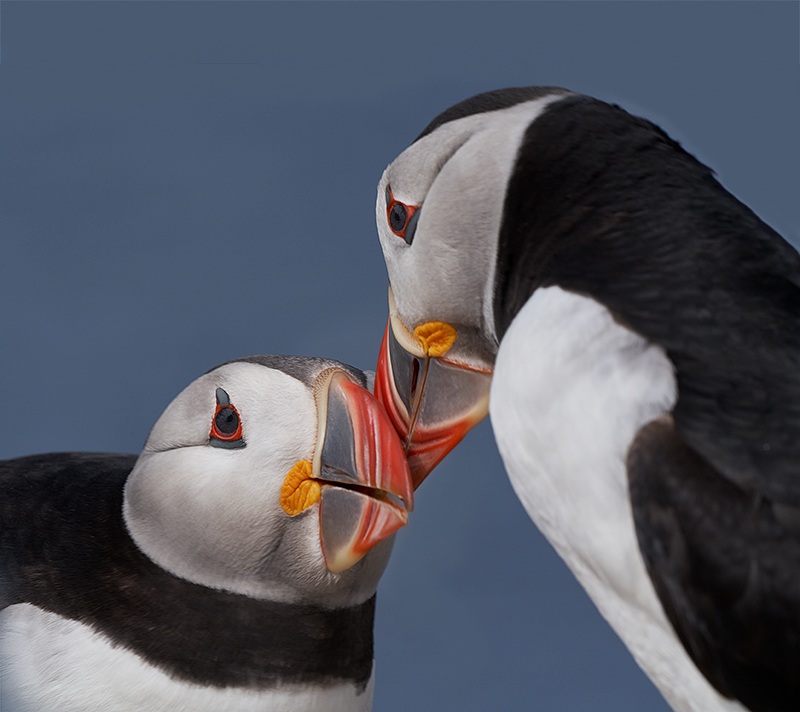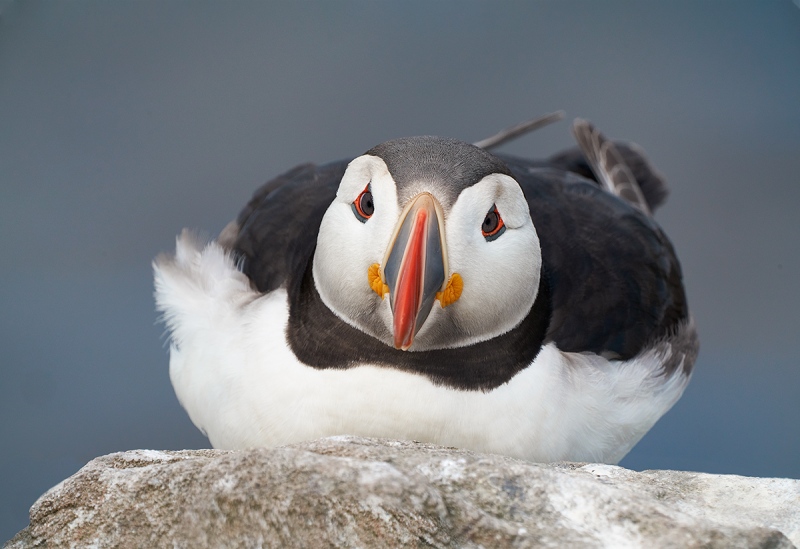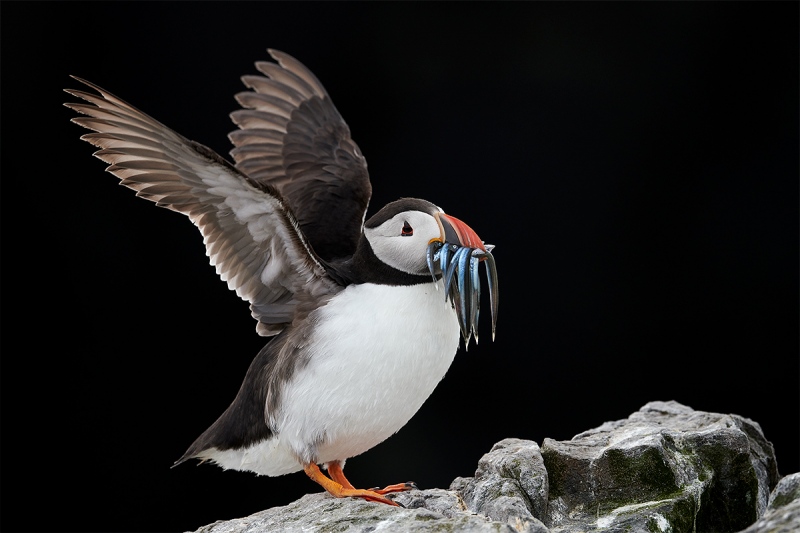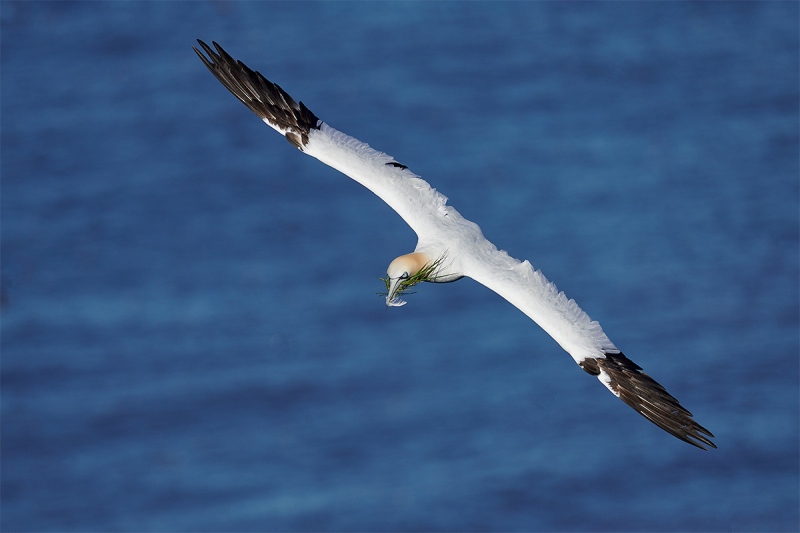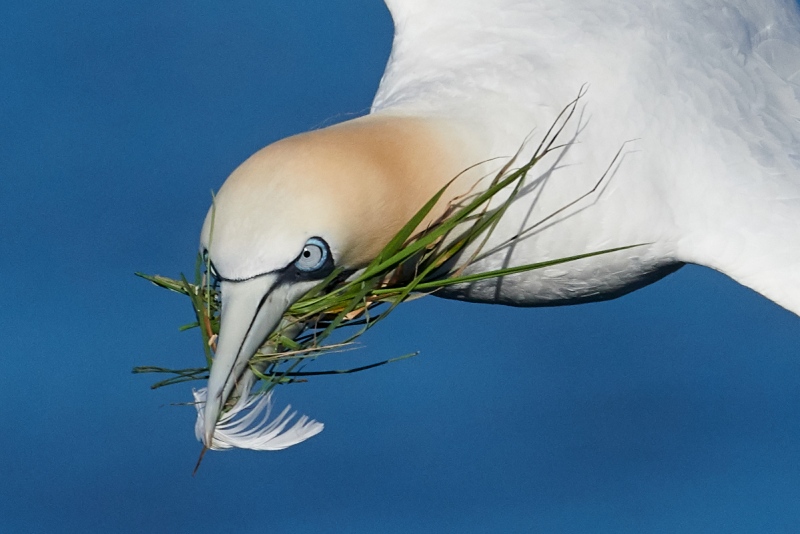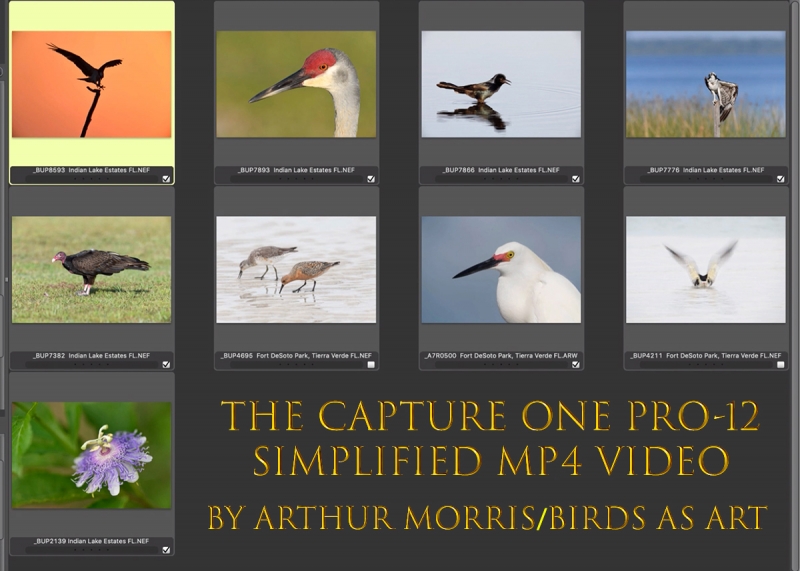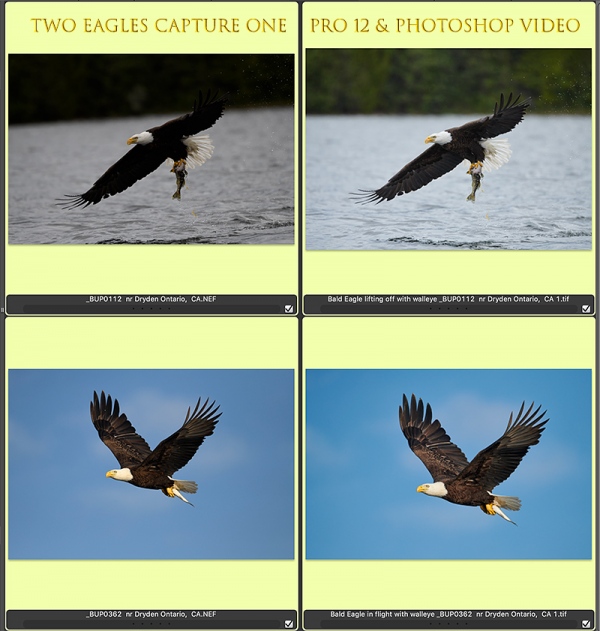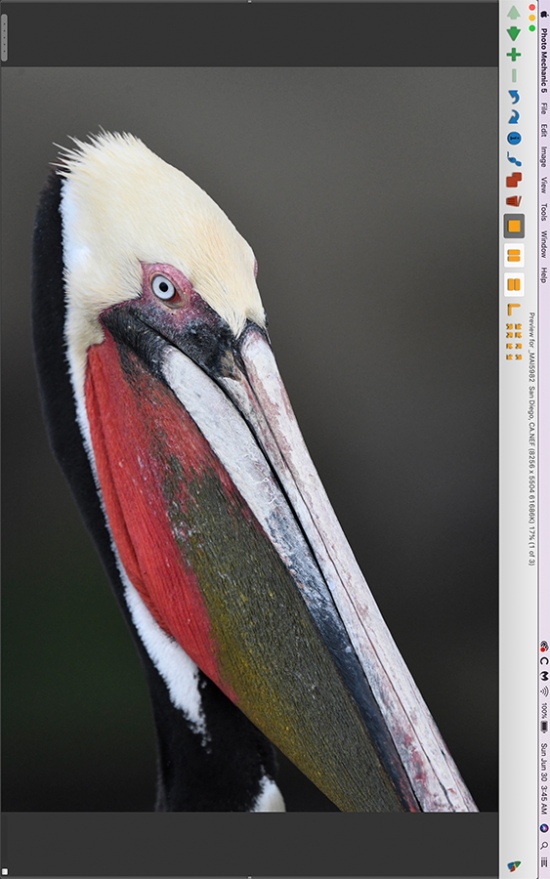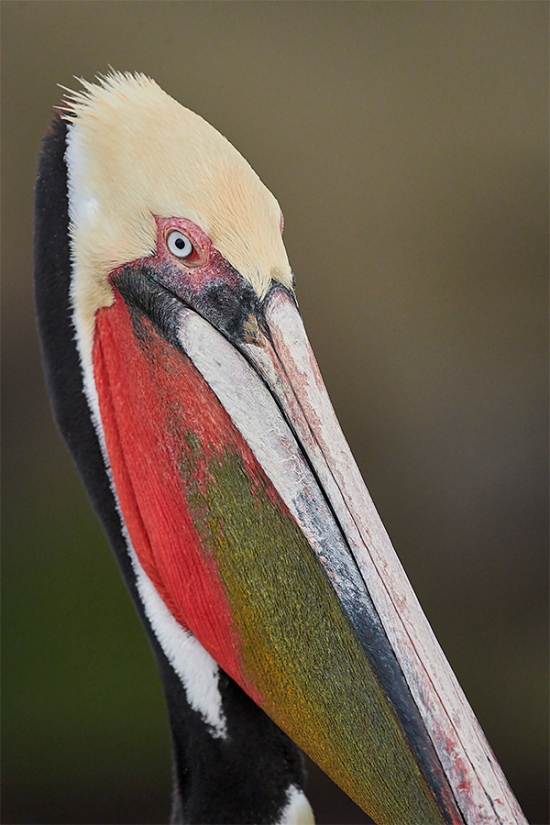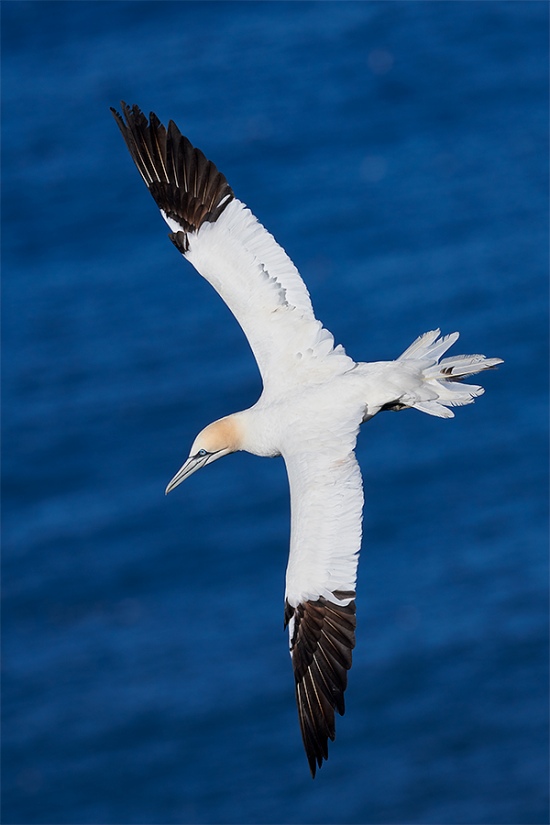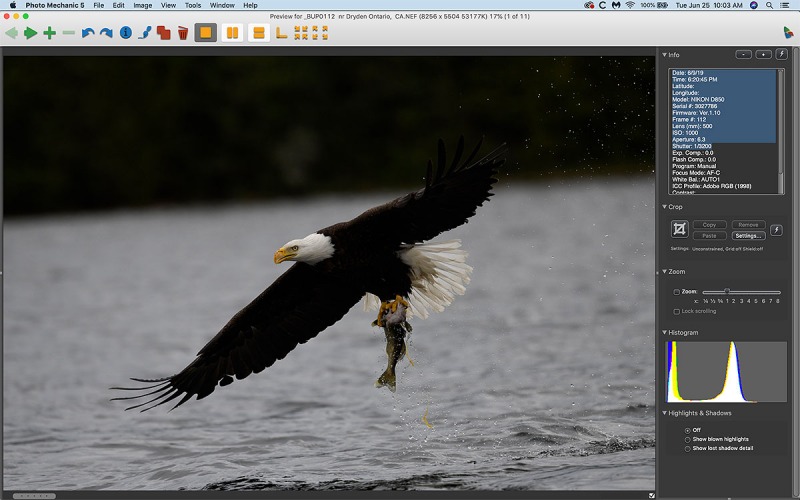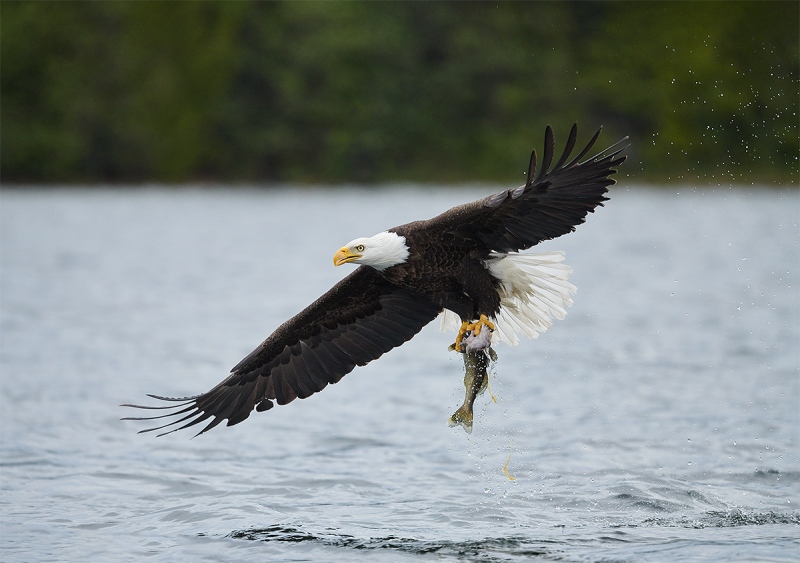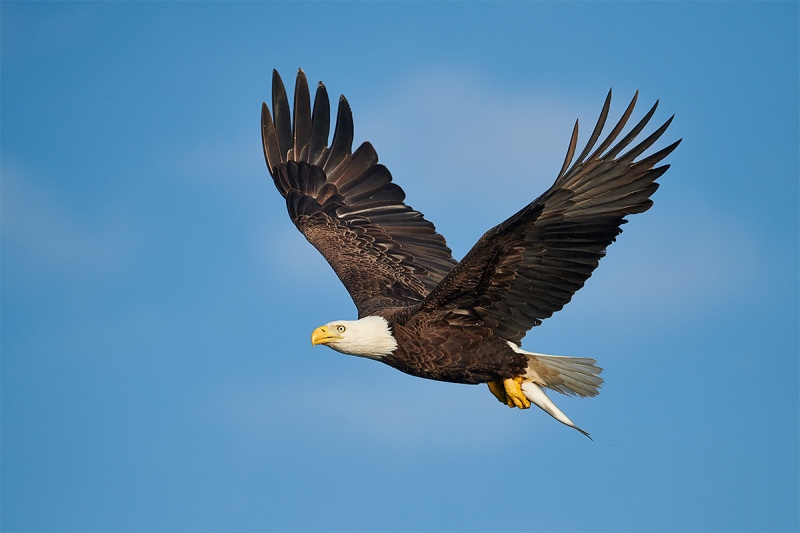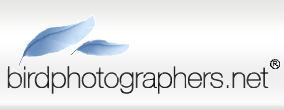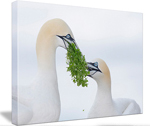July 29th, 2019 What’s Up?
I will be aboard the Samba for two weeks beginning on Tuesday, July 23 photographing in nature photography heaven, the Galapagos archipelago. I will be offline from then until the late afternoon of Tuesday, August 6. You can reach Jim or Jen by phone weekdays at the office (863-692-0906) if you need help with mail order or IPT stuff. The blog will be published at least every other day while I am away.
B&H Event Space Program
I will be doing (another) B&H Event Space Program — Lessons From the Field BIRDS AS ART-Style — on Monday, August 12, 2019, 1:00 to 3:00 PM eastern time. You can register to attend in person or to view the event live online by clicking here. Here is the location: the second floor of B&H NYC SuperStore at 420 9th Avenue, New York NY 10001. Those planning on attending should register asap as spaces are limited.
FlexShooter Pro Update
We currently have FlexShooter Pro heads in stock here. We have all but one of the BigFeet in stock (phone orders only for now: 863-692-0906) but are sold out of the new FLN-60 BigFoot that was recently re-designed for the Nikon 600 VR. Click here to access the pretty much complete FlexShooter Pro story with videos.
BIRDS AS ART
BIRDS AS ART is registered in the U.S. Patent and Trademark Office.
Selling Your Used Photo Gear Through BIRDS AS ART
Selling your used (or like-new) photo gear through the BAA Blog is a great idea. We charge only a 5% commission. One of the more popular used gear for sale sites charged a minimum of 20%. Plus assorted fees! Yikes. They went out of business. And e-Bay fees are now up to 13%. The minimum item price here is $500 (or less for a $25 fee). If you are interested please scroll down here or shoot us an e-mail with the words Items for Sale Info Request cut and pasted into the Subject line :). Stuff that is priced fairly — I offer pricing advice to those who agree to the terms — usually sells in no time flat. Over the past year, we have sold many dozens of items. Do know that prices on some items like the EOS-1D Mark IV, the old Canon 100-400, the old 500mm, the EOS-7D, and the 7D Mark II and the original 400mm DO lens have been dropping steadily. Most recently the price of used Canon 600mm f/L IS II lenses have been dropping like a rock with the introduction of the 600 III. You can always see the current listings by clicking here or on the Used Photo Gear tab on the orange-yellow menu bar near the top of each blog post page.
As used gear sales have slowed a bit in recent months — especially with dSLR bodies, there are lots of great buys right now on the Used Gear Page
Money Saving Reminder
If you need a hot photo item that is out of stock at B&H, would enjoy free overnight shipping, and would like a $50 discount on your first purchase, click here to order and enter the coupon code BIRDSASART at checkout. If you are looking to strike a deal on Canon or Nikon gear (including the big telephotos) or on a multiple item order, contact Steve Elkins via e-mail or on his cell at (479) 381-2592 (Eastern time) and be sure to mention your BIRDSASART coupon code and use it for your online order. Steve currently has several D850s in stock along with a Nikon 600mm f/4 VR. He is taking pre-orders for the new Nikon 500 P and the Nikon Z6 mirrorless camera body.


Gear Questions and Advice
Too many folks attending BAA IPTs and dozens of photographers whom I see in the field and on BPN, are–out of ignorance–using the wrong gear especially when it comes to tripods and more especially, tripod heads… Please know that I am always glad to answer your gear questions via e-mail. Those questions might deal with systems, camera bodies, accessories, and/or lens choices and decisions.
In-the-Field at Nickerson
When I get back from the Galapagos on WED 7 AUG, I will be home for one full day and sleeping two nights in my own bed. That Friday, August 9th, I fly up to Islip to visit family, see Jersey Boys for the fourth time, and do some photography.
|
|
There is lots of great stuff at Nickerson Beach in August
Click on the composite to see a larger version
|
Nickerson Beach In-the-Field Session
All are invited to join me for an In-the-Field photo session or two, or a full day, during the middle of August 2019, as below. We will get to photograph Black Skimmers in flight, dueling in mid-air, and on the beach. With luck, we might get some great stuff on chicks and fledged young as the timing is perfect. We have a good chance to photograph Common Tern and American Oystercatcher, both with fledged young. We should enjoy some good gull photography with herring, great black-backed, and even lesser black-backed. Gull predation of fledged young skimmers is likely. We may also have some good chances with several species of migrant shorebirds, especially Sanderling. It goes without saying that as always, you will learn a ton.
Please contact me via e-mail if you would like to join me. Remember that I will be offline from Tuesday, July 23 until late in the day on WED 7 AUG. Call Jim or Jen weekdays at 863-692-0906 with a credit card in hand to register. I will confirm on THURS 8 AUG.
Morning Sessions: pre-dawn (about 6am) till 9:30am: $400.00
Each session includes a working lunch/Photoshop/Workflow/Image review session. Limit 3.
Available: SAT 10 AUG, TUES 13 AUG, THURS 15 AUG.
Afternoon Sessions: 4:30pm until sunset (at about 8:10pm). Limit 3: $300.00.
Available: TUES 13 AUG or THURS 15 AUG.
Full-Days: $600.00. Limit 3.
Available: TUES 13 AUG or THURS 15 AUG.
Why Delkin Cards?
Whether I am photographing on a bucket-list trip to Snow Hill Island in Antarctica (via Russian icebreaker), or shooting Sandhill Cranes down by the lake near my home, I use and depend only on Delkin cards. Not only does Delkin make a great product, but they also stand behind their stuff (though that is rarely necessary).
I was very lucky to meet Alan Parry, then of Delkin, at a NANPA meeting a zillion years ago, actually some time 2001 or 2002. That was the very dawn of my digital age and I have been using Delkin cards from Day One. Delkin cards are as dependable as they get. I have put Delkin cards in the washing machine without a problem. I have even dropped them in saltwater with the same results. Once at Point Pelee my card spent about 8 hours in a plastic trash bag at a Chinese Restaurant filled with cooking fat, house special fried rice, and spare rib bones. Really. (Management kept insisting that they did not have the card but I persisted until they searched through the trash and found it.) Once I got my hands on the card, I brushed it off and was able to download my killer Red-headed Woodpecker and Baltimore Oriole images without a problem. Really. Just so you know, Delkin cards are made in the USA, right there in Poway, CA.
And as our storage needs have grown, Delkin’s dependability has outpaced the ever-growing flash card sizes (and varieties as well). I can remember well more than a decade ago having a problem with two or three Delkin 32GB cards. For about ten years, I used the Delkin 64GB and 128GB cards (with my Canon gear) that we have long featured in the BAA Online Store (here). During that decade I had a problem with exactly one card. Coincidentally, I was in San Diego at the time. I drove to the Delkin headquarters in Poway, got an instant replacement, and when I got home a few days later, there was a CD with all of the rescued images from the bad card. Now it has been several years with the 128GB cards, several years with 100% perfect, dependable performance.
No matter how poorly you treat your Delkin card, the manufacturer will replace it free of charge. And they will do their very best to recover any images on the card. And they are pretty darned good at that. Several types of Delkin cards offer a 48-hour replacement guarantee.
Premium XQD Cards
You can purchase the world’s best XQD cards in the BAA Online Store by clicking here. Perfect for your Nikon pro bodies!
SD UHS II
You can purchase the world’s best SD UHS II cards in the BAA Online Store by clicking here. These are perfect for all of my SONY bodies and more recently, for the Canon R5.
cFast
You can purchase the world’s best cFast cards in the BAA Online Store by clicking here. These are perfect for your Canon EOS-1D X Mark II bodies.
Compact Flash
You can purchase the world’s best Compact Flash cards in the BAA Online Store by clicking here. Pefect for your older Canon and Nikon bodies.
If In Doubt …
If in doubt about using the BAA B&H affiliate link correctly, you can always start your search by clicking here. Please note that the tracking is invisible. Web orders only. Please, however, remember to shoot me your receipt via e-mail.




Please Remember to use my Affiliate Links and to Visit the BAA Online Store 🙂
To show your appreciation for my continuing efforts here, we ask, as always, that you get in the habit of using my B&H affiliate links on the right side of the blog for all of your photo and electronics purchases. Please check the availability of all photographic accessories in the New BIRDS AS ART Online Store, especially the Mongoose M3.6 tripod head, Wimberley lens plates, Delkin flash cards and accessories, and LensCoat stuff.
As always, we sell only what I have used, have tested, and can depend on. We will not sell you junk. We know what you need to make creating great images easy and fun. And please remember that I am always glad to answer your gear questions via e-mail.
I would, of course, appreciate your using our B&H affiliate links for all of your major gear, video, and electronic purchases. For the photographic stuff mentioned in the paragraph above, and for everything else in the new store, we, meaning BAA, would of course greatly appreciate your business. Here is a huge thank you to the many who have been using our links on a regular basis and those who will be visiting the New BIRDS AS ART Online Store as well.
Facebook
Be sure to like and follow BAA on Facebook by clicking on the logo link upper right.
Typos
In all blog posts and Bulletins, feel free to e-mail or to leave a comment regarding any typos or errors. Just be right :).
July 28th, 2019 What’s Up?
I will be aboard the Samba for two weeks beginning on Tuesday, July 23 photographing in nature photography heaven, the Galapagos archipelago. I will be offline from then until the late afternoon of Tuesday, August 6. You can reach Jim or Jen by phone weekdays at the office (863-692-0906) if you need help with mail order or IPT stuff. The blog will be published at least every other day while I am away.
B&H Event Space Program
I will be doing (another) B&H Event Space Program — Lessons From the Field BIRDS AS ART-Style — on Monday, August 12, 2019, 1:00 to 3:00 PM eastern time. You can register to attend in person or to view the event live online by clicking here. Here is the location: the second floor of B&H NYC SuperStore at 420 9th Avenue, New York NY 10001. Those planning on attending should register asap as spaces are limited.
In-the-Field at Nickerson
When I get back from the Galapagos on WED 7 AUG, I will be home for one full day and sleeping two nights in my own bed. That Friday, August 9th, I fly up to Islip to visit family, see Jersey Boys for the fourth time, and do some photography.
|
|
There is lots of great stuff at Nickerson Beach in August
Click on the composite to see a larger version
|
Nickerson Beach In-the-Field Session
All are invited to join me for an In-the-Field photo session or two, or a full day, during the middle of August 2019, as below. We will get to photograph Black Skimmers in flight, dueling in mid-air, and on the beach. With luck, we might get some great stuff on chicks and fledged young as the timing is perfect. We have a good chance to photograph Common Tern and American Oystercatcher, both with fledged young. We should enjoy some good gull photography with herring, great black-backed, and even lesser black-backed. Gull predation of fledged young skimmers is likely. We may also have some good chances with several species of migrant shorebirds, especially Sanderling. It goes without saying that as always, you will learn a ton.
Please contact me via e-mail if you would like to join me. Remember that I will be offline from Tuesday, July 23 until late in the day on WED 7 AUG. Call Jim or Jen weekdays at 863-692-0906 with a credit card in hand to register. I will confirm on THURS 8 AUG.
Morning Sessions: pre-dawn (about 6am) till 9:30am: $400.00
Each session includes a working lunch/Photoshop/Workflow/Image review session. Limit 3.
Available: SAT 10 AUG, TUES 13 AUG, THURS 15 AUG.
Afternoon Sessions: 4:30pm until sunset (at about 8:10pm). Limit 3: $300.00.
Available: TUES 13 AUG or THURS 15 AUG.
Full-Days: $600.00. Limit 3.
Available: TUES 13 AUG or THURS 15 AUG.
FlexShooter Pro Update
We currently have FlexShooter Pro heads in stock here. We have all but one of the BigFeet in stock (phone orders only for now: 863-692-0906) but are sold out of the new FLN-60 BigFoot that was recently re-designed for the Nikon 600 VR. Click here to access the pretty much complete FlexShooter Pro story with videos.
BIRDS AS ART
BIRDS AS ART is registered in the U.S. Patent and Trademark Office.
Selling Your Used Photo Gear Through BIRDS AS ART
Selling your used (or like-new) photo gear through the BAA Blog is a great idea. We charge only a 5% commission. One of the more popular used gear for sale sites charged a minimum of 20%. Plus assorted fees! Yikes. They went out of business. And e-Bay fees are now up to 13%. The minimum item price here is $500 (or less for a $25 fee). If you are interested please scroll down here or shoot us an e-mail with the words Items for Sale Info Request cut and pasted into the Subject line :). Stuff that is priced fairly — I offer pricing advice to those who agree to the terms — usually sells in no time flat. Over the past year, we have sold many dozens of items. Do know that prices on some items like the EOS-1D Mark IV, the old Canon 100-400, the old 500mm, the EOS-7D, and the 7D Mark II and the original 400mm DO lens have been dropping steadily. Most recently the price of used Canon 600mm f/L IS II lenses have been dropping like a rock with the introduction of the 600 III. You can always see the current listings by clicking here or on the Used Photo Gear tab on the orange-yellow menu bar near the top of each blog post page.
As used gear sales have slowed a bit in recent months — especially with dSLR bodies, there are lots of great buys right now on the Used Gear Page
Money Saving Reminder
If you need a hot photo item that is out of stock at B&H, would enjoy free overnight shipping, and would like a $50 discount on your first purchase, click here to order and enter the coupon code BIRDSASART at checkout. If you are looking to strike a deal on Canon or Nikon gear (including the big telephotos) or on a multiple item order, contact Steve Elkins via e-mail or on his cell at (479) 381-2592 (Eastern time) and be sure to mention your BIRDSASART coupon code and use it for your online order. Steve currently has several D850s in stock along with a Nikon 600mm f/4 VR. He is taking pre-orders for the new Nikon 500 P and the Nikon Z6 mirrorless camera body.


Gear Questions and Advice
Too many folks attending BAA IPTs and dozens of photographers whom I see in the field and on BPN, are–out of ignorance–using the wrong gear especially when it comes to tripods and more especially, tripod heads… Please know that I am always glad to answer your gear questions via e-mail. Those questions might deal with systems, camera bodies, accessories, and/or lens choices and decisions.
|
|
|
This image was created at Nickerson Beach on August 16, 2018. I used the Induro GIT 304L/Mongoose M3.6-mounted Nikon AF-S NIKKOR 600mm f/4E FL ED VR lens, the Nikon AF-S Teleconverter TC-14E III, and the mega mega-pixel Nikon D850 DSLR. ISO 500. Matrix metering at about +1 stop: 1/320 sec. at f/5.6 in Manual mode. AUTO0 WB at 10:35am on a cloudy-bright day.
Three down and one to the left of center d-9 Continuous (C in Nikon/AI Servo with Canon) AF was active at the moment of exposure. The selected AF point was on the center of the squawking bird’s upper breast.
Nikon Focus Peaking fine-tune value: a very significant +8. See the Nikon AF Fine-tune e-Guide here.
Adult Black Skimmer protecting chick from attack
Click on the image to see a larger version.
|
Protective Parent
It is common for adult skimmers to attack all sizes of their neighbors’ chicks. I have seen them smash and bash and even attempt to swallow a small chick. I believe that such attacks are done for the purpose of increasing the odds of their passing on their own genetic material via their offspring. I got lucky here both with the relatively slow shutter speed that was just fast enough to freeze the bill of the protective adult and with the degree of blurring and the nice framing of the left wing of the attacking bird …
I Can’t Help Myself …
After converting this image simply and quickly in Capture One I brought it into Photoshop to do just a bit of beach clean-up. My plan was to eliminate the largest darkest smudges and leave the rest of the small debris … Once I got started, I could not stop. I just love clean backgrounds. And there are still enough gradations in the upper background and texture in the lower background to make me happy. As usual, I used the Patch Tool, the Clone Stamp Tool (for some Protect and Defend work), the Spot Healing Brush Tool, and Content-Aware fill for the clean-up work. That along with some small Quick Masks refined with Regular Layer Masks where a smudge merged with a bird. When you do use Content-Aware Fill, be sure to triple check to see that it has not eliminated all texture. The Patch Tool does much better in that area and can be used to repair small texture-less messes created by Content Aware-Fill.
|
|
The BIRDS AS ART Current Workflow e-Guide (Digital Basics II) and lots more!
You can order your copy from the BAA Online Store here, by sending a Paypal for $40 here, or by calling Jim or Jennifer weekdays at 863-692-0906 with your credit card in hand.
|
The BIRDS AS ART Current Workflow e-Guide (Digital Basics II)
Everything mentioned above (except for Capture One RAW conversions) and tons more — including all of my personalized Keyboard Shortcuts — is covered in detail in the BIRDS AS ART Current Workflow e-Guide (Digital Basics II), an instructional PDF that is sent via e-mail. Learn more and check out the free excerpt in the blog post here. While the new e-Guide reflects my Macbook Pro/Photo Mechanic/DPP 4/Photoshop workflow, folks using a PC and/or BreezeBrowser will also benefit greatly by studying the material on DB II. Do note that you will find the RGB Curves Adjustment Color Balancing tutorial only in the new e-guide. Note: folks working on a PC and/or those who do not want to miss anything Photoshop may wish to purchase the original Digital Basics along with DB II while saving $15 by clicking here to buy the DB Bundle.
The two most recent and many of the older MP4 Photoshop Tutorial videos releases go hand and hand with the information in DB II): Note: all of the videos are now priced at an amazingly low $5.00 each.
- The Wingtip Repairs MP4 Video here.
- The MP4 Crow Cleanup Video here.
Folks who learn well by following along rather than by reading can check out the complete collection of MP 4 Photoshop Tutorial Videos by clicking here.
Though I have become more proficient converting my Nikon RAW (NEF) files in Adobe Camera Raw, I continue to optimize my old Canon images in DPP 4. You can learn how and why I converted (and still convert) nearly all of my Canon digital RAW files in DPP 4 in the DPP 4 RAW Conversion Guide here. And, yes, I still have many Canon images to work on. 🙂 The RAW conversions for all three of today’s featured images was straightforward once I entered my camera/ISO specific recipes (as detailed in the DPP 4 RAW Conversion Guide).
More recently, I have begun converting my Nikon and Sony RAW files in Capture One. Learn more about Capture One Pro 12 and Arash Hazeghi’s “The Nikon Photographers’ Guide to Phase One Capture One Pro e-Guide” in the blog post here. Note: C-1 Pro 12 Works great with SONY ARW (RAW) files too!
You can learn advanced Quick Masking and advanced Layer Masking techniques in APTATS I & II. You can save $15 by purchasing the pair. Folks can learn sophisticated sharpening and (NeatImage) Noise Reduction techniques in the The Professional Post Processing Guide by Arash Hazeghi and edited by yours truly. Please use this link to purchase NeatImage.
To introduce folks to our MP.4 videos and the basics involved in applying more NeatImage noise reduction to the background and less on the subject, I’d be glad to send you a free copy of the Free Noise Reduction Basics MP.4 Video. Simply click to shoot me an e-mail to get your free copy.
|
|
|
Fort DeSoto in fall is rife with tame birds. All of the images in this card were created at Fort DeSoto in either late September or very early October. I hope that you can join me there this September. Click on the composite to enjoy a larger version.
|
The 2019 Fall Sandbar Secrets Fort DeSoto IPT/September 27-30, 2019: One-half and three FULL DAYS: $1499.00. Limit 6.
Afternoon session on Friday September 25 at 4pm. That followed by three full days. We photrograph till sunset on Monday September 30
Fort DeSoto, located just south of St. Petersburg, FL, is a mecca for migrant shorebirds and terns in fall. There they join hundreds of egrets, herons, night-herons, and gulls that winter on the T-shaped peninsula. With luck, we may get to photograph two of Florida’s most desirable shorebird species: Marbled Godwit and Roseate Spoonbill. Black-bellied Plover and Willet are easy. Great Egret, Snowy Egret, Great Blue Heron, Tricolored Heron, and White Ibis are easy as well and we will almost surely come up with a tame Yellow-crowned Night-Heron or two along with some American Oystercatchers. We may very well get to see and photograph the amazing heron/egret hybrid that has been present for four years. We should get to do some Brown Pelican flight photography. In addition, Royal, Sandwich, Forster’s, and Caspian Terns will likely provide us with some good flight opportunities as well. Though not guaranteed, Wood Stork might well be expected. And we will be on the lookout for a migrant passerine fallout in the event of a thunderstorm or two.
On the IPT you will learn:
- 1- The basics and fine points of digital exposure; how to get the right exposure every time after making a single test exposure.
- 2- How and why to work in Manual mode (even if you’re scared of it).
- 3- How to approach free and wild birds without disturbing them.
- 4- Lots about bird behavior and how to use that knowledge to help you create better images.
- 5- To age and identify many species of shorebirds including sandpipers, plovers, dowitchers, and possibly yellowlegs.
- 6- To spot the good situations and to choose the best perspective.
- 7- To see, evaluate, and understand the light.
- 8- To design pleasing images by mastering your camera’s AF system.
- 9- And perhaps most importantly, to evaluate wind and sky conditions and understand how they affect bird photography.
- 10- How and when to access the magical sandbar safely.
- 11- More than you could ever imagine.
Morning sessions will run at least three to 3 1/2 hours, afternoon sessions 2 1/2 to 3 hours. There is never a set schedule on an IPT — we adapt to the conditions. There will be a Photoshop/image review session after lunch (included) each day. That will be followed by Instructor Nap Time. This IPT will run with only a single registrant (though that is not likely to happen). The best airport is Tampa (TPA). Once you register, you will receive an e-mail with the hotel information. Do know that it is always best if IPT folks stay in the same general area (rather than at home or at a friend’s place a good distance away).
Folks attending this IPT will be out in the field early and stay late to take advantage of sunrise and sunset colors; this is pretty much a staple on almost all BIRDS AS ART Instructional Photo-Tours. Doing so will often present unique photographic opportunities, opportunities that will be missed by those who need their beauty rest and those who need to get home for a proper dinner. I really love it when I am leaving the beach at 9:30am on a sunny morning after a great session just as a carful or two of well-rested photographers are arriving …
Payment in full is due now. Credit cards are OK for your $500 deposit. You can register by calling Jim or Jennifer during weekday business hours at 863-692-0906 with a credit card in hand. If you leave a deposit you will receive an e-mail with your balance statement and instructions for sending your balance check. If you wish to pay in full right off the bat, you can make your check out to BIRDS AS ART and send it via US mail here: BIRDS AS ART, PO BOX 7245, Indian Lake Estates, FL 33855. You will receive a confirmation e-mail with detailed instructions, and clothing and gear advice in mid-August. Please remember that we will meet early on Saturday morning. Please shoot me an e-mail if you plan to register or if you have any questions.
IPT veterans and couples or friends signing up together are urged to e-mail for discount information.
Travel Insurance
Travel insurance for both big international trips and US-based IPTs is highly recommended as we never know what life has in store for us. I strongly recommend that you purchase quality travel insurance when you sign up for an IPT. Travel Insurance Services offers a variety of plans and options. Included with the Elite Option or available as an upgrade to the Basic & Plus Options you can also purchase Cancel for Any Reason Coverage that expands the list of reasons for your canceling to include things such as sudden work or family obligation and even a simple change of mind. My family and I use and depend on the great policies offered by TIS whenever we travel. You can learn more here: Travel Insurance Services. Do note that many plans require that you purchase your travel insurance within 14 days of our cashing your deposit check or running your credit card. Whenever purchasing travel insurance, be sure to read the fine print carefully even when dealing with reputable firms like TSI.
If In Doubt …
If in doubt about using the BAA B&H affiliate link correctly, you can always start your search by clicking here. Please note that the tracking is invisible. Web orders only. Please, however, remember to shoot me your receipt via e-mail.




Please Remember to use my Affiliate Links and to Visit the BAA Online Store 🙂
To show your appreciation for my continuing efforts here, we ask, as always, that you get in the habit of using my B&H affiliate links on the right side of the blog for all of your photo and electronics purchases. Please check the availability of all photographic accessories in the New BIRDS AS ART Online Store, especially the Mongoose M3.6 tripod head, Wimberley lens plates, Delkin flash cards and accessories, and LensCoat stuff.
As always, we sell only what I have used, have tested, and can depend on. We will not sell you junk. We know what you need to make creating great images easy and fun. And please remember that I am always glad to answer your gear questions via e-mail.
I would, of course, appreciate your using our B&H affiliate links for all of your major gear, video, and electronic purchases. For the photographic stuff mentioned in the paragraph above, and for everything else in the new store, we, meaning BAA, would of course greatly appreciate your business. Here is a huge thank you to the many who have been using our links on a regular basis and those who will be visiting the New BIRDS AS ART Online Store as well.
Facebook
Be sure to like and follow BAA on Facebook by clicking on the logo link upper right.
Typos
In all blog posts and Bulletins, feel free to e-mail or to leave a comment regarding any typos or errors. Just be right :).
July 26th, 2019 What’s Up?
I will be aboard the Samba for two weeks beginning on Tuesday, July 23 photographing in nature photography heaven, the Galapagos archipelago. I will be offline from then until the late afternoon of Tuesday, August 6. You can reach Jim or Jen by phone weekdays at the office (863-692-0906) if you need help with mail order or IPT stuff. The blog will be published at least every other day while I am away.
B&H Event Space Program
I will be doing (another) B&H Event Space Program — Lessons From the Field BIRDS AS ART-Style — on Monday, August 12, 2019, 1:00 to 3:00 PM eastern time. You can register to attend in person or to view the event live online by clicking here. Here is the location: the second floor of B&H NYC SuperStore at 420 9th Avenue, New York NY 10001. Those planning on attending should register asap as spaces are limited.
FlexShooter Pro Update
We currently have FlexShooter Pro heads in stock here. We have all but one of the BigFeet in stock (phone orders only for now: 863-692-0906) but are sold out of the new FLN-60 BigFoot that was recently re-designed for the Nikon 600 VR. Click here to access the pretty much complete FlexShooter Pro story with videos.
BIRDS AS ART
BIRDS AS ART is registered in the U.S. Patent and Trademark Office.
Selling Your Used Photo Gear Through BIRDS AS ART
Selling your used (or like-new) photo gear through the BAA Blog is a great idea. We charge only a 5% commission. One of the more popular used gear for sale sites charged a minimum of 20%. Plus assorted fees! Yikes. They went out of business. And e-Bay fees are now up to 13%. The minimum item price here is $500 (or less for a $25 fee). If you are interested please scroll down here or shoot us an e-mail with the words Items for Sale Info Request cut and pasted into the Subject line :). Stuff that is priced fairly — I offer pricing advice to those who agree to the terms — usually sells in no time flat. Over the past year, we have sold many dozens of items. Do know that prices on some items like the EOS-1D Mark IV, the old Canon 100-400, the old 500mm, the EOS-7D, and the 7D Mark II and the original 400mm DO lens have been dropping steadily. Most recently the price of used Canon 600mm f/L IS II lenses have been dropping like a rock with the introduction of the 600 III. You can always see the current listings by clicking here or on the Used Photo Gear tab on the orange-yellow menu bar near the top of each blog post page.
As used gear sales have slowed a bit in recent months — especially with dSLR bodies, there are lots of great buys right now on the Used Gear Page
Money Saving Reminder
If you need a hot photo item that is out of stock at B&H, would enjoy free overnight shipping, and would like a $50 discount on your first purchase, click here to order and enter the coupon code BIRDSASART at checkout. If you are looking to strike a deal on Canon or Nikon gear (including the big telephotos) or on a multiple item order, contact Steve Elkins via e-mail or on his cell at (479) 381-2592 (Eastern time) and be sure to mention your BIRDSASART coupon code and use it for your online order. Steve currently has several D850s in stock along with a Nikon 600mm f/4 VR. He is taking pre-orders for the new Nikon 500 P and the Nikon Z6 mirrorless camera body.


Gear Questions and Advice
Too many folks attending BAA IPTs and dozens of photographers whom I see in the field and on BPN, are–out of ignorance–using the wrong gear especially when it comes to tripods and more especially, tripod heads… Please know that I am always glad to answer your gear questions via e-mail. Those questions might deal with systems, camera bodies, accessories, and/or lens choices and decisions.
|
|
|
This image was created on July 6, 2019, on the boat back to Seahouses. I used the handheld Sony FE 100-400mm f/4.5-5.6 GM OSS lens (at 156mm) and the high mega-pixel Sony Alpha a7R III Mirrorless Digital camera body. ISO 800: 1/400 sec. at f/11 in Manual mode. Exposure was determined by Zebras with ISO on the rear dial … AWB at 4:37pm on a partly cloudy afternoon.
Flexible Spot (small)– Continuous AF was active at the moment of exposure. The selected AF point was placed on the child’s right eye.
Click on the image to enjoy a larger version.
Jude Riffe
|
Loving Little Kids
I’ve long had a soft spot for kids, little and otherwise. Whenever I see a cute little kid, I make eye contact with them and make a funny face. Some smile right away. Some are shy. Some are curious. Some think that I am nuts. If they engage me, I make a squeaky sort of quacking-duck sound. Most kids love that. I’ve had a 99.978% success rate with the quacking duck sound. Once, on an IPT, we entered a restaurant. I saw a cute little blond boy about 2 years old. I smiled and made a funny face. He smiled back. Then I made the duck sound. The kid starting crying and screaming and continued to do so for about an hour. But that experience has never stopped me.
On the boat ride back from Staple to Inner Farnes on the recent UK trip, there was a gorgeous blond child on its mom’s lap. I was not sure if it was a boy or a girl. After making eye contact, I played a bit of hide and seek, with me hiding behind my own hand. I squeak-quacked and the child laughed and smiled. I started a conversation with the child’s father, Joshua Riffe. It turns out that he too was from New York City, from Queens. He had worked on cruise ships and while doing so, met his wife-to-be, Rebecca. Justifiably smitten, he moved to the UK and there, they married. Their child was a boy named Jude.
Loving Life
As many folks know, I am quite outgoing, not at all shy. While waiting for my EWR to MCO flight last Wednesday, the man immediately behind me was talking on his cell phone. He had a very sweet, familiar-sounding voice. When he was done, I asked him, “Are you from Brooklyn?” “Jersey” he replied. We chatted a bit and introduced myself. His name was Mitch Friedman.
I asked him where in New Jersey. He said that he was from Fairlawn.
The conversation continued:
am: I have a friend who lives in Fairlawn, Barry Cohen.
HF: I know a Barry Cohen, but there are surely lots of them around.
am: My Barry Cohen loves golf.
HF: So does mine.
am: My Barry Cohen is active in the temple.
HF: So is mine.
am: Mine is married to Faye.
That sealed the deal. Small world as they say. We had a great time chatting. I have learned that being open to serendipitous encounters is a nice way to live and can be quite rewarding as well.
B. Cohen, aka “the Brahma bull” (for his prowess as a beach football fullback), has been a friend since high school. We both attended Brooklyn Polytechnic Institue where we pledged (and became brothers) of Alpha Epsilon Pi fraternity. And we both transferred to Brooklyn College after our first three years at Poly. We remain friends to this day.
Loving Photography
I will often photograph the faces of folks whom I encounter, and that, of course, includes children. Wanting to practice with the SONY a7R iii/100-400 GM on the boat ride out that morning, I had photographed some of the adults on the boat. So it was only natural that I wanted to make some images of Jude. For a 22-month old, he was quite well-behaved and engaging — always smiling, an absolutely delightful kid. Note that because I was working at close range, I stopped down to f/11 for a bit of extra depth of field. I created about 80 photos of Jude, and send a contact sheet of the 20 or so keepers to his parents who were of course delighted. As it turned out, both the parents and I had the very same favorite: today’s featured image. I had fun and so did Jude. And I met some great folks and learned a bit more about my new SONY rig.
|
|
Bosque del Apache 2019 IPTs
Notice the incredible variety of images that you can learn to make by developing your skills and your creative vision on a BAA IPT.
|
2019 Bosque del Apache IPTs
Return to Bosque Reduced Rate Scouting IPT #1. NOV 26-28, 2019 — 3 FULL DAYS: $1199.00. Limit: 8/Openings: 7. Introductory Meet and greet at 7pm on MON 25 NOV.
Return to Bosque IPT #2. NOV 29 (afternoon session thru DEC 4 (morning session) — 5 DAYS (4 full and two half): $2249.00. Limit: 10/Openings: 9. Introductory Meet and greet at 2:00pm on FRI 29 NOV.
I quit going to Bosque several years ago as conditions had worsened each year for several seasons running. My understanding is that things have improved dramatically in recent years. Photography-wise, I know Bosque better than anyone. Join me to learn how wind and sky conditions influence bird photography, how to create dramatic sunrise and sunset silhouettes, how to be in the right place at the right time, and how to create contest-winning blurs. As usual, you will learn to get the right exposure every time, to use your camera’s AF system to create pleasing, balanced image designs, and to improve your flight photography skills.
We should get to photograph many thousands of Snow Geese, more than a few blast-offs, some Ross’s Geese, and lots of Sandhill Cranes in the water, taking flight and flying. Depending on local conditions we may get to shoot some ducks: point-blank American Wigeon and Wood Duck. With any luck, we might enjoy sunrises and sunsets that leave you in tears. Live, eat, and breathe photography with one of (if not the) world’s premier photographic educators at one of his very favorite locations on the planet. Top-notch Photoshop instruction. Join me to learn to think like a pro and to recognize situations and to anticipate them based on the weather. Every time we make a move, I will let you know why. When you get home, applying what you learned will prove to be invaluable.
Both trips will run with only a single registrant. Lunch is included on all full days of each workshop.
Free Morning Session
Sign up for either IPT and enjoy a free morning session on Friday, 29 NOV.
$500 Multiple IPT Discount
Join me for both IPTs and we will be glad to apply a $500 multiple IPT discount.
To Register
To register, send your non-refundable $500 deposit — check made out to BIRDS AS ART — via US Mail to PO Box 7245, Indian Lake Estates, FL 33855. Or call Jim weekdays at 863-692-0906 to put your non-refundable deposit on a credit card. Balances must be paid in full by check no later than three months before the IPT. If you cancel, all but your deposit will be refunded only if the IPT sells out.
Travel Insurance
Travel insurance for both big international trips and US-based IPTs is highly recommended as we never know what life has in store for us. I strongly recommend that you purchase quality travel insurance. Travel Insurance Services offers a variety of plans and options. Included with the Elite Option or available as an upgrade to the Basic & Plus Options you can also purchase Cancel for Any Reason Coverage that expands the list of reasons for your canceling to include things such as sudden work or family obligation and even a simple change of mind. My family and I use and depend on the great policies offered by TIS whenever we travel. You can learn more here: Travel Insurance Services. Do note that many plans require that you purchase your travel insurance within 14 days of our cashing your deposit check or running your credit card. Whenever purchasing travel insurance, be sure to read the fine print carefully even when dealing with reputable firms like TSI.
If In Doubt …
If in doubt about using the BAA B&H affiliate link correctly, you can always start your search by clicking here. Please note that the tracking is invisible. Web orders only. Please, however, remember to shoot me your receipt via e-mail.




Please Remember to use my Affiliate Links and to Visit the BAA Online Store 🙂
To show your appreciation for my continuing efforts here, we ask, as always, that you get in the habit of using my B&H affiliate links on the right side of the blog for all of your photo and electronics purchases. Please check the availability of all photographic accessories in the New BIRDS AS ART Online Store, especially the Mongoose M3.6 tripod head, Wimberley lens plates, Delkin flash cards and accessories, and LensCoat stuff.
As always, we sell only what I have used, have tested, and can depend on. We will not sell you junk. We know what you need to make creating great images easy and fun. And please remember that I am always glad to answer your gear questions via e-mail.
I would, of course, appreciate your using our B&H affiliate links for all of your major gear, video, and electronic purchases. For the photographic stuff mentioned in the paragraph above, and for everything else in the new store, we, meaning BAA, would of course greatly appreciate your business. Here is a huge thank you to the many who have been using our links on a regular basis and those who will be visiting the New BIRDS AS ART Online Store as well.
Facebook
Be sure to like and follow BAA on Facebook by clicking on the logo link upper right.
Typos
In all blog posts and Bulletins, feel free to e-mail or to leave a comment regarding any typos or errors. Just be right :).
July 25th, 2019 What’s Up?
I will be aboard the Samba for two weeks beginning on Tuesday, July 23 photographing in nature photography heaven, the Galapagos archipelago. I will be offline from then until the late afternoon of Tuesday, August 6. You can reach Jim or Jen by phone weekdays at the office (863-692-0906) if you need help with mail order or IPT stuff. The blog will be published at least every other day while I am away.
B&H Event Space Program
I will be doing (another) B&H Event Space Program — Lessons From the Field BIRDS AS ART-Style — on Monday, August 12, 2019, 1:00 to 3:00 PM eastern time. You can register to attend in person or to view the event live online by clicking here. Here is the location: the second floor of B&H NYC SuperStore at 420 9th Avenue, New York NY 10001. Those planning on attending should register asap as spaces are limited.
In-the-Field at Nickerson
When I get back from the Galapagos on WED 7 AUG, I will be home for one full day and sleeping two nights in my own bed. That Friday, August 9th, I fly up to Islip to visit family, see Jersey Boys for the fourth time, and do some photography.
|
|
There is lots of great stuff at Nickerson Beach in August
Click on the composite to see a larger version
|
Nickerson Beach In-the-Field Session
All are invited to join me for an In-the-Field photo session or two, or a full day, during the middle of August 2019, as below. We will get to photograph Black Skimmers in flight, dueling in mid-air, and on the beach. With luck, we might get some great stuff on chicks and fledged young as the timing is perfect. We have a good chance to photograph Common Tern and American Oystercatcher, both with fledged young. We should enjoy some good gull photography with herring, great black-backed, and even lesser black-backed. Gull predation of fledged young skimmers is likely. We may also have some good chances with several species of migrant shorebirds, especially Sanderling. It goes without saying that as always, you will learn a ton.
Please contact me via e-mail if you would like to join me. Remember that I will be offline from Tuesday, July 23 until late in the day on WED 7 AUG. Call Jim or Jen weekdays at 863-692-0906 with a credit card in hand to register. I will confirm on THURS 8 AUG.
Morning Sessions: pre-dawn (about 6am) till 9:30am: $400.00
Each session includes a working lunch/Photoshop/Workflow/Image review session. Limit 3.
Available: SAT 10 AUG, TUES 13 AUG, THURS 15 AUG.
Afternoon Sessions: 4:30pm until sunset (at about 8:10pm). Limit 3: $300.00.
Available: TUES 13 AUG or THURS 15 AUG.
Full-Days: $600.00. Limit 3.
Available: TUES 13 AUG or THURS 15 AUG.
FlexShooter Pro Update
We currently have FlexShooter Pro heads in stock here. We have all but one of the BigFeet in stock (phone orders only for now: 863-692-0906) but are sold out of the new FLN-60 BigFoot that was recently re-designed for the Nikon 600 VR. Click here to access the pretty much complete FlexShooter Pro story with videos.
BIRDS AS ART
BIRDS AS ART is registered in the U.S. Patent and Trademark Office.
Selling Your Used Photo Gear Through BIRDS AS ART
Selling your used (or like-new) photo gear through the BAA Blog is a great idea. We charge only a 5% commission. One of the more popular used gear for sale sites charged a minimum of 20%. Plus assorted fees! Yikes. They went out of business. And e-Bay fees are now up to 13%. The minimum item price here is $500 (or less for a $25 fee). If you are interested please scroll down here or shoot us an e-mail with the words Items for Sale Info Request cut and pasted into the Subject line :). Stuff that is priced fairly — I offer pricing advice to those who agree to the terms — usually sells in no time flat. Over the past year, we have sold many dozens of items. Do know that prices on some items like the EOS-1D Mark IV, the old Canon 100-400, the old 500mm, the EOS-7D, and the 7D Mark II and the original 400mm DO lens have been dropping steadily. Most recently the price of used Canon 600mm f/L IS II lenses have been dropping like a rock with the introduction of the 600 III. You can always see the current listings by clicking here or on the Used Photo Gear tab on the orange-yellow menu bar near the top of each blog post page.
As used gear sales have slowed a bit in recent months — especially with dSLR bodies, there are lots of great buys right now on the Used Gear Page
Money Saving Reminder
If you need a hot photo item that is out of stock at B&H, would enjoy free overnight shipping, and would like a $50 discount on your first purchase, click here to order and enter the coupon code BIRDSASART at checkout. If you are looking to strike a deal on Canon or Nikon gear (including the big telephotos) or on a multiple item order, contact Steve Elkins via e-mail or on his cell at (479) 381-2592 (Eastern time) and be sure to mention your BIRDSASART coupon code and use it for your online order. Steve currently has several D850s in stock along with a Nikon 600mm f/4 VR. He is taking pre-orders for the new Nikon 500 P and the Nikon Z6 mirrorless camera body.


Gear Questions and Advice
Too many folks attending BAA IPTs and dozens of photographers whom I see in the field and on BPN, are–out of ignorance–using the wrong gear especially when it comes to tripods and more especially, tripod heads… Please know that I am always glad to answer your gear questions via e-mail. Those questions might deal with systems, camera bodies, accessories, and/or lens choices and decisions.
|
|
|
This image was created on the morning of August 17, 2018, at Nickerson Beach Park, Long Island, NY. I used the Induro GIT 304L/Mongoose M3.6-mounted Nikon AF-S NIKKOR 600mm f/4E FL ED VR lens and my souped-up Nikon D850 DSLR. ISO 800. Matrix metering at about +1 stop: 1/2500 sec. at f/5 in Manual mode. AUTO1 WB at 10:29am on a cloudy morning.
Nikon Focus Peaking fine-tune value: +5. See the Nikon AF Fine-tune e-Guide here.
Center Group (grp) Continuous (C in Nikon/AI Servo with Canon) AF was active at the moment of exposure. The array was centered on the head of the bird holding the carcass of the chick.
Black Skimmer attempting to feed dead Common Tern nestling to its chick.
Click on the image to enjoy a larger version.
|
A Very Strange Offering …
I was photographing incoming skimmers in flight when I noticed an adult skimmer attempting to feed its totally uninterested chick. It was not until I saw the image on my laptop that I saw that the offering was the carcass of a Common Tern chick. Needless to say, that was a first. I am guessing that fishing was tough … Mid-August is a great time to photograph a great variety of interesting skimmer behaviors.
|
|
|
Fort DeSoto in fall is rife with tame birds. All of the images in this card were created at Fort DeSoto in either late September or very early October. I hope that you can join me there this September. Click on the composite to enjoy a larger version.
|
The 2019 Fall Sandbar Secrets Fort DeSoto IPT/September 27-30, 2019: One-half and three FULL DAYS: $1499.00. Limit 6.
Afternoon session on Friday September 25 at 4pm. That followed by three full days. We photrograph till sunset on Monday September 30
Fort DeSoto, located just south of St. Petersburg, FL, is a mecca for migrant shorebirds and terns in fall. There they join hundreds of egrets, herons, night-herons, and gulls that winter on the T-shaped peninsula. With luck, we may get to photograph two of Florida’s most desirable shorebird species: Marbled Godwit and Roseate Spoonbill. Black-bellied Plover and Willet are easy. Great Egret, Snowy Egret, Great Blue Heron, Tricolored Heron, and White Ibis are easy as well and we will almost surely come up with a tame Yellow-crowned Night-Heron or two along with some American Oystercatchers. We may very well get to see and photograph the amazing heron/egret hybrid that has been present for four years. We should get to do some Brown Pelican flight photography. In addition, Royal, Sandwich, Forster’s, and Caspian Terns will likely provide us with some good flight opportunities as well. Though not guaranteed, Wood Stork might well be expected. And we will be on the lookout for a migrant passerine fallout in the event of a thunderstorm or two.
On the IPT you will learn:
- 1- The basics and fine points of digital exposure; how to get the right exposure every time after making a single test exposure.
- 2- How and why to work in Manual mode (even if you’re scared of it).
- 3- How to approach free and wild birds without disturbing them.
- 4- Lots about bird behavior and how to use that knowledge to help you create better images.
- 5- To age and identify many species of shorebirds including sandpipers, plovers, dowitchers, and possibly yellowlegs.
- 6- To spot the good situations and to choose the best perspective.
- 7- To see, evaluate, and understand the light.
- 8- To design pleasing images by mastering your camera’s AF system.
- 9- And perhaps most importantly, to evaluate wind and sky conditions and understand how they affect bird photography.
- 10- How and when to access the magical sandbar safely.
- 11- More than you could ever imagine.
Morning sessions will run at least three to 3 1/2 hours, afternoon sessions 2 1/2 to 3 hours. There is never a set schedule on an IPT — we adapt to the conditions. There will be a Photoshop/image review session after lunch (included) each day. That will be followed by Instructor Nap Time. This IPT will run with only a single registrant (though that is not likely to happen). The best airport is Tampa (TPA). Once you register, you will receive an e-mail with the hotel information. Do know that it is always best if IPT folks stay in the same general area (rather than at home or at a friend’s place a good distance away).
Folks attending this IPT will be out in the field early and stay late to take advantage of sunrise and sunset colors; this is pretty much a staple on almost all BIRDS AS ART Instructional Photo-Tours. Doing so will often present unique photographic opportunities, opportunities that will be missed by those who need their beauty rest and those who need to get home for a proper dinner. I really love it when I am leaving the beach at 9:30am on a sunny morning after a great session just as a carful or two of well-rested photographers are arriving …
Payment in full is due now. Credit cards are OK for your $500 deposit. You can register by calling Jim or Jennifer during weekday business hours at 863-692-0906 with a credit card in hand. If you leave a deposit you will receive an e-mail with your balance statement and instructions for sending your balance check. If you wish to pay in full right off the bat, you can make your check out to BIRDS AS ART and send it via US mail here: BIRDS AS ART, PO BOX 7245, Indian Lake Estates, FL 33855. You will receive a confirmation e-mail with detailed instructions, and clothing and gear advice in mid-August. Please remember that we will meet early on Saturday morning. Please shoot me an e-mail if you plan to register or if you have any questions.
IPT veterans and couples or friends signing up together are urged to e-mail for discount information.
Travel Insurance
Travel insurance for both big international trips and US-based IPTs is highly recommended as we never know what life has in store for us. I strongly recommend that you purchase quality travel insurance when you sign up for an IPT. Travel Insurance Services offers a variety of plans and options. Included with the Elite Option or available as an upgrade to the Basic & Plus Options you can also purchase Cancel for Any Reason Coverage that expands the list of reasons for your canceling to include things such as sudden work or family obligation and even a simple change of mind. My family and I use and depend on the great policies offered by TIS whenever we travel. You can learn more here: Travel Insurance Services. Do note that many plans require that you purchase your travel insurance within 14 days of our cashing your deposit check or running your credit card. Whenever purchasing travel insurance, be sure to read the fine print carefully even when dealing with reputable firms like TSI.
If In Doubt …
If in doubt about using the BAA B&H affiliate link correctly, you can always start your search by clicking here. Please note that the tracking is invisible. Web orders only. Please, however, remember to shoot me your receipt via e-mail.




Please Remember to use my Affiliate Links and to Visit the BAA Online Store 🙂
To show your appreciation for my continuing efforts here, we ask, as always, that you get in the habit of using my B&H affiliate links on the right side of the blog for all of your photo and electronics purchases. Please check the availability of all photographic accessories in the New BIRDS AS ART Online Store, especially the Mongoose M3.6 tripod head, Wimberley lens plates, Delkin flash cards and accessories, and LensCoat stuff.
As always, we sell only what I have used, have tested, and can depend on. We will not sell you junk. We know what you need to make creating great images easy and fun. And please remember that I am always glad to answer your gear questions via e-mail.
I would, of course, appreciate your using our B&H affiliate links for all of your major gear, video, and electronic purchases. For the photographic stuff mentioned in the paragraph above, and for everything else in the new store, we, meaning BAA, would of course greatly appreciate your business. Here is a huge thank you to the many who have been using our links on a regular basis and those who will be visiting the New BIRDS AS ART Online Store as well.
Facebook
Be sure to like and follow BAA on Facebook by clicking on the logo link upper right.
Typos
In all blog posts and Bulletins, feel free to e-mail or to leave a comment regarding any typos or errors. Just be right :).
July 24th, 2019 What’s Up?
I will be aboard the Samba for two weeks beginning on Tuesday, July 23 photographing in nature photography heaven, the Galapagos archipelago. I will be offline from then until the late afternoon of Tuesday, August 6. You can reach Jim or Jen by phone weekdays at the office (863-692-0906) if you need help with mail order or IPT stuff. The blog will be published at least every other day while I am away.
B&H Event Space Program
I will be doing (another) B&H Event Space Program — Lessons From the Field BIRDS AS ART-Style — on Monday, August 12, 2019, 1:00 to 3:00 PM eastern time. You can register to attend in person or to view the event live online by clicking here. Here is the location: the second floor of B&H NYC SuperStore at 420 9th Avenue, New York NY 10001. Those planning on attending should register asap as spaces are limited.
FlexShooter Pro Update
We currently have FlexShooter Pro heads in stock here. We have all but one of the BigFeet in stock (phone orders only for now: 863-692-0906) but are sold out of the new FLN-60 BigFoot that was recently re-designed for the Nikon 600 VR. Click here to access the pretty much complete FlexShooter Pro story with videos.
BIRDS AS ART
BIRDS AS ART is registered in the U.S. Patent and Trademark Office.
Selling Your Used Photo Gear Through BIRDS AS ART
Selling your used (or like-new) photo gear through the BAA Blog is a great idea. We charge only a 5% commission. One of the more popular used gear for sale sites charged a minimum of 20%. Plus assorted fees! Yikes. They went out of business. And e-Bay fees are now up to 13%. The minimum item price here is $500 (or less for a $25 fee). If you are interested please scroll down here or shoot us an e-mail with the words Items for Sale Info Request cut and pasted into the Subject line :). Stuff that is priced fairly — I offer pricing advice to those who agree to the terms — usually sells in no time flat. Over the past year, we have sold many dozens of items. Do know that prices on some items like the EOS-1D Mark IV, the old Canon 100-400, the old 500mm, the EOS-7D, and the 7D Mark II and the original 400mm DO lens have been dropping steadily. Most recently the price of used Canon 600mm f/L IS II lenses have been dropping like a rock with the introduction of the 600 III. You can always see the current listings by clicking here or on the Used Photo Gear tab on the orange-yellow menu bar near the top of each blog post page.
As used gear sales have slowed a bit in recent months — especially with dSLR bodies, there are lots of great buys right now on the Used Gear Page
Money Saving Reminder
If you need a hot photo item that is out of stock at B&H, would enjoy free overnight shipping, and would like a $50 discount on your first purchase, click here to order and enter the coupon code BIRDSASART at checkout. If you are looking to strike a deal on Canon or Nikon gear (including the big telephotos) or on a multiple item order, contact Steve Elkins via e-mail or on his cell at (479) 381-2592 (Eastern time) and be sure to mention your BIRDSASART coupon code and use it for your online order. Steve currently has several D850s in stock along with a Nikon 600mm f/4 VR. He is taking pre-orders for the new Nikon 500 P and the Nikon Z6 mirrorless camera body.


Gear Questions and Advice
Too many folks attending BAA IPTs and dozens of photographers whom I see in the field and on BPN, are–out of ignorance–using the wrong gear especially when it comes to tripods and more especially, tripod heads… Please know that I am always glad to answer your gear questions via e-mail. Those questions might deal with systems, camera bodies, accessories, and/or lens choices and decisions.
|
|
|
This image was created on June 2, 2019, down by the lake near my home at Indian Lake Estates, FL. I used the handheld Nikon AF-S NIKKOR 500mm f/5.6E PF ED VR lens and my souped-up Nikon D850. AUTO ISO: 400. Matrix metering at about +1/3 stop: 1/1000 sec. at f/8 in Manual mode. AUTO1 WB at 7:39am on a sunny day.
3-D tracking Continuous AF was active at the moment of exposure. It selected an AF point on the base of the neck, right on the same plane as the preening bird’s eye.
Preening adult Sandhill Crane
Click on the image to enjoy a larger version.
|
They Paved Paradise and Put Up a Parking Lot
From Big Yellow Taxi by Joni Mitchell; listen on YouTube here.
Can You Make a Good Image in a Parking Lot?
As seen by today’s featured image, parking lots can provide lovely, soft, studio-like backgrounds if you choose your perspective carefully. I have made lots of good gull photographs from a vehicle in various parking lots. Sometimes I use the lane-lines as part of the composition, but most of the time I try to avoid those. At times, lying flat down on the asphalt or concrete is the way to go.
3D AF
I was experimenting with 3D (all points) AF when I made this image. I moved the selected point up and to the right, watched as it danced around a bit, and pressed the shutter button when the point was on the same plane as the eye. Though it worked quite well here, I have not used it much since then. Some folks love 3D for flight but I have done so well with Group on flying birds that I have not tried 3d at all in flight situations.
|
|
|
This image was also created on June 2, 2019, down by the lake near my home at Indian Lake Estates, FL. For this wider shot I used the handheld Sony FE 100-400mm f/4.5-5.6 GM OSS lens (at 100mm) and the mega mega-pixel Sony Alpha a7R III.. ISO: 200. Exposure set via the Zebra feature with Multi Metering: 1/500 sec. at f/8 in Manual mode. AWB at 7:44am on a clear sunny morning.
Continuous center Zone AF.
Sandhill Crane in small parking lot. Pier in background.
|
Point Your Shadow at the What?
When working with frontal lighting on a sunny day, it is almost always best to point your shadow directly at the subject so that parts of the bird’s body do not cast shadows on the bird itself. When you opt to work off sun angle, you will usually introduce a host of problems. The further off sun-angle you are, the worse the problems will be. Usually. Note: when you are 180 degrees off sun angle you can make some nice backlit or silhouetted images.
Choosing My Perspective
Note that when I made today’s featured image I needed to get the lens high enough to avoid the oil stains in the background …
|
|
The BAA Middle of Florida Photographic Site Guide
You can purchase your copy here in the BAA Online Store.
|
The BAA Middle of Florida Photographic Site Guide
126 pages, 87 photographs by Joe Przybyla and Arthur Morris.
The PDF for this e-Guide is an electronic download sent via e-mail.
Purchase your copy here in the BAA Online Store.
I had thought about doing a guide to some of the great but little-known photo hotspots around central Florida for about a decade, but those plans never came to fruition. I met Joe online in the Avian Forum at BirdPhotographer’s.Net about two years ago. Joe’s photography has improved tremendously over the past few years; he credits the BAA blog, my books and PDFs, and his participation on BPN. The one thing that I learned right from the get-go about Joe is that he is a hard and tenacious worker, always striving to improve his skills and to grow his knowledge base. As he knew of more than a few good spots in central Florida, I broached the idea of us doing a photographic site guide that covered many of the little-known photographic hotspots from Brandon to Lakeland to Joe Overstreet Road to Indian Lake Estates (my Florida home for the past 20 years or so). After more than many, many dozens of hours of effort, The BIRDS AS ART Middle of Florida Photographic Site Guide is now a reality. Thanks to Joe’s wife Dottie for her review of our writing. We all learned once again that writing is a process, a back and forth process. All thanks to the white pelicans of Lakeland. Here are the locations that are detailed in this e-Guide:
- Indian Lake Estates: Sandhills Cranes with chicks and colts, lots of vultures, and Ospreys up the kazoo!
- Gatorland, Kissimmee: Learn to make great images of wading birds in a cluttered rookery.
- The Brandon Rookery: Great for nesting Wood Storks, Great Egrets, and more.
- Circle Bar B Reserve, Lakeland: Here you will find a great variety of avian subjects in a great variety of habitats.
- Lake Morton, Lakeland: There are lots of silly tame birds here including and especially American White Pelican during the colder months.
- Lake Mirror, Lakeland: Tame Anhingas, Limpkins, and a zillion White Ibises at times.
- West Lake Parker, Lakeland: Here you will have a chance for two difficult birds, Snail Kite, and Purple Gallinule.
- Joe Overstreet Road, Kenansville: Crested Caracara, meadowlarks, Loggerhead Shrike, and much more on the fenceposts and barbed wire.
Each location includes a map, a detailed description of the best spots, best season, light and time of day instructions, the expected species, and an educational and inspirational gallery that is designed to open your eyes as to the possibilities.
You can purchase a copy here in the BAA Online Store.
|
|
|
San Diego offers a wealth of very attractive natural history subjects, including and especially the Pacific race of California Brown Pelican. With annual visits spanning more than four decades, I have lots of photographic experience there … Click on the composite to enjoy a larger version.
|
The 2020 San Diego 4 1/2-DAY BIRDS AS ART Instructional Photo-Tour (IPT) WED JAN 8, 2020 thru and including the morning session on SUN JAN 12: 4 1/2 days: $2099.(Limit: 8/Openings: 6)
Introductory Meet and Greet at 7:00pm on the evening before the IPT begins; WED JAN 7, 2020.
Join me in San Diego to photograph the spectacular breeding plumage Brown Pelicans with their fire-engine red and olive green bill pouches; Brandt’s (nesting with eggs and possibly chicks) and Double-crested Cormorants; breeding plumage Wood and Ring-necked Duck; other duck species possible including Lesser Scaup, Redhead, and Surf Scoter; a variety of gulls including Western, California, and the gorgeous Heermann’s, all in full breeding plumage; shorebirds including Marbled Godwit, Willet, Sanderling and Black-bellied Plover; many others are possible including Least, Western, and Spotted Sandpiper, Whimbrel, Black and Ruddy Turnstone, Semipalmated Plover, and Surfbird; Harbor Seals (depending on the current regulations) and California Sea Lions; and Bird of Paradise flowers. And as you can see by studying the IPT cards, there are some nice bird-scape and landscape opportunities as well. Not to mention a ton of excellent flight photography opportunities and instruction.
Please note: where permitted and on occasion, ducks and gulls may be attracted (or re-located) with offerings of grains or healthy bread.
Learning Exposure, Whether You Like It Or Not
Whether you like it or not, we will be beating the subject of exposure like a dead horse. In every new situation, you will hear my thoughts on the exposure situation along with my thoughts on both Nikon and Canon histograms and the subject of blinkies. Whether you like it or not, you will learn to work in manual mode and to get the right exposure every time as long as a bird gives you ten seconds with the light constant. And you will learn what to do when the light is changing constantly. What you learn about exposure will be one of the great takeaways on every IPT.
|
|
|
Though the pelicans will be the stars of the show on this IPT, there will be many other handsome and captivating subjects in wonderful settings. Click on the composite to enjoy a larger version.
|
It Ain’t Just Pelicans
With gorgeous subjects just sitting there waiting to have their pictures taken, photographing the pelicans on the cliffs is about as easy as nature photography gets. With the winds from the east almost every morning there is usually some excellent flight photography as well. And the pelicans are almost always doing something interesting: preening, scratching, bill pouch cleaning, or squabbling. And then there are those crazy head throws that are thought to be a form of intra-flock communication. You will be guided as to how to make the best of all of those opportunities. And depending on the weather and local conditions and tides, there are a variety of fabulous photo chances available in and around San Diego.
|
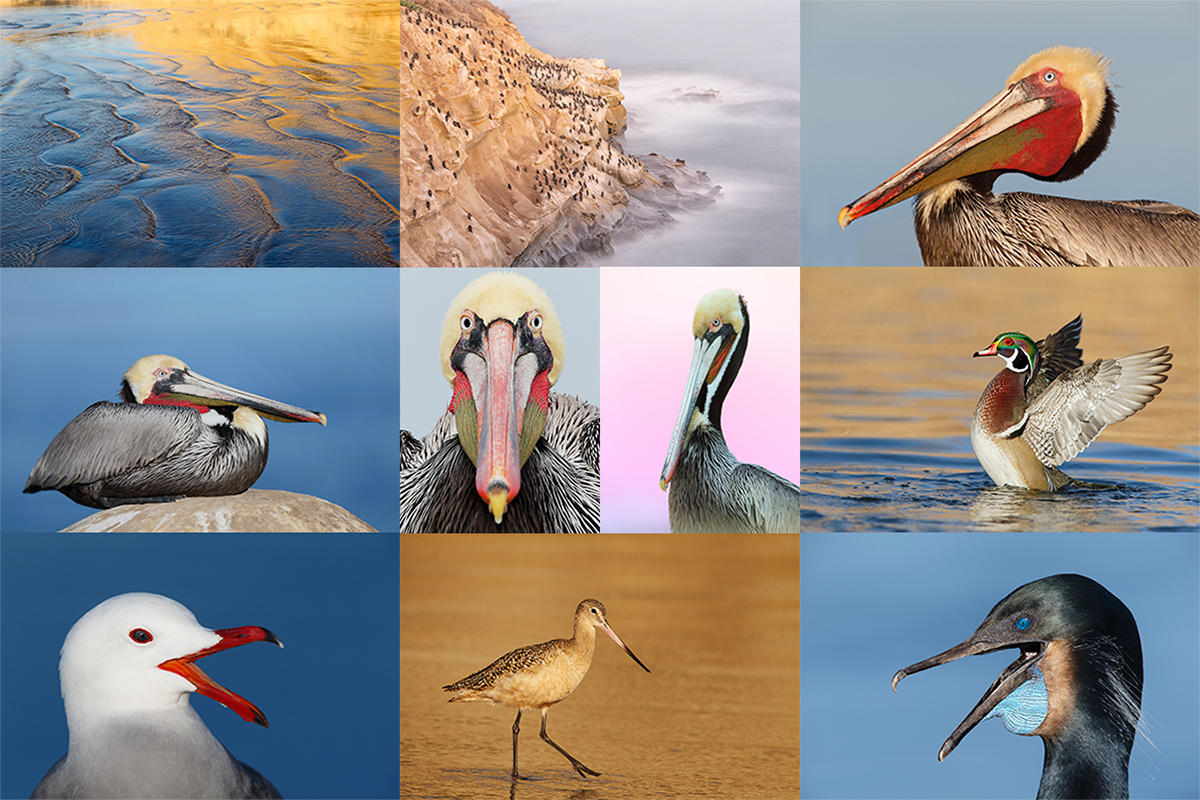
|
|
Did I mention that there are lots of great birds and natural history subjects in San Diego in winter? Click on the composite to enjoy a larger version.
|
The San Diego Details
This IPT will include five 3 1/2 hour morning photo sessions, four 2 1/2 hour afternoon photo sessions, four lunches, and after-lunch image review and Photoshop sessions. To ensure early starts, breakfasts will be your responsibility. And so that we can get some sleep, dinners will be on your own.
A $599 non-refundable deposit is required to hold your slot for this IPT. You can send a check (made out to “Arthur Morris) to us at BIRDS AS ART, PO Box 7245, Indian Lake Estates, FL, 3385, or call Jim or Jennifer at the office with a credit card at 863-692-0906. Your balance, payable only by check, will be due on 10/11//2018. If we do not receive your check for the balance on or before the due date we will try to fill your spot from the waiting list. Please print, complete, and sign the form that is linked to here and shoot it to us along with your deposit check. If you register by phone, please print, complete and sign the form as noted above and either mail it to us or e-mail the scan. If you have any questions, please feel free to contact me via e-mail.
Travel Insurance
Travel insurance for both big international trips and US-based IPTs is highly recommended as we never know what life has in store for us. I strongly recommend that you purchase quality travel insurance. Travel Insurance Services offers a variety of plans and options. Included with the Elite Option or available as an upgrade to the Basic & Plus Options you can also purchase Cancel for Any Reason Coverage that expands the list of reasons for your canceling to include things such as sudden work or family obligation and even a simple change of mind. My family and I use and depend on the great policies offered by TIS whenever we travel. You can learn more here: Travel Insurance Services. Do note that many plans require that you purchase your travel insurance within 14 days of our cashing your deposit check or running your credit card. Whenever purchasing travel insurance, be sure to read the fine print carefully even when dealing with reputable firms like TSI.
|
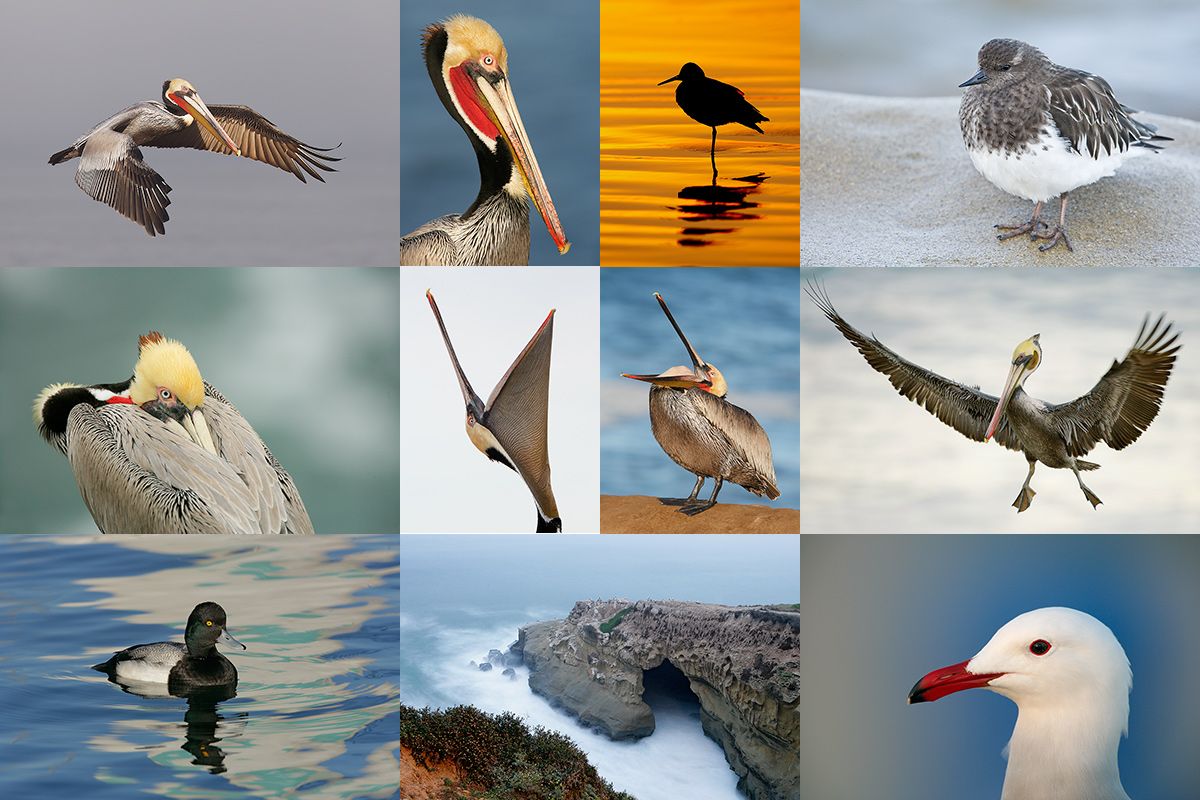
|
|
Variety is surely the spice of life in San Diego. Click on the composite to enjoy a larger version.
|
Getting Up Early and Staying Out Late
On all BIRDS AS ART IPTS including and especially the San Diego IPT, we get into the field early to take advantage of unique and often spectacular lighting conditions and we stay out late to maximize the chances of killer light and glorious sunset silhouette situations. We often arrive at the cliffs a full hour before anyone else shows up to check out the landscape and seascape opportunities.
If In Doubt …
If in doubt about using the BAA B&H affiliate link correctly, you can always start your search by clicking here. Please note that the tracking is invisible. Web orders only. Please, however, remember to shoot me your receipt via e-mail.




Please Remember to use my Affiliate Links and to Visit the BAA Online Store 🙂
To show your appreciation for my continuing efforts here, we ask, as always, that you get in the habit of using my B&H affiliate links on the right side of the blog for all of your photo and electronics purchases. Please check the availability of all photographic accessories in the New BIRDS AS ART Online Store, especially the Mongoose M3.6 tripod head, Wimberley lens plates, Delkin flash cards and accessories, and LensCoat stuff.
As always, we sell only what I have used, have tested, and can depend on. We will not sell you junk. We know what you need to make creating great images easy and fun. And please remember that I am always glad to answer your gear questions via e-mail.
I would, of course, appreciate your using our B&H affiliate links for all of your major gear, video, and electronic purchases. For the photographic stuff mentioned in the paragraph above, and for everything else in the new store, we, meaning BAA, would of course greatly appreciate your business. Here is a huge thank you to the many who have been using our links on a regular basis and those who will be visiting the New BIRDS AS ART Online Store as well.
Facebook
Be sure to like and follow BAA on Facebook by clicking on the logo link upper right.
Typos
In all blog posts and Bulletins, feel free to e-mail or to leave a comment regarding any typos or errors. Just be right :).
July 23rd, 2019 What’s Up?
We had a great afternoon with the Green Iguanas at the Iguana Park in Guayaquil, Ecuador on Monday. After watching the first draft of Patrick Sparkman’s a7R iii/SONY a/9 video, I am getting much much better and feeling much more comfortable using the a7R iii. Based on his suggestions, I made several important changes to my set-up that tremendously improved the handling and performance of the camera with the 100-400 GM.
We fly to the archipelago today. I look forward to seeing you all again here in two weeks. If you would like to chime in on what photo gear you would bring on a bucket list trip to the Galapagos, please see yesterday’s blog post here.
B&H Event Space Program
I will be doing (another) B&H Event Space Program — Lessons From the Field BIRDS AS ART-Style — on Monday, August 12, 2019, 1:00 to 3:00 PM eastern time. You can register to attend in person or to view the event live online by clicking here. Here is the location: the second floor of B&H NYC SuperStore at 420 9th Avenue, New York NY 10001. Those planning on attending should register asap as spaces are limited.
July 22nd, 2019 What’s Up?
If everything goes as planned, I will be resting comfortably in the hotel in Guayaquil, Ecuador or photographing large Land Iguanas at a city park there when you read this. On Tuesday, the group and I continue on to Baltra. We will board the Samba that afternoon for two weeks in nature photography heaven, the Galapagos archipelago. I will be offline from Tuesday, July 23 until the late afternoon of Tuesday, August 6. You can reach Jim or Jen by phone at the office (863-692-0906) weekdays if you need help with mail order or IPT stuff. The blog will be published at least every other day while I am away.
In-the-Field at Nickerson
When I get back from the Galapagos on WED 7 AUG, I will be home for one full day and sleeping two nights in my own bed. That Friday, August 9th, I fly up to Islip to visit family, see Jersey Boys for the fourth time, and do some photography.
|
|
There is lots of great stuff at Nickerson Beach in August
Click on the composite to see a larger version
|
Nickerson Beach In-the-Field Session
All are invited to join me for an In-the-Field photo session or two, or a full day, during the middle of August 2019, as below. We will get to photograph Black Skimmers in flight, dueling in mid-air, and on the beach. With luck, we might get some great stuff on chicks and fledged young as the timing is perfect. We have a good chance to photograph Common Tern and American Oystercatcher, both with fledged young. We should enjoy some good gull photography with herring, great black-backed, and even lesser black-backed. Gull predation of fledged young skimmers is likely. We may also have some good chances with several species of migrant shorebirds, especially Sanderling. It goes without saying that as always, you will learn a ton.
Please contact me via e-mail if you would like to join me. Remember that I will be offline from Tuesday, July 23 until late in the day on WED 7 AUG. Call Jim or Jen weekdays at 863-692-0906 with a credit card in hand to register. I will confirm on THURS 8 AUG.
Morning Sessions: pre-dawn (about 6am) till 9:30am: $400.00
Each session includes a working lunch/Photoshop/Workflow/Image review session. Limit 3.
Available: SAT 10 AUG, TUES 13 AUG, THURS 15 AUG.
Afternoon Sessions: 4:30pm until sunset (at about 8:10pm). Limit 3: $300.00.
Available: TUES 13 AUG or THURS 15 AUG.
Full-Days: $600.00. Limit 3.
Available: TUES 13 AUG or THURS 15 AUG.
FlexShooter Pro Update
We currently have FlexShooter Pro heads in stock here. We have all but one of the BigFeet in stock (phone orders only for now: 863-692-0906) but are sold out of the new FLN-60 BigFoot that was recently re-designed for the Nikon 600 VR. Click here to access the pretty much complete FlexShooter Pro story with videos.
BIRDS AS ART
BIRDS AS ART is registered in the U.S. Patent and Trademark Office.
Money Saving Reminder
If you need a hot photo item that is out of stock at B&H, would enjoy free overnight shipping, and would like a $50 discount on your first purchase, click here to order and enter the coupon code BIRDSASART at checkout. If you are looking to strike a deal on Canon or Nikon gear (including the big telephotos) or on a multiple item order, contact Steve Elkins via e-mail or on his cell at (479) 381-2592 (Eastern time) and be sure to mention your BIRDSASART coupon code and use it for your online order. Steve currently has several D850s in stock along with a Nikon 600mm f/4 VR. He is taking pre-orders for the new Nikon 500 P and the Nikon Z6 mirrorless camera body.


Gear Questions and Advice
Too many folks attending BAA IPTs and dozens of photographers whom I see in the field and on BPN, are–out of ignorance–using the wrong gear especially when it comes to tripods and more especially, tripod heads… Please know that I am always glad to answer your gear questions via e-mail. Those questions might deal with systems, camera bodies, accessories, and/or lens choices and decisions.
My Galapagos Gear Bag
The big news here is that my Nikon AF-S NIKKOR 600mm f/4E FL ED VR lens is staying home on the shelf. I brought the big lens to the UK and used it a grand total of zero times. Hand-holding the Nikon 500 PF or the SONY 100-400 is an exercise of freedom. Not having to lug a big tripod and the big lens was a pleasure that I enjoyed immensely. Though I have brought a variety of long, fast lenses to the archipelago on past trips — I think that this is my ninth — yes, I’ve been blessed, the decision to go ultra-light this year was an easy one. Many of the birds and animals are silly tame, and the last time I checked I was 73 and counting.
That said, several IPT participants are taking their big glass along; there will be two 600s, one 800, and at least one 500mm, all Canon.
My Nikon Kit
I will be taking the Nikon AF-S NIKKOR 500mm f/5.6E PF ED VR lens, my main and my backup Nikon D850s, and two Nikon AF-S TC-14E III teleconverters. I will also be taking the Nikon AF-S NIKKOR 70-200mm f/4G ED VR lens. I opted to leave the versatile Nikon AF-S NIKKOR 24-120mm f/4G ED VR lens at home; I am not much of a short lens scenic guy.
My SONY Kit
I will be taking all of my SONY gear on the trip. First and foremost will be the versatile, close-focusing Sony FE 100-400mm f/4.5-5.6 GM OSS lens along with both teleconverters, the Sony FE 1.4x and the Sony FE 2.0x.. I will be taking both of my SONY bodies, the vaunted Sony Alpha a9 to use in pure flight situations, and the mega-mega pixel Sony Alpha a7R III for everything else.
All of the lens hoods and the removable foot/lens plate combinations along with the relatively light Induro GIT 204L tripod will be in one of my two checked bags. Having completely forsaken my Mongoose M3.6, my FlexShooter Pro tripod head will also be in one of my two checked bags, safely cushioned by lots of clothing.
Think Tank Rolling Bags
All of the Nikon and SONY lenses, camera bodies, and TCs noted above along with spare batteries and my Delkin CF Memory tote fit easily into the smaller of my two Think Tank rolling bags, the Airport International™ V3.0. Fully packed the bag weighed a relatively svelte 32 1/4 pounds, well below the US legal carry-on limit of 40 pounds. When I travel with the 600, I need the larger of my two Think Tank bags, the Airport Security™ V 2.0 Rolling Camera Bag.
Please click on my Think Tank affiliate link here or on the Think Tank logo-link in the right column of each blog post page to earn a free gift when you purchase any Think Tank product.
Think Tank Urban Disguise Laptop Shoulder Bag
I love this amazing bag as it has tons of room and enables me to pack tons of extra stuff (including and especially my laptop, all the cords, my insulin and frozen gel packs, and my blood sugar meter.
Please click on my Think Tank affiliate link here or on the Think Tank logo-link in the right column of each blog post page to earn a free gift when you purchase any Think Tank product.
My Strategies …
On some landings (and some zodiac rides), I plan on taking the Nikon 500 PF with my souped-up D850 and the SONY 100-400 along with one or two SONY bodies. At times, I might go with the Nikon 500 PF, the Nikon 70-200 f/4, and two D850s. My final option would be to go only SONY. The knowledge I have garnered over the past 15 or so years of visiting the Galapagos will help me to fine-tune my gear choices for each landing.
What Would You Take on a Galapagos Trip?
Feel free to leave a comments lettng us know what gear you would take on a Bucket List trip to the Galapagos.
If In Doubt …
If in doubt about using the BAA B&H affiliate link correctly, you can always start your search by clicking here. Please note that the tracking is invisible. Web orders only. Please, however, remember to shoot me your receipt via e-mail.




Please Remember to use my Affiliate Links and to Visit the BAA Online Store 🙂
To show your appreciation for my continuing efforts here, we ask, as always, that you get in the habit of using my B&H affiliate links on the right side of the blog for all of your photo and electronics purchases. Please check the availability of all photographic accessories in the New BIRDS AS ART Online Store, especially the Mongoose M3.6 tripod head, Wimberley lens plates, Delkin flash cards and accessories, and LensCoat stuff.
As always, we sell only what I have used, have tested, and can depend on. We will not sell you junk. We know what you need to make creating great images easy and fun. And please remember that I am always glad to answer your gear questions via e-mail.
I would, of course, appreciate your using our B&H affiliate links for all of your major gear, video, and electronic purchases. For the photographic stuff mentioned in the paragraph above, and for everything else in the new store, we, meaning BAA, would of course greatly appreciate your business. Here is a huge thank you to the many who have been using our links on a regular basis and those who will be visiting the New BIRDS AS ART Online Store as well.
Facebook
Be sure to like and follow BAA on Facebook by clicking on the logo link upper right.
Typos
In all blog posts and Bulletins, feel free to e-mail or to leave a comment regarding any typos or errors. Just be right :).
July 21st, 2019 What’s Up?
I spent most of Saturday finishing packing for the Galapagos IPT. The next blog post will feature my gear bag. I fly to Guayaquil, Ecudaor on Sunday and continue on to Baltra on Tuesday. We will board the Samba that afternoon for two weeks in nature photography heaven.
FlexShooter Pro Update
We currently have FlexShooter Pro heads in stock here. We have all but one of the BigFeet in stock (phone orders only for now: 863-692-0906) but are sold out of the new FLN-60 BigFoot that was recently re-designed for the Nikon 600 VR. Click here to access the pretty much complete FlexShooter Pro story with videos.
BIRDS AS ART
BIRDS AS ART is registered in the U.S. Patent and Trademark Office.
Selling Your Used Photo Gear Through BIRDS AS ART
Selling your used (or like-new) photo gear through the BAA Blog is a great idea. We charge only a 5% commission. One of the more popular used gear for sale sites charged a minimum of 20%. Plus assorted fees! Yikes. They went out of business. And e-Bay fees are now up to 13%. The minimum item price here is $500 (or less for a $25 fee). If you are interested please scroll down here or shoot us an e-mail with the words Items for Sale Info Request cut and pasted into the Subject line :). Stuff that is priced fairly — I offer pricing advice to those who agree to the terms — usually sells in no time flat. Over the past year, we have sold many dozens of items. Do know that prices on some items like the EOS-1D Mark IV, the old Canon 100-400, the old 500mm, the EOS-7D, and the 7D Mark II and the original 400mm DO lens have been dropping steadily. Most recently the price of used Canon 600mm f/L IS II lenses have been dropping like a rock with the introduction of the 600 III. You can always see the current listings by clicking here or on the Used Photo Gear tab on the orange-yellow menu bar near the top of each blog post page.
As used gear sales have slowed a bit in recent months — especially with dSLR bodies, there are lots of great buys right now on the Used Gear Page
Big Price Reduction!
Canon EF 600mm f/4L IS II USM Lens
BAA Record-low Price reduced $400.00 on 7-20, 2019
Mansoor Assadi is offering a Canon EF 600mm f/4L IS II USM lens in like-new condition for the low price of $6399.00 (was $6799.00). The sale includes the original box and everything that came in it, a LensCoat, and insured ground shipping via major courier to lower 48 US addresses only.
Please contact Mansoor via e-mail or by phone at 1-415-559-8027 (Pacific time).
The 600 II has been the state of the art super-telephoto lens for birds, nature, wildlife, and sports for many years. When I was using Canon and could get it to my location, it was always my go-to weapon. It is fast and sharp and deadly alone or with either TC. With a new one going for $9,499, you can save a cool $3,100.00 by grabbing Mansoor’s practically new lens now. The lighter 600 III goes for $12,999.00! artie
Money Saving Reminder
If you need a hot photo item that is out of stock at B&H, would enjoy free overnight shipping, and would like a $50 discount on your first purchase, click here to order and enter the coupon code BIRDSASART at checkout. If you are looking to strike a deal on Canon or Nikon gear (including the big telephotos) or on a multiple item order, contact Steve Elkins via e-mail or on his cell at (479) 381-2592 (Eastern time) and be sure to mention your BIRDSASART coupon code and use it for your online order. Steve currently has several D850s in stock along with a Nikon 600mm f/4 VR. He is taking pre-orders for the new Nikon 500 P and the Nikon Z6 mirrorless camera body.


Gear Questions and Advice
Too many folks attending BAA IPTs and dozens of photographers whom I see in the field and on BPN, are–out of ignorance–using the wrong gear especially when it comes to tripods and more especially, tripod heads… Please know that I am always glad to answer your gear questions via e-mail. Those questions might deal with systems, camera bodies, accessories, and/or lens choices and decisions.
|
|
|
Fort DeSoto in fall is rife with tame birds. All of the images in this card were created at Fort DeSoto in either late September or very early October. I hope that you can join me there this September. Click on the composite to enjoy a larger version.
|
The 2019 Fall Sandbar Secrets Fort DeSoto IPT/September 27-30, 2019: One-half and three FULL DAYS: $1499.00. Limit 6.
Afternoon session on Friday September 25 at 4pm. That followed by three full days. We photrograph till sunset on Monday September 30
Fort DeSoto, located just south of St. Petersburg, FL, is a mecca for migrant shorebirds and terns in fall. There they join hundreds of egrets, herons, night-herons, and gulls that winter on the T-shaped peninsula. With luck, we may get to photograph two of Florida’s most desirable shorebird species: Marbled Godwit and Roseate Spoonbill. Black-bellied Plover and Willet are easy. Great Egret, Snowy Egret, Great Blue Heron, Tricolored Heron, and White Ibis are easy as well and we will almost surely come up with a tame Yellow-crowned Night-Heron or two along with some American Oystercatchers. We may very well get to see and photograph the amazing heron/egret hybrid that has been present for four years. We should get to do some Brown Pelican flight photography. In addition, Royal, Sandwich, Forster’s, and Caspian Terns will likely provide us with some good flight opportunities as well. Though not guaranteed, Wood Stork might well be expected. And we will be on the lookout for a migrant passerine fallout in the event of a thunderstorm or two.
On the IPT you will learn:
- 1- The basics and fine points of digital exposure; how to get the right exposure every time after making a single test exposure.
- 2- How and why to work in Manual mode (even if you’re scared of it).
- 3- How to approach free and wild birds without disturbing them.
- 4- Lots about bird behavior and how to use that knowledge to help you create better images.
- 5- To age and identify many species of shorebirds including sandpipers, plovers, dowitchers, and possibly yellowlegs.
- 6- To spot the good situations and to choose the best perspective.
- 7- To see, evaluate, and understand the light.
- 8- To design pleasing images by mastering your camera’s AF system.
- 9- And perhaps most importantly, to evaluate wind and sky conditions and understand how they affect bird photography.
- 10- How and when to access the magical sandbar safely.
- 11- More than you could ever imagine.
Morning sessions will run at least three to 3 1/2 hours, afternoon sessions 2 1/2 to 3 hours. There is never a set schedule on an IPT — we adapt to the conditions. There will be a Photoshop/image review session after lunch (included) each day. That will be followed by Instructor Nap Time. This IPT will run with only a single registrant (though that is not likely to happen). The best airport is Tampa (TPA). Once you register, you will receive an e-mail with the hotel information. Do know that it is always best if IPT folks stay in the same general area (rather than at home or at a friend’s place a good distance away).
Folks attending this IPT will be out in the field early and stay late to take advantage of sunrise and sunset colors; this is pretty much a staple on almost all BIRDS AS ART Instructional Photo-Tours. Doing so will often present unique photographic opportunities, opportunities that will be missed by those who need their beauty rest and those who need to get home for a proper dinner. I really love it when I am leaving the beach at 9:30am on a sunny morning after a great session just as a carful or two of well-rested photographers are arriving …
Payment in full is due now. Credit cards are OK for your $500 deposit. You can register by calling Jim or Jennifer during weekday business hours at 863-692-0906 with a credit card in hand. If you leave a deposit you will receive an e-mail with your balance statement and instructions for sending your balance check. If you wish to pay in full right off the bat, you can make your check out to BIRDS AS ART and send it via US mail here: BIRDS AS ART, PO BOX 7245, Indian Lake Estates, FL 33855. You will receive a confirmation e-mail with detailed instructions, and clothing and gear advice in mid-August. Please remember that we will meet early on Saturday morning. Please shoot me an e-mail if you plan to register or if you have any questions.
IPT veterans and couples or friends signing up together are urged to e-mail for discount information.
Travel Insurance
Travel insurance for both big international trips and US-based IPTs is highly recommended as we never know what life has in store for us. I strongly recommend that you purchase quality travel insurance when you sign up for an IPT. Travel Insurance Services offers a variety of plans and options. Included with the Elite Option or available as an upgrade to the Basic & Plus Options you can also purchase Cancel for Any Reason Coverage that expands the list of reasons for your canceling to include things such as sudden work or family obligation and even a simple change of mind. My family and I use and depend on the great policies offered by TIS whenever we travel. You can learn more here: Travel Insurance Services. Do note that many plans require that you purchase your travel insurance within 14 days of our cashing your deposit check or running your credit card. Whenever purchasing travel insurance, be sure to read the fine print carefully even when dealing with reputable firms like TSI.
If In Doubt …
If in doubt about using the BAA B&H affiliate link correctly, you can always start your search by clicking here. Please note that the tracking is invisible. Web orders only. Please, however, remember to shoot me your receipt via e-mail.




Please Remember to use my Affiliate Links and to Visit the BAA Online Store 🙂
To show your appreciation for my continuing efforts here, we ask, as always, that you get in the habit of using my B&H affiliate links on the right side of the blog for all of your photo and electronics purchases. Please check the availability of all photographic accessories in the New BIRDS AS ART Online Store, especially the Mongoose M3.6 tripod head, Wimberley lens plates, Delkin flash cards and accessories, and LensCoat stuff.
As always, we sell only what I have used, have tested, and can depend on. We will not sell you junk. We know what you need to make creating great images easy and fun. And please remember that I am always glad to answer your gear questions via e-mail.
I would, of course, appreciate your using our B&H affiliate links for all of your major gear, video, and electronic purchases. For the photographic stuff mentioned in the paragraph above, and for everything else in the new store, we, meaning BAA, would of course greatly appreciate your business. Here is a huge thank you to the many who have been using our links on a regular basis and those who will be visiting the New BIRDS AS ART Online Store as well.
Facebook
Be sure to like and follow BAA on Facebook by clicking on the logo link upper right.
Typos
In all blog posts and Bulletins, feel free to e-mail or to leave a comment regarding any typos or errors. Just be right :).
July 19th, 2019 What’s Up?
I have one of my two checked bags for the Galapagos trip packed. I am finishing up some laundry today and charging all the camera bodies. I was glad to learn that the sale of BPN friend Robert Kimbrell’s Canon 200-400 with Internal TC is pending. I have been swimming around the afternoon thunderstorms every day.
Amazingly, a second couple had to cancel the trip because the wife had a heart attack just a few days ago. The wife of the first couple that had to cancel had surgery. Fortunately, both couples had trip insurance. And both wives are doing well.
Travel Insurance
Travel insurance for both big international trips and US-based IPTs is highly recommended as we never know what life has in store for us. I strongly recommend that you purchase quality travel insurance when you sign up for an IPT. Travel Insurance Services offers a variety of plans and options. Included with the Elite Option or available as an upgrade to the Basic & Plus Options you can also purchase Cancel for Any Reason Coverage that expands the list of reasons for your canceling to include things such as sudden work or family obligation and even a simple change of mind. My family and I use and depend on the great policies offered by TIS whenever we travel. You can learn more here: Travel Insurance Services. Do note that many plans require that you purchase your travel insurance within 14 days of our cashing your deposit check or running your credit card. Whenever purchasing travel insurance, be sure to read the fine print carefully even when dealing with reputable firms like TSI.
FlexShooter Pro Update
We currently have FlexShooter Pro heads in stock here. We have all but one of the BigFeet in stock (phone orders only for now: 863-692-0906) but are sold out of the new FLN-60 BigFoot that was recently re-designed for the Nikon 600 VR. Click here to access the pretty much complete FlexShooter Pro story with videos.
Used Gear Sales Price Drops
Canon EOS 7D
Price reduced $50.00 on 7-19-2019
Doug Rogers is offering a Canon EOS 7D in excellent condition for the bargain price of $299.00. The sale includes the front body cap, the strap, the battery charger, and insured ground shipping via major courier to lower 48 US addresses only.
Please contact Doug via e-mail or by phone at 1-434-409-8156 (Eastern time).
This is a great body for anyone wishing to get started with digital photography, nature or not. artie
Canon EOS 7D Mark II (with grip)
Price reduced $50.00 on 7-19-2019
Doug Rogers is also offering a Canon EOS 7D Mark II in like-new condition for only $849.00. The sale includes the BG-16 battery grip in like-new condition, the front body cap, the strap, the battery charger, and insured ground shipping via major courier to lower 48 US addresses only.
Please contact Doug via e-mail or by phone at 1-434-409-8156 (Eastern time).
I loved my 7D II and to this day I am often amazed by many of the images that I created with it. It is the first choice camera body of highly skilled bird photographer and BPN Avian Moderator Dan Cadieux (whose work has been featured here often — do a search in the little white box at the top right of each blog post for “Cadieux”), and more recently Ravi Harekatur (see the recent blog post here if you missed his great macro shots). artie
Canon Extender EF 2X II (2X teleconverter)
Price reduced $25.00 on 7-19-2019
Doug Rogers is also offering a Canon Extender EF 2X II (2X teleconverter) in like-new condition for only $179.00. The sale includes the front and rear caps, the carrying pouch, and insured ground shipping via major courier to lower 48 US addresses only.
Please contact Doug via e-mail or by phone at 1-434-409-8156 (Eastern time)
I used the 2X II TC for about eight years and made a zillion sharp images with my Canon 500mm and 600mmm f/4l IS lenses. artie
BIRDS AS ART
BIRDS AS ART is registered in the U.S. Patent and Trademark Office.
Money Saving Reminder
If you need a hot photo item that is out of stock at B&H, would enjoy free overnight shipping, and would like a $50 discount on your first purchase, click here to order and enter the coupon code BIRDSASART at checkout. If you are looking to strike a deal on Canon or Nikon gear (including the big telephotos) or on a multiple item order, contact Steve Elkins via e-mail or on his cell at (479) 381-2592 (Eastern time) and be sure to mention your BIRDSASART coupon code and use it for your online order. Steve currently has several D850s in stock along with a Nikon 600mm f/4 VR. He is taking pre-orders for the new Nikon 500 P and the Nikon Z6 mirrorless camera body.


Gear Questions and Advice
Too many folks attending BAA IPTs and dozens of photographers whom I see in the field and on BPN, are–out of ignorance–using the wrong gear especially when it comes to tripods and more especially, tripod heads… Please know that I am always glad to answer your gear questions via e-mail. Those questions might deal with systems, camera bodies, accessories, and/or lens choices and decisions.
|
|
Tight crop showing detail on the back of a young Osprey’s neck
|
How Large a Crop?
In the blog post here, I asked, with regards to the image above, What percentage of the original pixels do you think have been cropped away?
|
|
|
This is the original frame. It was created on the morning of June 5, 2019 down by the lake near my home. Working while seated in the front seat of my SUV, I used the Induro GIT 304L/FlexShooter Pro-mounted Nikon AF-S NIKKOR 600mm f/4E FL ED VR lens, the Nikon AF-S Teleconverter TC-14E III, and the mega mega-pixel Nikon D850 DSLR. ISO 400. For the uncropped original, matrix metering at about +2/3 stop: 1/800 sec. at f/7.1 in Manual mode was perfect with the histogram pushed all the way to the right. AUTO1 WB at 7:45am on a sunny morning with a very light cloud in front of the sun.
Nikon Focus Peaking fine-tune value: a very significant +9. See the Nikon AF Fine-tune e-Guide here.
One up and two to the left of center Dynamic 9 points (d-9) Continuous (C in Nikon/AI Servo with Canon) AF was active at the moment of exposure. In the original frame, the selected AF point was on the bottom right of the bird’s neck.
Tight crop showing detail on the back of a young Osprey’s neck
Click on the image to enjoy a larger version.
|
The Answer
The size of the cropped file is 2.22M. The size of the converted TIFF is 130M. The cropped back-of-the-head shot is just 1.7% of the original. So the correct answer is a: 98.3% of the original pixels were cropped away. Kudos to IPT veteran Joel Eade who somehow did the math correctly and thus played the role of spoiler.
One person commented that they did not think that there was much feather detail in the cropped image. Methinks that they are not in the habit of viewing their images at 250% magnification. I was astounded by the quality of the cropped image. Noe: the image does look a lot sharper when you enlarge it.
|
|
|
This image was also created on July 9 near Bass Rock, Scotland on the 2019 UK Puffins and Gannets IPT with the handheld Nikon AF-S NIKKOR 70-200mm f/4G ED VR lens (at 145mm) and the Nikon D850 DSLR. ISO: 800. Matrix Metering plus about 1 2/3 stops of the grey sky: 1/2500 sec. at f/4.5 in Manual mode. AWB at 11:31am on a drizzly day.
Center Group (grp) Continuous (C in Nikon and SONY, AI Servo in Canon) AF was active at the moment of exposure.
AF Fine-tune value: +4 at 200mm.
Image #3: Northern Gannet juvenile ready to dive
Click on the image to enjoy a larger version.
|
Gannetry Insanity
In the blog post here, I wrote, Please leave a comment and let us know which of today’s five featured images is your favorite and let us know why you made your choice. Image #3, above, was the consensus favorite. Image #2 was the only one not to garner any support. I agree that #2 was the least special but my favorites were #1 (with the prison) and #5 (the upside-down diving gannet).
|
|
|
This image was created on July 2 on the first of our puffin boat trips on the 2019 UK Puffins and Gannets IPT. Anita North used the handheld Nikon AF-S NIKKOR 500mm f/5.6E PF ED VR lens and her souped-up Nikon D850 AUTO ISO: 1600. Matrix metering at about -1/3 stop as framed: 1/2500 sec. at f/8 in Manual mode. AUTO1 WB at 12:15pm on a cloudy-bright day.
One up from the center Group (grp) Continuous AF was active at the moment of exposure.
Image #2: Atlantic Puffin with sand eels — vertical portrait.
Image courtesy of and copyright 2019: Anita North
Click on the image to enjoy a larger version.
|
Math Quiz
In the Jet-Black Backgrounds blog post here, I wrote: Which settings let in more light, those for Image #1 or Image #2? No guessing — please share your math. At best, my question was poorly worded … I was trying to point out that the exposure parameters for Image #2: ISO: 1600 — 1/2500 sec. — f/8 were 1/3 stop brighter than the exposure parameters for Image #1: ISO 400 — 1/1250 sec. — f/6.3.
Here is the math that shows that the exposure parameters for Image #2 were indeed 1/3 stop brighter:
|
|
Comparison of exposure parameters
|
If …
If I screwed up yet again, please leave a comment and let me know.
|
|
The BAA Middle of Florida Photographic Site Guide
You can purchase your copy here in the BAA Online Store.
|
The BAA Middle of Florida Photographic Site Guide
126 pages, 87 photographs by Joe Przybyla and Arthur Morris.
The PDF for this e-Guide is an electronic download sent via e-mail.
Purchase your copy here in the BAA Online Store.
I had thought about doing a guide to some of the great but little-known photo hotspots around central Florida for about a decade, but those plans never came to fruition. I met Joe online in the Avian Forum at BirdPhotographer’s.Net about two years ago. Joe’s photography has improved tremendously over the past few years; he credits the BAA blog, my books and PDFs, and his participation on BPN. The one thing that I learned right from the get-go about Joe is that he is a hard and tenacious worker, always striving to improve his skills and to grow his knowledge base. As he knew of more than a few good spots in central Florida, I broached the idea of us doing a photographic site guide that covered many of the little-known photographic hotspots from Brandon to Lakeland to Joe Overstreet Road to Indian Lake Estates (my Florida home for the past 20 years or so). After more than many, many dozens of hours of effort, The BIRDS AS ART Middle of Florida Photographic Site Guide is now a reality. Thanks to Joe’s wife Dottie for her review of our writing. We all learned once again that writing is a process, a back and forth process. All thanks to the white pelicans of Lakeland. Here are the locations that are detailed in this e-Guide:
- Indian Lake Estates: Sandhills Cranes with chicks and colts, lots of vultures, and Ospreys up the kazoo!
- Gatorland, Kissimmee: Learn to make great images of wading birds in a cluttered rookery.
- The Brandon Rookery: Great for nesting Wood Storks, Great Egrets, and more.
- Circle Bar B Reserve, Lakeland: Here you will find a great variety of avian subjects in a great variety of habitats.
- Lake Morton, Lakeland: There are lots of silly tame birds here including and especially American White Pelican during the colder months.
- Lake Mirror, Lakeland: Tame Anhingas, Limpkins, and a zillion White Ibises at times.
- West Lake Parker, Lakeland: Here you will have a chance for two difficult birds, Snail Kite, and Purple Gallinule.
- Joe Overstreet Road, Kenansville: Crested Caracara, meadowlarks, Loggerhead Shrike, and much more on the fenceposts and barbed wire.
Each location includes a map, a detailed description of the best spots, best season, light and time of day instructions, the expected species, and an educational and inspirational gallery that is designed to open your eyes as to the possibilities.
You can purchase a copy here in the BAA Online Store.
If In Doubt …
If in doubt about using the BAA B&H affiliate link correctly, you can always start your search by clicking here. Please note that the tracking is invisible. Web orders only. Please, however, remember to shoot me your receipt via e-mail.




Please Remember to use my Affiliate Links and to Visit the BAA Online Store 🙂
To show your appreciation for my continuing efforts here, we ask, as always, that you get in the habit of using my B&H affiliate links on the right side of the blog for all of your photo and electronics purchases. Please check the availability of all photographic accessories in the New BIRDS AS ART Online Store, especially the Mongoose M3.6 tripod head, Wimberley lens plates, Delkin flash cards and accessories, and LensCoat stuff.
As always, we sell only what I have used, have tested, and can depend on. We will not sell you junk. We know what you need to make creating great images easy and fun. And please remember that I am always glad to answer your gear questions via e-mail.
I would, of course, appreciate your using our B&H affiliate links for all of your major gear, video, and electronic purchases. For the photographic stuff mentioned in the paragraph above, and for everything else in the new store, we, meaning BAA, would of course greatly appreciate your business. Here is a huge thank you to the many who have been using our links on a regular basis and those who will be visiting the New BIRDS AS ART Online Store as well.
Facebook
Be sure to like and follow BAA on Facebook by clicking on the logo link upper right.
Typos
In all blog posts and Bulletins, feel free to e-mail or to leave a comment regarding any typos or errors. Just be right :).
July 17th, 2019
SONY a7R iii
Follow the link above to learn about saving $500 on a SONY a7R iii along with many dozens of incredible summer deals.
What’s Up?
I spent a good part of the day on Tuesday getting my replacement cell phone up and running. (It turned out that I had lost phone insurance with Verizon.) The process was a challenge. We spent an hour trying to get the new SIM card in until Jim turned it over and it fit like a charm. Next was getting the service re-connected; that took 1 1/2 hours on the phone. Last was restoring the iCloud back-up. That went just fine and it was good to be back in business.
Today I will be reviewing Patrick Sparkman’s SONY video. Though we pay for two DSL lines, internet here at ILE is nothing short of slow as molasses. It took us more than six hours to download the 5MB video and close to 20 to upload it to Hightail. You gotta love that.
I slept long and well last night; it was my best night of sleep since returning from the UK.
Wanted to Buy
If you have a used Canon EF 100-400mm f/4.5-5.6L IS II USM lens in excellent to like-new condition that you would like to sell, please let me know via e-mail. I have a buyer lined up.
Used FlexShooter Pro
Sold instantly!
I have a barely used FlexShooter Pro head for sale for only $499.00 including the shipping. You can save $100 by getting in touch asap via e-mail.
FlexShooter Pro Update
We currently have FlexShooter Pro heads in stock here. We are sold out on the newly-arrived FLN-60 BigFeet recently re-designed for the Nikon 600 VR. Click here to access the pretty much complete FlexShooter Pro story with videos.
BIRDS AS ART
BIRDS AS ART is registered in the U.S. Patent and Trademark Office.
Money Saving Reminder
If you need a hot photo item that is out of stock at B&H, would enjoy free overnight shipping, and would like a $50 discount on your first purchase, click here to order and enter the coupon code BIRDSASART at checkout. If you are looking to strike a deal on Canon or Nikon gear (including the big telephotos) or on a multiple item order, contact Steve Elkins via e-mail or on his cell at (479) 381-2592 (Eastern time) and be sure to mention your BIRDSASART coupon code and use it for your online order. Steve currently has several D850s in stock along with a Nikon 600mm f/4 VR. He is taking pre-orders for the new Nikon 500 P and the Nikon Z6 mirrorless camera body.


Gear Questions and Advice
Too many folks attending BAA IPTs and dozens of photographers whom I see in the field and on BPN, are–out of ignorance–using the wrong gear especially when it comes to tripods and more especially, tripod heads… Please know that I am always glad to answer your gear questions via e-mail. Those questions might deal with systems, camera bodies, accessories, and/or lens choices and decisions.
|
|
|
This image was created on March 2, 2019 at Lakeland, FL. I used the Induro GIT 304L/Mongoose M3.6-mounted Nikon AF-S NIKKOR 500mm f/5.6E PF ED VR lens with the Nikon AF-S Teleconverter TC-14E III, and my souped-up Nikon D850. AUTO ISO: 500. Matrix metering plus 2/3 stop as framed: 1/2000 sec. at f/10 in Manual mode was right on. AUTO1 WB at 8:37pm am with light clouds.
One array up from the center Group (grp) Continuous (C in Nikon/AI Servo with Canon) was active at the moment of exposure. The array was centered on the base of the bird’s upper mandible. Today, I would have used d-9 or d-25 AF for this image.
Nikon Focus Peaking fine-tune value: +1. See the Nikon AF Fine-tune e-Guide here.
American White Pelican vertical head and bill portrait
|
I’d Only Dreamed of a Place Like This for American White Pelicans …
The first time that Joe Przybyla guided me around Lakeland, I was floored. Amazed. Stunned. There were tame Limpkins. And tame White Ibises. And tame moorhens. And tame Anhingas in killer breeding plumage. But most of all, there were tame American White Pelicans. Many dozens of them! With a relatively careful approach, tight face shots were possible even without a super-telephoto lens. With the beautiful early morning light and lots of nice backgrounds to choose from, I visited many times during the later winter and early spring of 2019. And in the early morning, flight photography can be pretty decent as well.
|
|
The BAA Middle of Florida Photographic Site Guide
You can purchase your copy here in the BAA Online Store.
|
The BAA Middle of Florida Photographic Site Guide
126 pages, 87 photographs by Joe Przybyla and Arthur Morris.
The PDF for this e-Guide is an electronic download sent via e-mail.
Purchase your copy here in the BAA Online Store.
I had thought about doing a guide to some of the great but little-known photo hotspots around central Florida for about a decade, but those plans never came to fruition. I met Joe online in the Avian Forum at BirdPhotographer’s.Net about two years ago. Joe’s photography has improved tremendously over the past few years; he credits the BAA blog, my books and PDFs, and his participation on BPN. The one thing that I learned right from the get-go about Joe is that he is a hard and tenacious worker, always striving to improve his skills and to grow his knowledge base. As he knew of more than a few good spots in central Florida, I broached the idea of us doing a photographic site guide that covered many of the little-known photographic hotspots from Brandon to Lakeland to Joe Overstreet Road to Indian Lake Estates (my Florida home for the past 20 years or so). After more than many, many dozens of hours of effort, The BIRDS AS ART Middle of Florida Photographic Site Guide is now a reality. Thanks to Joe’s wife Dottie for her review of our writing. We all learned once again that writing is a process, a back and forth process. All thanks to the white pelicans of Lakeland. Here are the locations that are detailed in this e-Guide:
- Indian Lake Estates: Sandhills Cranes with chicks and colts, lots of vultures, and Ospreys up the kazoo!
- Gatorland, Kissimmee: Learn to make great images of wading birds in a cluttered rookery.
- The Brandon Rookery: Great for nesting Wood Storks, Great Egrets, and more.
- Circle Bar B Reserve, Lakeland: Here you will find a great variety of avian subjects in a great variety of habitats.
- Lake Morton, Lakeland: There are lots of silly tame birds here including and especially American White Pelican during the colder months.
- Lake Mirror, Lakeland: Tame Anhingas, Limpkins, and a zillion White Ibises at times.
- West Lake Parker, Lakeland: Here you will have a chance for two difficult birds, Snail Kite, and Purple Gallinule.
- Joe Overstreet Road, Kenansville: Crested Caracara, meadowlarks, Loggerhead Shrike, and much more on the fenceposts and barbed wire.
Each location includes a map, a detailed description of the best spots, best season, light and time of day instructions, the expected species, and an educational and inspirational gallery that is designed to open your eyes as to the possibilities.
You can purchase a copy here in the BAA Online Store.
|
|
|
San Diego offers a wealth of very attractive natural history subjects, including and especially the Pacific race of California Brown Pelican. With annual visits spanning more than four decades, I have lots of photographic experience there … Click on the composite to enjoy a larger version.
|
The 2020 San Diego 4 1/2-DAY BIRDS AS ART Instructional Photo-Tour (IPT) WED JAN 8, 2020 thru and including the morning session on SUN JAN 12: 4 1/2 days: $2099.(Limit: 8/Openings: 6)
Introductory Meet and Greet at 7:00pm on the evening before the IPT begins; WED JAN 7, 2020.
Join me in San Diego to photograph the spectacular breeding plumage Brown Pelicans with their fire-engine red and olive green bill pouches; Brandt’s (nesting with eggs and possibly chicks) and Double-crested Cormorants; breeding plumage Wood and Ring-necked Duck; other duck species possible including Lesser Scaup, Redhead, and Surf Scoter; a variety of gulls including Western, California, and the gorgeous Heermann’s, all in full breeding plumage; shorebirds including Marbled Godwit, Willet, Sanderling and Black-bellied Plover; many others are possible including Least, Western, and Spotted Sandpiper, Whimbrel, Black and Ruddy Turnstone, Semipalmated Plover, and Surfbird; Harbor Seals (depending on the current regulations) and California Sea Lions; and Bird of Paradise flowers. And as you can see by studying the IPT cards, there are some nice bird-scape and landscape opportunities as well. Not to mention a ton of excellent flight photography opportunities and instruction.
Please note: where permitted and on occasion, ducks and gulls may be attracted (or re-located) with offerings of grains or healthy bread.
Learning Exposure, Whether You Like It Or Not
Whether you like it or not, we will be beating the subject of exposure like a dead horse. In every new situation, you will hear my thoughts on the exposure situation along with my thoughts on both Nikon and Canon histograms and the subject of blinkies. Whether you like it or not, you will learn to work in manual mode and to get the right exposure every time as long as a bird gives you ten seconds with the light constant. And you will learn what to do when the light is changing constantly. What you learn about exposure will be one of the great takeaways on every IPT.
|
|
|
Though the pelicans will be the stars of the show on this IPT, there will be many other handsome and captivating subjects in wonderful settings. Click on the composite to enjoy a larger version.
|
It Ain’t Just Pelicans
With gorgeous subjects just sitting there waiting to have their pictures taken, photographing the pelicans on the cliffs is about as easy as nature photography gets. With the winds from the east almost every morning there is usually some excellent flight photography as well. And the pelicans are almost always doing something interesting: preening, scratching, bill pouch cleaning, or squabbling. And then there are those crazy head throws that are thought to be a form of intra-flock communication. You will be guided as to how to make the best of all of those opportunities. And depending on the weather and local conditions and tides, there are a variety of fabulous photo chances available in and around San Diego.
|

|
|
Did I mention that there are lots of great birds and natural history subjects in San Diego in winter? Click on the composite to enjoy a larger version.
|
The San Diego Details
This IPT will include five 3 1/2 hour morning photo sessions, four 2 1/2 hour afternoon photo sessions, four lunches, and after-lunch image review and Photoshop sessions. To ensure early starts, breakfasts will be your responsibility. And so that we can get some sleep, dinners will be on your own.
A $599 non-refundable deposit is required to hold your slot for this IPT. You can send a check (made out to “Arthur Morris) to us at BIRDS AS ART, PO Box 7245, Indian Lake Estates, FL, 3385, or call Jim or Jennifer at the office with a credit card at 863-692-0906. Your balance, payable only by check, will be due on 10/11//2018. If we do not receive your check for the balance on or before the due date we will try to fill your spot from the waiting list. Please print, complete, and sign the form that is linked to here and shoot it to us along with your deposit check. If you register by phone, please print, complete and sign the form as noted above and either mail it to us or e-mail the scan. If you have any questions, please feel free to contact me via e-mail.
Travel Insurance
Travel insurance for both big international trips and US-based IPTs is highly recommended as we never know what life has in store for us. I strongly recommend that you purchase quality travel insurance. Travel Insurance Services offers a variety of plans and options. Included with the Elite Option or available as an upgrade to the Basic & Plus Options you can also purchase Cancel for Any Reason Coverage that expands the list of reasons for your canceling to include things such as sudden work or family obligation and even a simple change of mind. My family and I use and depend on the great policies offered by TIS whenever we travel. You can learn more here: Travel Insurance Services. Do note that many plans require that you purchase your travel insurance within 14 days of our cashing your deposit check or running your credit card. Whenever purchasing travel insurance, be sure to read the fine print carefully even when dealing with reputable firms like TSI.
|

|
|
Variety is surely the spice of life in San Diego. Click on the composite to enjoy a larger version.
|
Getting Up Early and Staying Out Late
On all BIRDS AS ART IPTS including and especially the San Diego IPT, we get into the field early to take advantage of unique and often spectacular lighting conditions and we stay out late to maximize the chances of killer light and glorious sunset silhouette situations. We often arrive at the cliffs a full hour before anyone else shows up to check out the landscape and seascape opportunities.
If In Doubt …
If in doubt about using the BAA B&H affiliate link correctly, you can always start your search by clicking here. Please note that the tracking is invisible. Web orders only. Please, however, remember to shoot me your receipt via e-mail.




Please Remember to use my Affiliate Links and to Visit the BAA Online Store 🙂
To show your appreciation for my continuing efforts here, we ask, as always, that you get in the habit of using my B&H affiliate links on the right side of the blog for all of your photo and electronics purchases. Please check the availability of all photographic accessories in the New BIRDS AS ART Online Store, especially the Mongoose M3.6 tripod head, Wimberley lens plates, Delkin flash cards and accessories, and LensCoat stuff.
As always, we sell only what I have used, have tested, and can depend on. We will not sell you junk. We know what you need to make creating great images easy and fun. And please remember that I am always glad to answer your gear questions via e-mail.
I would, of course, appreciate your using our B&H affiliate links for all of your major gear, video, and electronic purchases. For the photographic stuff mentioned in the paragraph above, and for everything else in the new store, we, meaning BAA, would of course greatly appreciate your business. Here is a huge thank you to the many who have been using our links on a regular basis and those who will be visiting the New BIRDS AS ART Online Store as well.
Facebook
Be sure to like and follow BAA on Facebook by clicking on the logo link upper right.
Typos
In all blog posts and Bulletins, feel free to e-mail or to leave a comment regarding any typos or errors. Just be right :).
July 15th, 2019 What’s Up?
I’ve been doing lots of catching up and very little photography. My jet lag seems to be abating as I slept from 8:30pm on Saturday night until 4:30am the next morning with just one pit stop. I’ve enjoyed being back in the pool every day.
This blog post took more than two hours to prepare. I hope that you enjoy it. If you have any questions or comments on depth of field please leave a comment.
This Just In!
Jet lag returned with a vengeance; I went to bed at 8:00pm on Sunday night, slept five solid hours, and woke at 2:00am. I tried to read myself back to sleep, did eventually after two hours, and got back to sleep for two more houurs …


BIRDS AS ART
BIRDS AS ART is registered in the U.S. Patent and Trademark Office.
Selling Your Used Photo Gear Through BIRDS AS ART
Selling your used (or like-new) photo gear through the BAA Blog is a great idea. We charge only a 5% commission. One of the more popular used gear for sale sites charged a minimum of 20%. Plus assorted fees! Yikes. They went out of business. And e-Bay fees are now up to 13%. The minimum item price here is $500 (or less for a $25 fee). If you are interested please scroll down here or shoot us an e-mail with the words Items for Sale Info Request cut and pasted into the Subject line :). Stuff that is priced fairly — I offer pricing advice to those who agree to the terms — usually sells in no time flat. Over the past year, we have sold many dozens of items. Do know that prices on some items like the EOS-1D Mark IV, the old Canon 100-400, the old 500mm, the EOS-7D, and the 7D Mark II and the original 400mm DO lens have been dropping steadily. Most recently the price of used Canon 600mm f/L IS II lenses have been dropping like a rock with the introduction of the 600 III. You can always see the current listings by clicking here or on the Used Photo Gear tab on the orange-yellow menu bar near the top of each blog post page.
As used gear sales have slowed a bit in recent months — especially with dSLR bodies, there are lots of great buys right now on the Used Gear Page
New Listing
Nikon AF-S VR Zoom-NIKKOR 200-400mm f/4G IF-ED Telephoto Lens
BAA Record-low Price
Will Randall is offering a Nikon AF-S VR Zoom-NIKKOR 200-400mm f/4G IF-ED telephoto lens in like-new condition for a BAA record-low price of $1499.00. The sale includes the rear lens cap, the front lens cover, the carrying bag, all packing material, the original Nikon box, and insured ground shipping via a major courier to a US address only.
Please contact Will Randall via e-mail or by phone at 863 446-2617 (Eastern time zone).
The original Nikon 200-400 VR is an extremely versatile lens that is ideal for all types of nature photography. There is a used copy of this lens in only very good condition on B&H selling for $2,399.95; Will’s lens is a great buy! artie
Money Saving Reminder
If you need a hot photo item that is out of stock at B&H, would enjoy free overnight shipping, and would like a $50 discount on your purchase, click here to order and enter the coupon code BIRDSASART at checkout. If you are looking to strike a deal on Canon or Nikon gear (including the big telephotos) or on a multiple-item-order, contact Steve Elkins via e-mail or on his cell at (479) 381-2592 (Eastern time) and be sure to mention your BIRDSASART coupon code and use it for your online order. Steve currently has several D850s in stock along with a Nikon 600mm f/4 VR. He is taking pre-orders for the new Nikon 500 P and the Nikon Z6 mirrorless camera body.


Gear Questions and Advice
Too many folks attending BAA IPTs and dozens of photographers whom I see in the field and on BPN, are–out of ignorance–using the wrong gear especially when it comes to tripods and more especially, tripod heads… Please know that I am always glad to answer your gear questions via e-mail. Those questions might deal with systems, camera bodies, accessories, and/or lens choices and decisions.
|
|
|
This image was created on the 2019 UK Puffins and Gannets IPT. I used the handheld Nikon AF-S NIKKOR 500mm f/5.6E PF ED VR lens, the Nikon AF-S Teleconverter TC-14E III, and my souped-up Nikon D850. ISO 800. Matrix metering at zero: 1/500 sec. at f/14 was right-on. NATURAL AUTO WB at 11:16am on a cloudy morning.
Nikon Focus Peaking fine-tune value: +1. See the Nikon AF Fine-tune e-Guide here.
Center Dynamic 9-points (d-9)/Continuous (C in Nikon/AI Servo with Canon) AF was active at the moment of exposure. See the screen capture below for the location of the selected AF point.
Atlantic Puffin with mouthful of sand eels
|
Bouquets of Sand Eels …
Before the start of every UK Puffins and Gannets IPT, I tell the group that if they want images of puffins with mouthfuls of fish, there is one spot that is so good that they could sit there for the entire trip and do quite well. That spot paid off for us several times in 2019. The best news is that you can get very close to the birds with a low, careful approach; I made lots of head portraits of puffins this year with and without baitfish with focal lengths from 400 to 560mm. For today’s featured image, I was at the back of the pack so I added the TC to the 500 P and went to work. Working at 700mm allowed me to work over and between the folks sitting down in the front.
D850 Image Quality
I have been and continue to love the quality of D850 images. Sharp photos can stand up to substantial crops. Today’s featured image was created from a horizontal original.
|
|
Nikon Capture NX-D Screen Capture
|
Nikon d-9 AF
The outer d-9 AF points have been simulated in the screen capture above to show what you see through the viewfinder. Capture NX-D shows only the selected point — the little square. It does not show the supporting or surrounding points. I enhanced the little square for visibility and added the outer points in Photoshop. I have shied away from using Group for static subjects as I find d-9 more accurate overall. I still use Group (grp) for all of my Nikon flight photography.
When adding the TC-E14 to the 500 PF, you will find that AF performance is sluggish at best when you select a point other than the center point. The farther from the center you go, the worse the situation becomes. Huge advantage to both Canon and SONY in this area.
Depth of Field Lesson
For 3 1/2 decades, I have — in most situations — been making sharp images that make me happy working either wide open or close to it. For the past five years I have — in general — been stopping down 1/3 stop from wide open. That means working at f/6.3 with an f/5.6 lens and at f/4.5 with an f/4 lens. And when working with an f/5.6 lens and a 1.4X TC, I work at f/9 rather than wide open at f/8.
Why? My primary reason is that doing so eliminates vignetting nearly all of the time. Theoretically, the images should be a bit sharper when stopped down 1/3 stop but modern lenses are so sharp that I doubt that most folks could tell the difference. I focus on the eye, shoot close to wide open, and do not concern myself with. depth of field. Unless I am very close to a subject and working at or close to the minimum focusing distance of the lens. In those situations, it is imperative to stop down one to two stops from wide open. Why? Depth of field increases exponentially as the distance to the subject increases.
For example, if you are working a subject at 840mm (a 600 f/4 lens plus a 1.4X teleconverter) at a distance of 14 feet at f/6.3, the depth of field in front of the subject is .01 feet, or 0.12 inches, just a fraction of a single inch. In simplest terms, not much. With the same combination, while photographing a relatively large bird at a distance of 60 feet, the depth of field in front of the subject increases to 0.31 feet or 3.71 inches. This is usually more than enough to cover the subject. Increasing the aperture two stops doubles the d-of to 0.62 feet or 7.42 inches. This is not much of an increase considering that you will need to be working at an ISO two stops higher than the one you started with.
Now consider a bird in flight at 100 feet with the same combo. The d-o-f in front of the subject increases to a comparatively astronomical 1.75 feet! There is no need to stop down at all as the total d-o-f will be 3.53 feet.
Remember that it is important to stop down only when working at or close to the minimum focusing distance of your lens.
|
|
Depth of Field Master Screen Capture
|
Depth of Field Concerns with Bouquets of Sand Eels …
With today’s featured image I was working a subject with some extra depth (due to the jumble of sand eels) and I was working close to the minimum focusing distance of the 500 PF. So I knew that I needed to stop down in order to cover the sand eels, that is, to render the bird’s eye and the sand eels in relatively sharp focus. All that while maintaining a decent shutter speed when working at 700mm. I went with f/14 rather than my usual f/9. I was happy with the results. Now here is a very fine point: notice in the Capture NX-D focus point screen capture that I opted to focus a bit in front of the plane of the bird’s eye. This allowed the d-o-f behind the point of focus to cover the bird’s face and eye, while the d-o-f in front of the point of focus did a pretty good job of covering the puffin’s bill and the baitfish.
|
|
Bosque del Apache 2019 IPTs
Notice the incredible variety of images that you can learn to make by developing your skills and your creative vision on a BAA IPT.
|
2019 Bosque del Apache IPTs
Return to Bosque Reduced Rate Scouting IPT #1. NOV 26-28, 2019 — 3 FULL DAYS: $1199.00. Limit: 8/Openings: 7. Introductory Meet and greet at 7pm on MON 25 NOV.
Return to Bosque IPT #2. NOV 29 (afternoon session thru DEC 4 (morning session) — 5 DAYS (4 full and two half): $2249.00. Limit: 10/Openings: 9. Introductory Meet and greet at 2:00pm on FRI 29 NOV.
I quit going to Bosque several years ago as conditions had worsened each year for several seasons running. My understanding is that things have improved dramatically in recent years. Photography-wise, I know Bosque better than anyone. Join me to learn how wind and sky conditions influence bird photography, how to create dramatic sunrise and sunset silhouettes, how to be in the right place at the right time, and how to create contest-winning blurs. As usual, you will learn to get the right exposure every time, to use your camera’s AF system to create pleasing, balanced image designs, and to improve your flight photography skills.
We should get to photograph many thousands of Snow Geese, more than a few blast-offs, some Ross’s Geese, and lots of Sandhill Cranes in the water, taking flight and flying. Depending on local conditions we may get to shoot some ducks: point-blank American Wigeon and Wood Duck. With any luck, we might enjoy sunrises and sunsets that leave you in tears. Live, eat, and breathe photography with one of (if not the) world’s premier photographic educators at one of his very favorite locations on the planet. Top-notch Photoshop instruction. Join me to learn to think like a pro and to recognize situations and to anticipate them based on the weather. Every time we make a move, I will let you know why. When you get home, applying what you learned will prove to be invaluable.
Both trips will run with only a single registrant. Lunch is included on all full days of each workshop.
Free Morning Session
Sign up for either IPT and enjoy a free morning session on Friday, 29 NOV.
$500 Multiple IPT Discount
Join me for both IPTs and we will be glad to apply a $500 multiple IPT discount.
To Register
To register, send your non-refundable $500 deposit — check made out to BIRDS AS ART — via US Mail to PO Box 7245, Indian Lake Estates, FL 33855. Or call Jim weekdays at 863-692-0906 to put your non-refundable deposit on a credit card. Balances must be paid in full by check no later than three months before the IPT. If you cancel, all but your deposit will be refunded only if the IPT sells out.
Travel Insurance
Travel insurance for both big international trips and US-based IPTs is highly recommended as we never know what life has in store for us. I strongly recommend that you purchase quality travel insurance. Travel Insurance Services offers a variety of plans and options. Included with the Elite Option or available as an upgrade to the Basic & Plus Options you can also purchase Cancel for Any Reason Coverage that expands the list of reasons for your canceling to include things such as sudden work or family obligation and even a simple change of mind. My family and I use and depend on the great policies offered by TIS whenever we travel. You can learn more here: Travel Insurance Services. Do note that many plans require that you purchase your travel insurance within 14 days of our cashing your deposit check or running your credit card. Whenever purchasing travel insurance, be sure to read the fine print carefully even when dealing with reputable firms like TSI.
If In Doubt …
If in doubt about using the BAA B&H affiliate link correctly, you can always start your search by clicking here. Please note that the tracking is invisible. Web orders only. Please, however, remember to shoot me your receipt via e-mail.




Please Remember to use my Affiliate Links and to Visit the BAA Online Store 🙂
To show your appreciation for my continuing efforts here, we ask, as always, that you get in the habit of using my B&H affiliate links on the right side of the blog for all of your photo and electronics purchases. Please check the availability of all photographic accessories in the New BIRDS AS ART Online Store, especially the Mongoose M3.6 tripod head, Wimberley lens plates, Delkin flash cards and accessories, and LensCoat stuff.
As always, we sell only what I have used, have tested, and can depend on. We will not sell you junk. We know what you need to make creating great images easy and fun. And please remember that I am always glad to answer your gear questions via e-mail.
I would, of course, appreciate your using our B&H affiliate links for all of your major gear, video, and electronic purchases. For the photographic stuff mentioned in the paragraph above, and for everything else in the new store, we, meaning BAA, would of course greatly appreciate your business. Here is a huge thank you to the many who have been using our links on a regular basis and those who will be visiting the New BIRDS AS ART Online Store as well.
Facebook
Be sure to like and follow BAA on Facebook by clicking on the logo link upper right.
Typos
In all blog posts and Bulletins, feel free to e-mail or to leave a comment regarding any typos or errors. Just be right :).
July 13th, 2019 What’s Up?
I have been able to stay up every day till between 8 and 9pm with only a short nap and I have been able to get lots of work done during the day without feeling like a zombie. The problem remains that I have been getting up between 2:30 and 3:00am. You gotta love jet lag.
I am starting to think about packing for the upcoming 2019 Galapagos Photo-Cruise of a Lifetime IPT. So far, my cell phone has not been turned in to the EDI (Edinburg, Scotland Airport) lost and found.


BIRDS AS ART
BIRDS AS ART is registered in the U.S. Patent and Trademark Office.
Selling Your Used Photo Gear Through BIRDS AS ART
Selling your used (or like-new) photo gear through the BAA Blog is a great idea. We charge only a 5% commission. One of the more popular used gear for sale sites charged a minimum of 20%. Plus assorted fees! Yikes. They went out of business. And e-Bay fees are now up to 13%. The minimum item price here is $500 (or less for a $25 fee). If you are interested please scroll down here or shoot us an e-mail with the words Items for Sale Info Request cut and pasted into the Subject line :). Stuff that is priced fairly — I offer pricing advice to those who agree to the terms — usually sells in no time flat. Over the past year, we have sold many dozens of items. Do know that prices on some items like the EOS-1D Mark IV, the old Canon 100-400, the old 500mm, the EOS-7D, and the 7D Mark II and the original 400mm DO lens have been dropping steadily. Most recently the price of used Canon 600mm f/L IS II lenses have been dropping like a rock with the introduction of the 600 III. You can always see the current listings by clicking here or on the Used Photo Gear tab on the orange-yellow menu bar near the top of each blog post page.
As used gear sales have slowed a bit in recent months — especially with dSLR bodies, there are lots of great buys right now both below and on the Used Gear Page.
New Listing
Canon EF 400mm f/4 IS DO II Lens
BPN-friend Robert Kimbrell is offering a Canon EF 400mm f/4 IS DO II lens in near-mint condition for the BAA record-low price of $4199.00. The sale includes the tough front lens cover, the rear cap, the lens strap, the lens trunk, the original product box, and insured ground shipping via major courier to lower 48 US addresses only. Your item will not ship until your check clears unless other arrangements are made.
Please contact Robert via e-mail.
I owned and used the 400 DO II when I shot with Canon and found a way to take it on most trips. I took it to Scotland and Nickerson Beach and San Diego. It served me well as my (lighter!) big gun several Galapagos and Southern Ocean (the Falklands and South Georgia) trips. It is a killer for flight with or without the 1.4X III TC. It is. razor-sharp with the 2X on static subjects and skilled folks have had amazing success hand holding it with the 2X III TC for flight and for action. artie
Price Reductions!
Canon EOS 7D Mark II
Price Reduced $100.00 on July 13, 2019.
IPT veteran Mark Overgaard is offering a Canon EOS 7D Mark II (92,170 shutter count) in excellent plus to near-mint condition (but for a few small scratch marks on the rear LCD) for the BAA record-low price of $649.00 (was $749.00). The sale includes the front body cap, a RRS L-plate, one LP-E6N Battery Pack, the battery charger, the camera strap, the original box and user documents, and insured ground shipping via major courier to US lower 48 addresses only. Your item will not ship until your check clears unless other arrangements are made.
Please contact Mark via e-mail.
The 7D Mark II is Canon’s top of the line crop factor body. If you doubt the image quality, do a search in the little white box on the top right of each blog post for “Dan Cadieux” or check out his incredible work in the Avian Forum on BirdPhotographer’s.Net. Or you can check out his opera-singing 7D II Virginia Rail image here. Not to mention that I made a slew of great images with this best-value-ever in a digital camera body … artie
Four-lens Canon EF-S Bundle
Price Reduced $150.00 on July 13, 2019.
IPT veteran Mark Overgaard is also offering a four-lens EF-S bundle, all in near-mint to like-new condition for the crazy-low price of $799.00 (was $949.00). EF-S lenses work only with Canon crop sensor bodies such as the 7D, the 7D Mark II, the 70D, and the 80D.
Here are the lenses:
- Canon EF-S 10-22mm f/3.5-4.5 USM
- Canon EF-S 17-55mm f/2.8 IS USM
- Canon EF-S 18-135mm f/3.5-5.6 IS STM
- Canon EF-S 60mm f/2.8 Macro USM
The sale includes all front and rear lens caps and hoods and insured ground shipping by UPS or FedEx to the lower 48 states only. For all but the 18-135mm lens, the original Canon box is also included.
Please contact Mark via e-mail.
If you are sold on Canon crop factor bodies like the 7D Mark II (see the work of Dan Cadieux), and are looking for some supplementary lenses, this package represents an incredible deal. These four lenses sell new for $1796.00 so you can save $997 by grabbing this great collection now. artie
Money Saving Reminder
If you need a hot photo item that is out of stock at B&H, would enjoy free overnight shipping, and would like a $50 discount on your purchase, click here to order and enter the coupon code BIRDSASART at checkout. If you are looking to strike a deal on Canon or Nikon gear (including the big telephotos) or on a multiple-item order, contact Steve Elkins via e-mail or on his cell at (479) 381-2592 (Eastern time) and be sure to mention your BIRDSASART coupon code and use it for your online order. Steve currently has several D850s in stock along with a Nikon 600mm f/4 VR. He is taking pre-orders for the new Nikon 500 P and the Nikon Z6 mirrorless camera body.
Gear Questions and Advice
Too many folks attending BAA IPTs and dozens of photographers whom I see in the field and on BPN, are–out of ignorance–using the wrong gear especially when it comes to tripods and more especially, tripod heads… Please know that I am always glad to answer your gear questions via e-mail. Those questions might deal with systems, camera bodies, accessories, and/or lens choices and decisions.
|
|
|
This is a crop of an image that was created on the morning of June 5, 2019 down by the lake near my home. Working while seated in the front seat of my SUV, I used the Induro GIT 304L/FlexShooter Pro-mounted Nikon AF-S NIKKOR 600mm f/4E FL ED VR lens, the Nikon AF-S Teleconverter TC-14E III, and the mega mega-pixel Nikon D850 DSLR. ISO 400. For the uncropped original, matrix metering at about +2/3 stop: 1/800 sec. at f/7.1 in Manual mode was perfect with the histogram pushed all the way to the right. AUTO1 WB at 7:45am on a sunny morning with a very light cloud in front of the sun.
Nikon Focus Peaking fine-tune value: a very significant +9. See the Nikon AF Fine-tune e-Guide here.
One up and two to the left of center Dynamic 9 points (d-9) Continuous (C in Nikon/AI Servo with Canon) AF was active at the moment of exposure. In the original frame, the selected AF point was on the bottom right of the bird’s neck.
Tight crop showing detail on the back of a young Osprey’s neck
Click on the image to enjoy a larger version.
|
How Large a Crop?
The JPEG above represents an unsharpened 100% crop of the full-frame original image.
What percentage of the original pixels do you think have been cropped away?
- a: 98.3%
- b: 88.3%
- c: 78.3%
- d: 68.3%
- e: none of the above — please indicate your percentage
The FlexShooter Pro From the Car
Working with the FlexShooter Pro from the car or anywhere else is a dream. It’s a ballhead that thinks its a gimbal head. After one simple adjustment, all of your images will be square to the world. Your big lens will stay right where you point it. And I have done lots of flight photography from the driver’s seat of my Sequoia. It is simply amazing. Learn more about working off the FlexShooter Pro from your vehicle in the blog post here.
FlexShooter Pro Update
We currently have FlexShooter Pro heads in stock here. We have all but one of the BigFeet in stock but are sold out of the new FLN-60 BigFoot that was recently re-designed for the Nikon 600 VR. Click here to access the pretty much complete FlexShooter Pro story with videos.
|
|
|
i-Phone 8+ image in Portrait Mode by Jim Litzenberg
Setting the Tripod Up in the Vehicle/Best by far with the FlexShooter Pro
|
The Setting up a Tripod in your Vehicle MP4 Video
$10 here in the BAA Online Store or free with your purchase of the life-changing FlexShooter Pro Head.
This seven-minute video will teach you exactly how to set up a tripod in most vehicles. You can do this with pretty much any tripod that does not have a center post. It is just one of the many reasons that I do not like or use a tripod with a center post. As I did for more than two decades, you can use this strategy with any ballhead or with a Wimberley V2 head or a Mongoose M3.6 action head, but the FlexShooter Pro has several huge advantages. First and foremost you are able to level the large silver ball. This enables you to pan with moving subjects and shoot action and even flight from the driver’s seat of your vehicle all while the camera remains 100% square to the world, aka “level.” The second big advantage is that the FlexShooter Pro has a lower profile than either of the other two heads mentioned so that you can be low enough to work subjects on the ground that are relatively close to your car.
You can order your copy of this MP4 video here in the BAA Online Store. It is free with the purchase of a FlexShooter Pro head. Those who have previously purchased the FlexShooter Pro from us can e-mail to request their free copy.
|
|
Bosque del Apache 2019 IPTs
Notice the incredible variety of images that you can learn to make by developing your skills and your creative vision on a BAA IPT.
|
2019 Bosque del Apache IPTs
Return to Bosque Reduced Rate Scouting IPT #1. NOV 26-28, 2019 — 3 FULL DAYS: $1199.00. Limit: 8/Openings: 7. Introductory Meet and greet at 7pm on MON 25 NOV.
Return to Bosque IPT #2. NOV 29 (afternoon session thru DEC 4 (morning session) — 5 DAYS (4 full and two half): $2249.00. Limit: 10/Openings: 9. Introductory Meet and greet at 2:00pm on FRI 29 NOV.
I quit going to Bosque several years ago as conditions had worsened each year for several seasons running. My understanding is that things have improved dramatically in recent years. Photography-wise, I know Bosque better than anyone. Join me to learn how wind and sky conditions influence bird photography, how to create dramatic sunrise and sunset silhouettes, how to be in the right place at the right time, and how to create contest-winning blurs. As usual, you will learn to get the right exposure every time, to use your camera’s AF system to create pleasing, balanced image designs, and to improve your flight photography skills.
We should get to photograph many thousands of Snow Geese, more than a few blast-offs, some Ross’s Geese, and lots of Sandhill Cranes in the water, taking flight and flying. Depending on local conditions we may get to shoot some ducks: point-blank American Wigeon and Wood Duck. With any luck, we might enjoy sunrises and sunsets that leave you in tears. Live, eat, and breathe photography with one of (if not the) world’s premier photographic educators at one of his very favorite locations on the planet. Top-notch Photoshop instruction. Join me to learn to think like a pro and to recognize situations and to anticipate them based on the weather. Every time we make a move, I will let you know why. When you get home, applying what you learned will prove to be invaluable.
Both trips will run with only a single registrant. Lunch is included on all full days of each workshop.
Free Morning Session
Sign up for either IPT and enjoy a free morning session on Friday, 29 NOV.
$500 Multiple IPT Discount
Join me for both IPTs and we will be glad to apply a $500 multiple IPT discount.
To Register
To register, send your non-refundable $500 deposit — check made out to BIRDS AS ART — via US Mail to PO Box 7245, Indian Lake Estates, FL 33855. Or call Jim weekdays at 863-692-0906 to put your non-refundable deposit on a credit card. Balances must be paid in full by check no later than three months before the IPT. If you cancel, all but your deposit will be refunded only if the IPT sells out.
Travel Insurance
Travel insurance for both big international trips and US-based IPTs is highly recommended as we never know what life has in store for us. I strongly recommend that you purchase quality travel insurance. Travel Insurance Services offers a variety of plans and options. Included with the Elite Option or available as an upgrade to the Basic & Plus Options you can also purchase Cancel for Any Reason Coverage that expands the list of reasons for your canceling to include things such as sudden work or family obligation and even a simple change of mind. My family and I use and depend on the great policies offered by TIS whenever we travel. You can learn more here: Travel Insurance Services. Do note that many plans require that you purchase your travel insurance within 14 days of our cashing your deposit check or running your credit card. Whenever purchasing travel insurance, be sure to read the fine print carefully even when dealing with reputable firms like TSI.
If In Doubt …
If in doubt about using the BAA B&H affiliate link correctly, you can always start your search by clicking here. Please note that the tracking is invisible. Web orders only. Please, however, remember to shoot me your receipt via e-mail.




Please Remember to use my Affiliate Links and to Visit the BAA Online Store 🙂
To show your appreciation for my continuing efforts here, we ask, as always, that you get in the habit of using my B&H affiliate links on the right side of the blog for all of your photo and electronics purchases. Please check the availability of all photographic accessories in the New BIRDS AS ART Online Store, especially the Mongoose M3.6 tripod head, Wimberley lens plates, Delkin flash cards and accessories, and LensCoat stuff.
As always, we sell only what I have used, have tested, and can depend on. We will not sell you junk. We know what you need to make creating great images easy and fun. And please remember that I am always glad to answer your gear questions via e-mail.
I would, of course, appreciate your using our B&H affiliate links for all of your major gear, video, and electronic purchases. For the photographic stuff mentioned in the paragraph above, and for everything else in the new store, we, meaning BAA, would of course greatly appreciate your business. Here is a huge thank you to the many who have been using our links on a regular basis and those who will be visiting the New BIRDS AS ART Online Store as well.
Facebook
Be sure to like and follow BAA on Facebook by clicking on the logo link upper right.
Typos
In all blog posts and Bulletins, feel free to e-mail or to leave a comment regarding any typos or errors. Just be right :).
July 11th, 2019 What’s Up?
I started this blog post in the club at Edinburgh Airport and completed most of it offline on my flight to Newark. I reached into the carrying pouch on the front of my sweatshirt for my i-phone 8+ only to find that it was not there. A careful search of my person and my laptop bag did not turn it up. Perhaps it will find its way back to me. Or not. I’ve learned through The Work that if my phone is indeed lost, that that would be the best thing that could have happened. And I can prove it. How? It happened. Beating our heads against the wall of reality is a choice that I try not make 🙂
One evening over dinner on the UK Puffins and Gannets IPT the group was discussing their favorite children’s books. I. mentioned Mazie the lazy bird and was stunned that nobody had heard of Horton Hatches the Egg. So I went online, found the text, and did a poetry reading. Everyone liked it and first-timer Shonagh Adleman loved it. If you are looking for a gift for a small child you cannot go wrong by. getting them a copy of Horton Hatches the Egg.
Jim picked me up at 5:30pm as scheduled. We stopped for dinner and were home by 8:00pm. After the long travel day, I went right to bed and was up and wide awake before 2:00am. Hello, jet lag. I did manage to get back to sleep off and on for a few hours.
Your Favorite?
Please leave a comment and let us know which of today’s five featured images is your favorite and let us know why you made your choice.
Coming Soon
I will be announcing the Fort DeSoto Fall Sandbar Secrets IPT very soon. Both Bosque IPTs and the San Diego IPT are wide open. Click here to see the IPT listings.
Publication Delay 🙁
Publication of the The BAA Middle of Florida Photographic Site Guide, co-written and co-illustrated by Joe Przybyla and yours truly has been delayed as yours truly screwed up the PDF. Once that new e-Guide is released, the publication of Focus on Frogs – An Illustrated Guide to Great Photography was written and illustrated by Andrew McLachlan and edited for readability by yours truly will follow. Each of these new e-Guides is lavishly illustrated with images that will educate and inspire. Both will sell for $50.00 via electronic download.
FlexShooter Pro Update
We currently have FlexShooter Pro heads in stock here. We are sold out on the newly-arrived FLN-60 BigFeet recently re-designed for the Nikon 600 VR. Click here to access the pretty much complete FlexShooter Pro story with videos.


BIRDS AS ART
BIRDS AS ART is registered in the U.S. Patent and Trademark Office.
Money Saving Reminder
If you need a hot photo item that is out of stock at B&H, would enjoy free overnight shipping, and would like a $50 discount on your first purchase, click here to order and enter the coupon code BIRDSASART at checkout. If you are looking to strike a deal on Canon or Nikon gear (including the big telephotos) or on a multiple item order, contact Steve Elkins via e-mail or on his cell at (479) 381-2592 (Eastern time) and be sure to mention your BIRDSASART coupon code and use it for your online order. Steve currently has several D850s in stock along with a Nikon 600mm f/4 VR. He is taking pre-orders for the new Nikon 500 P and the Nikon Z6 mirrorless camera body.
Gear Questions and Advice
Too many folks attending BAA IPTs and dozens of photographers whom I see in the field and on BPN, are–out of ignorance–using the wrong gear especially when it comes to tripods and more especially, tripod heads… Please know that I am always glad to answer your gear questions via e-mail. Those questions might deal with systems, camera bodies, accessories, and/or lens choices and decisions.
|
|
|
This image was created on July 9 near Bass Rock, Scotland on the 2019 UK Puffins and Gannets IPT. I used the handheld Nikon AF-S NIKKOR 70-200mm f/4G ED VR lens (at 135mm) and the Nikon D850 DSLR.
ISO: 800. Matrix Metering plus two stops off the sky was about minus one stop as framed: 1/2000 sec. at f/4.5 in Manual mode. AWB at 10:52am on a drizzly day.
Center d-9 Continuous (C in Nikon and SONY, AI Servo in Canon) AF was active at the moment of exposure.
AF Fine-tune value: +4 at 200mm.
Image #1: Gannets, kittiwakes, guillemots, murres, and the old prison on Bass Rock.
Click on the image to enjoy a larger version.
|
The Prison on Bass Rock
Stories of the old prison on Bass Rock describe horrific conditions. I framed as wide as possible to show the structure while avoiding the gannet-filled shelf just above the prison wall. I placed the two windows in the lower right; they might represent eyes, a window to the past if you would, through which we might imagine the horrors that took place there centuries ago.
|
|
|
This image was also created on July 9 near Bass Rock, Scotland on the 2019 UK Puffins and Gannets IPT with the handheld Nikon AF-S NIKKOR 70-200mm f/4G ED VR lens (at 155mm) and the Nikon D850 DSLR. ISO: 800. Matrix Metering plus about 1 2/3 stops off the grey sky: 1/2500 sec. at f/4.5 in Manual mode. AWB at 11:43am on a drizzly day.
Center Group (grp) Continuous (C in Nikon and SONY, AI Servo in Canon) AF was active at the moment of exposure.
AF Fine-tune value: +4 at 200mm.
Image #2: Northern Gannet, adult in flight — Bass Rock in the background
Click on the image to enjoy a larger version.
|
Including the Rock
When we got out to the rock, the drizzle increased to rain so Captain Gordon took us on a tour around the Rock. That was when I created Image #1 above. Soon the rain let up and the mate began feeding the gannets. We had two large boxes of small flatfish, some type of flounder or sole. They are a bycatch that die in the mesh of fishing nets used to catch larger food fish. In a way, this bycatch is recycled by the gannets. As mackerel — the gannet’s main food source — have pretty much disappeared from the North Sea in recent years, such feeding surely cannot hurt.
Anyhoo, with the gentle winds from just the right direction, it was easy to include some or all of Bass Rock in the backgrounds of our images.
|
|
|
This image was also created on July 9 near Bass Rock, Scotland on the 2019 UK Puffins and Gannets IPT with the handheld Nikon AF-S NIKKOR 70-200mm f/4G ED VR lens (at 145mm) and the Nikon D850 DSLR. ISO: 800. Matrix Metering plus about 1 2/3 stops of the grey sky: 1/2500 sec. at f/4.5 in Manual mode. AWB at 11:31am on a drizzly day.
Center Group (grp) Continuous (C in Nikon and SONY, AI Servo in Canon) AF was active at the moment of exposure.
AF Fine-tune value: +4 at 200mm.
Image #3: Northern Gannet juvenile ready to dive
Click on the image to enjoy a larger version.
|
The Giant Soft Box
With the overcast skies, it was as if we were working in a giant softbox that provided soft, perfect light for gannet photography. Note that the exposures for all of the flight shots were identical. I did change the shutter speed briefly once or twice.
|
|
|
This image was also created on July 9 near Bass Rock, Scotland on the 2019 UK Puffins and Gannets IPT with the handheld Nikon AF-S NIKKOR 70-200mm f/4G ED VR lens (at 200mm) and the Nikon D850 DSLR. ISO: 800. Matrix Metering plus about 1 2/3 stops of the grey sky: 1/2500 sec. at f/4.5 in Manual mode. AWB at 11:06am on a drizzly day.
Center Group (grp) Continuous (C in Nikon and SONY, AI Servo in Canon) AF was active at the moment of exposure.
AF Fine-tune value: +4 at 200mm.
Image #4: Northern Gannet flight squadron
Click on the image to enjoy a larger version.
|
The Advantages of Blasting Away
For several years now, I have watched multiple IPT participant and very good friend Anita North blasting away at any bird that moves I caution her often, You’re taking too many pictures including hundreds of bad ones. You’re gonna have to edit 5000 images if you keep that up. Your hard drive is gonna be full again!. But, too many times I have seen her come up with amazing photographs, images that folks with a more conservative shooting strategy (like me, and probably like you too), would and could have never made. Recently, I have — taking a cue from Anita, pressing the shutter button more frequently than I have in the past.
Most of my 180-some-odd keepers from the gannet boat trip featured a single bird in flight. Northern Gannet flight squadron is, however, the result of the more aggressive approach that I have learned from Anita.
|
|
|
This image was also created on July 9 near Bass Rock, Scotland on the 2019 UK Puffins and Gannets IPT with the handheld Nikon AF-S NIKKOR 70-200mm f/4G ED VR lens (at 155mm) and the Nikon D850 DSLR. ISO: 800. Matrix Metering plus about 1 2/3 stops of the grey sky: 1/2500 sec. at f/4.5 in Manual mode. AWB at 11:24am on a drizzly day.
Center Group (grp) Continuous (C in Nikon and SONY, AI Servo in Canon) AF was active at the moment of exposure.
AF Fine-tune value: +4 at 200mm.
Image #5: Northern Gannet — updside down dive
Click on the image to enjoy a larger version.
|
The Best Tool for the Job is the Best Tool for the Job!
I’ve been photographing gannets aboard the Fisher Lassie for about five years. The action is always non-stop frantic. I realized right off the bat that lenses like the 80- and 100-400mm zooms were too long and too heavy. I realized also that the 70-200mm f/2.8 lenses while they offer just the right focal length range, are simply too heavy for most folks (especially me). My solution has been to go with a 70-200mm f/4 lens. Both the Canon and the Nikon versions are light enough to handhold for more than an hour. Both have excellent power-zoom ratios; a single turn of the wrist gets you from 70mm to 200mm and then back again. And best of all, at f/4, I had a one-stop ISO advantage over the rest of the gang working at f/5.6.
Consider …
Do consider the amazing versatility of a 70-200mm f/4 lens as shown by today’s featured images.
|
|
Bosque del Apache 2019 IPTs
Notice the incredible variety of images that you can learn to make by developing your skills and your creative vision on a BAA IPT.
|
2019 Bosque del Apache IPTs
Return to Bosque Reduced Rate Scouting IPT #1. NOV 26-28, 2019 — 3 FULL DAYS: $1199.00. Limit: 8. Introductory Meet and greet at 7pm on MON 25 NOV.
Return to Bosque IPT #2. NOV 29 (afternoon session thru DEC 4 (morning session) — 5 DAYS (4 full and two half): $2249.00. Limit: 10/Openings: 9. Introductory Meet and greet at 2:00pm on FRI 29 NOV.
I quit going to Bosque several years ago as conditions had worsened each year for several seasons running. My understanding is that things have improved dramatically in recent years. Photography-wise, I know Bosque better than anyone. Join me to learn how wind and sky conditions influence bird photography, how to create dramatic sunrise and sunset silhouettes, how to be in the right place at the right time, and how to create contest-winning blurs. As usual, you will learn to get the right exposure every time, to use your camera’s AF system to create pleasing, balanced image designs, and to improve your flight photography skills.
We should get to photograph many thousands of Snow Geese, more than a few blast-offs, some Ross’s Geese, and lots of Sandhill Cranes in the water, taking flight and flying. Depending on local conditions we may get to shoot some ducks: point-blank American Wigeon and Wood Duck. With any luck, we might enjoy sunrises and sunsets that leave you in tears. Live, eat, and breathe photography with one of (if not the) world’s premier photographic educators at one of his very favorite locations on the planet. Top-notch Photoshop instruction. Join me to learn to think like a pro and to recognize situations and to anticipate them based on the weather. Every time we make a move, I will let you know why. When you get home, applying what you learned will prove to be invaluable.
I go with one registrant. Lunch is included on all full days of each workshop.
Free Morning Session
Sign up for either IPT and enjoy a free morning session on Friday, 29 NOV.
$500 Multiple IPT Discount
Join me for both IPTs and we will be glad to apply a $500 multiple IPT discount.
To Register
To register, send your non-refundable $500 deposit — check made out to BIRDS AS ART — via US Mail to PO Box 7245, Indian Lake Estates, FL 33855. Or call Jim weekdays at 863-692-0906 to put your non-refundable deposit on a credit card. Balances must be paid in full by check no later than three months before the IPT. If you cancel, all but your deposit will be refunded only if the IPT sells out.
Travel Insurance
Travel insurance for both big international trips and US-based IPTs is highly recommended as we never know what life has in store for us. I strongly recommend that you purchase quality travel insurance. Travel Insurance Services offers a variety of plans and options. Included with the Elite Option or available as an upgrade to the Basic & Plus Options you can also purchase Cancel for Any Reason Coverage that expands the list of reasons for your canceling to include things such as sudden work or family obligation and even a simple change of mind. My family and I use and depend on the great policies offered by TIS whenever we travel. You can learn more here: Travel Insurance Services. Do note that many plans require that you purchase your travel insurance within 14 days of our cashing your deposit check or running your credit card. Whenever purchasing travel insurance, be sure to read the fine print carefully even when dealing with reputable firms like TSI.
If In Doubt …
If in doubt about using the BAA B&H affiliate link correctly, you can always start your search by clicking here. Please note that the tracking is invisible. Web orders only. Please, however, remember to shoot me your receipt via e-mail.




Please Remember to use my Affiliate Links and to Visit the BAA Online Store 🙂
To show your appreciation for my continuing efforts here, we ask, as always, that you get in the habit of using my B&H affiliate links on the right side of the blog for all of your photo and electronics purchases. Please check the availability of all photographic accessories in the New BIRDS AS ART Online Store, especially the Mongoose M3.6 tripod head, Wimberley lens plates, Delkin flash cards and accessories, and LensCoat stuff.
As always, we sell only what I have used, have tested, and can depend on. We will not sell you junk. We know what you need to make creating great images easy and fun. And please remember that I am always glad to answer your gear questions via e-mail.
I would, of course, appreciate your using our B&H affiliate links for all of your major gear, video, and electronic purchases. For the photographic stuff mentioned in the paragraph above, and for everything else in the new store, we, meaning BAA, would of course greatly appreciate your business. Here is a huge thank you to the many who have been using our links on a regular basis and those who will be visiting the New BIRDS AS ART Online Store as well.
Facebook
Be sure to like and follow BAA on Facebook by clicking on the logo link upper right.
Typos
In all blog posts and Bulletins, feel free to e-mail or to leave a comment regarding any typos or errors. Just be right :).
July 9th, 2019 What’s Up?
We had a bit of bad weather luck (it was sunny) on our last two days at Seahouses and our first gannet boat trip that was scheduled for Monday afternoon was weathered-out — the swells were too big. But we finished with a huge bang and great fortune on a slightly drizzly morning photographing baited diving gannets at point-blank range near Bass Rock, Scotland. It was 100% shop to you drop fantastic. Most of the boys and girls fly home tomorrow, Wednesday, July 10, 2019.
BirdPhotographer’s.Net is back online after nine days of web darkness, our longest outage ever. Thanks to Peter Kes for solving a very thorny problem.
Coming Soon
I will be announcing the Fort DeSoto Fall Sandbar Secrets IPT soon. Both Bosque IPTs and the San Diego IPT are wide open. Click here to see the IPT listings.
Publication Delay 🙁
Publication of the The BAA Middle of Florida Photographic Site Guide, co-written and co-illustrated by Joe Przybyla and yours truly has been delayed as yours truly screwed up the PDF. Once that new e-Guide is released, the publication of Focus on Frogs – An Illustrated Guide to Great Photography was written and illustrated by Andrew McLachlan and edited for readability by yours truly will follow. Each of these new e-Guides is lavishly illustrated with images that will educate and inspire. Both will sell for $50.00 via electronic download.
FlexShooter Pro Update
We currently have FlexShooter Pro heads in stock here. We are sold out on the newly-arrived FLN-60 BigFeet recently re-designed for the Nikon 600 VR. Click here to access the pretty much complete FlexShooter Pro story with videos.


BIRDS AS ART
BIRDS AS ART is registered in the U.S. Patent and Trademark Office.
Money Saving Reminder
If you need a hot photo item that is out of stock at B&H, would enjoy free overnight shipping, and would like a $50 discount on your first purchase, click here to order and enter the coupon code BIRDSASART at checkout. If you are looking to strike a deal on Canon or Nikon gear (including the big telephotos) or on a multiple item order, contact Steve Elkins via e-mail or on his cell at (479) 381-2592 (Eastern time) and be sure to mention your BIRDSASART coupon code and use it for your online order. Steve currently has several D850s in stock along with a Nikon 600mm f/4 VR. He is taking pre-orders for the new Nikon 500 P and the Nikon Z6 mirrorless camera body.
Gear Questions and Advice
Too many folks attending BAA IPTs and dozens of photographers whom I see in the field and on BPN, are–out of ignorance–using the wrong gear especially when it comes to tripods and more especially, tripod heads… Please know that I am always glad to answer your gear questions via e-mail. Those questions might deal with systems, camera bodies, accessories, and/or lens choices and decisions.
|
|
|
This image was created on July 7 at Staple Island on the 2019 UK Puffins and Gannets IPT. I used the handheld Sony FE 100-400mm f/4.5-5.6 GM OSS lens with the Sony FE 1.4x Teleconverter (at 420mm) and the mega mega-pixel Sony Alpha a7R III Mirrorless Digital Camera Body. ISO: 1000. Exposure set via the Zebra feature with Multi Metering: 1/640 sec. at f/9 in Manual mode. AWB at 2:36pm on a variably cloudy day.
(Continuous) AF was active at the moment of exposure. Expand Flexible Spot (S) was placed somewhere on the bird’s head. Unfortunately, there is no software that allows users to determine either the AF pattern or the selected AF point. This is quite unfortunate. If I am incorrect, please let me know by leaving a comment with a reference.
Image #1: Black-headed Gull — large chick
Click on the image to enjoy a larger version.
|
Great Opportunity!
Thanks to first-time IPT participant Shonagh Adelman and multiple IPT participant Anita North for opening my eyes to the great opportunities to photograph Black-headed Gulls of all ages at the left-center path pond on Staple. I’d seen the young birds there for years without realizing how many great chances were there for the taking and making. The bird in Image #1 is a large fat unfledged chick.
My Current Sony Strategy
As you see clearly when studying today’s featured images, my current SONY approach is to use the a9 mostly with the 1.4X TC for flight and action and to switch to the a7R iii with the 1.4X TC for static or for slowly moving subjects. Again, this is somewhat of a pain in the neck, but the results are well worth it. If you are st up with the a7R iii and a flight or action opportunity develops suddenly you just have to go for it. Flight photography with the a9 is light-years better than with the a7R iii while a7R iii image quality is — as expected — much better than a9 IQ. As expected, the more I use the SONY gear the more familiar and adept I become at handling and working with the camera. And last but not least, using the 2X TC to get to 800mm with the 100-400 GM is a viable option (as see in the previous blog post).
|
|
|
This image was also created on July 7 at Staple Island on the 2019 UK Puffins and Gannets IPT with the handheld Sony FE 100-400mm f/4.5-5.6 GM OSS lens with the Sony FE 1.4x Teleconverter (at 560mm) and the mega mega-pixel Sony Alpha a7R III Mirrorless Digital Camera Body. ISO: 800. Exposure set via the Zebra feature with Multi Metering: 1/640 sec. at f/9 in Manual mode. AWB at 2:37pm on a variably cloudy day.
(Continuous) AF was active at the moment of exposure. Expand Flexible Spot (S) was placed somewhere on the bird’s head or neck. Unfortunately, there is no software that allows users to determine either the AF pattern or the selected AF point. This is quite unfortunate. If I am incorrect, please let me know by leaving a comment with a reference.
Image #2: Black-headed Gull — fledged juvenile swimming
Click on the image to enjoy a larger version.
|
Changing the Background
For most of the afternoon at this spot, I was able to change the background from grey or an ugly greenish-grey to a rather pleasant blue — the reflection of a small bit of clear blue sky. It was fun working these birds with the very pleasant first-timer from Denmark, Carsten Andersen.
The young fledged and flying gull in Image #2 is about ten days older than the large chick in Image #1.
SONY 9 Initial Focusing Acquisition
The speed of initial focusing acquisition with the SONY a9 slays any camera that I have ever worked with including the Nikon D5 and the Canon 1DX II. Absolutely slays. And center Zone AF works superbly for birds in flight, especially as we saw in the last blog post, with birds flying right at you. That true even with the 1.4X teleconverter.
Flight Photography Tip: The Importance of Guess-timating the focal length, Esti-Zooming, or Zoom-stimating
When photographing birds flying towards you at fairly close range with a zoom lens, guess-timating the focal length, esti-zooming, or zoom-stimating to a wider focal length than the maximum (of 560mm in this case), is an important skill to and develop and to practice. What am I talking about? You see a bird turning towards you or flying right at you and you realize that it will be much too big in the frame at some point, so you make an educated guess and zoom out quickly to a focal length of your choosing. Once you get good at it you will find that lots of birds fit nicely into the frame. With slow-flying birds, it is possible to zoom out slowly as they approach, but that strategy does not work with fast-flying birds
SONY a9 ii?
I am enjoying the rumors concerning a SONY a9 ii “before the Olympics.” If it has 35 megapixels or so, I want the first one 🙂
Your Favorite?
Please leave a comment letting us know which of today’s four featured images is your favorite and why you made your choice.
|
|
Bosque del Apache 2019 IPTs
Notice the incredible variety of images that you can learn to make by developing your skills and your creative vision on a BAA IPT.
|
2019 Bosque del Apache IPTs
Return to Bosque Reduced Rate Scouting IPT #1. NOV 26-28, 2019 — 3 FULL DAYS: $1199.00. Limit: 8. Introductory Meet and greet at 7pm on MON 25 NOV.
Return to Bosque IPT #2. NOV 29 (afternoon session thru DEC 4 (morning session) — 5 DAYS (4 full and two half): $2249.00. Limit: 10/Openings: 9. Introductory Meet and greet at 2:00pm on FRI 29 NOV.
I quit going to Bosque several years ago as conditions had worsened each year for several seasons running. My understanding is that things have improved dramatically in recent years. Photography-wise, I know Bosque better than anyone. Join me to learn how wind and sky conditions influence bird photography, how to create dramatic sunrise and sunset silhouettes, how to be in the right place at the right time, and how to create contest-winning blurs. As usual, you will learn to get the right exposure every time, to use your camera’s AF system to create pleasing, balanced image designs, and to improve your flight photography skills.
We should get to photograph many thousands of Snow Geese, more than a few blast-offs, some Ross’s Geese, and lots of Sandhill Cranes in the water, taking flight and flying. Depending on local conditions we may get to shoot some ducks: point-blank American Wigeon and Wood Duck. With any luck, we might enjoy sunrises and sunsets that leave you in tears. Live, eat, and breathe photography with one of (if not the) world’s premier photographic educators at one of his very favorite locations on the planet. Top-notch Photoshop instruction. Join me to learn to think like a pro and to recognize situations and to anticipate them based on the weather. Every time we make a move, I will let you know why. When you get home, applying what you learned will prove to be invaluable.
I go with one registrant. Lunch is included on all full days of each workshop.
Free Morning Session
Sign up for either IPT and enjoy a free morning session on Friday, 29 NOV.
$500 Multiple IPT Discount
Join me for both IPTs and we will be glad to apply a $500 multiple IPT discount.
To Register
To register, send your non-refundable $500 deposit — check made out to BIRDS AS ART — via US Mail to PO Box 7245, Indian Lake Estates, FL 33855. Or call Jim weekdays at 863-692-0906 to put your non-refundable deposit on a credit card. Balances must be paid in full by check no later than three months before the IPT. If you cancel, all but your deposit will be refunded only if the IPT sells out.
Travel Insurance
Travel insurance for both big international trips and US-based IPTs is highly recommended as we never know what life has in store for us. I strongly recommend that you purchase quality travel insurance. Travel Insurance Services offers a variety of plans and options. Included with the Elite Option or available as an upgrade to the Basic & Plus Options you can also purchase Cancel for Any Reason Coverage that expands the list of reasons for your canceling to include things such as sudden work or family obligation and even a simple change of mind. My family and I use and depend on the great policies offered by TIS whenever we travel. You can learn more here: Travel Insurance Services. Do note that many plans require that you purchase your travel insurance within 14 days of our cashing your deposit check or running your credit card. Whenever purchasing travel insurance, be sure to read the fine print carefully even when dealing with reputable firms like TSI.
If In Doubt …
If in doubt about using the BAA B&H affiliate link correctly, you can always start your search by clicking here. Please note that the tracking is invisible. Web orders only. Please, however, remember to shoot me your receipt via e-mail.




Please Remember to use my Affiliate Links and to Visit the BAA Online Store 🙂
To show your appreciation for my continuing efforts here, we ask, as always, that you get in the habit of using my B&H affiliate links on the right side of the blog for all of your photo and electronics purchases. Please check the availability of all photographic accessories in the New BIRDS AS ART Online Store, especially the Mongoose M3.6 tripod head, Wimberley lens plates, Delkin flash cards and accessories, and LensCoat stuff.
As always, we sell only what I have used, have tested, and can depend on. We will not sell you junk. We know what you need to make creating great images easy and fun. And please remember that I am always glad to answer your gear questions via e-mail.
I would, of course, appreciate your using our B&H affiliate links for all of your major gear, video, and electronic purchases. For the photographic stuff mentioned in the paragraph above, and for everything else in the new store, we, meaning BAA, would of course greatly appreciate your business. Here is a huge thank you to the many who have been using our links on a regular basis and those who will be visiting the New BIRDS AS ART Online Store as well.
Facebook
Be sure to like and follow BAA on Facebook by clicking on the logo link upper right.
Typos
In all blog posts and Bulletins, feel free to e-mail or to leave a comment regarding any typos or errors. Just be right :).
July 7th, 2019 What’s Up?
For the most part, we have enjoyed excellent photography weather (i.e., cloudy bright) interspersed with short periods of blue skies with wind against sun. On Monday morning, we head up to Dunbar, Scotland for two gannet boat trips (weather permitting/fingers crossed).
I will be following up soon on the many responses to the Exposure Quiz in the last blog post here. Thanks to all who joined the discussion.
Including the time spent on the image optimizations, this blog post took well more than three hours to assemble. An hour of that was spent on replacing both of the eyes on Image #2; they were soft due to motion blur.
Coming Soon
I will be announcing the Fort DeSoto Fall Sandbar Secrets IPT soon. Both Bosque IPTs and the San Diego IPT are wide open. Click here to see the IPT listings.
Publication Delay 🙁
Publication of the The BAA Middle of Florida Photographic Site Guide, co-written and co-illustrated by Joe Przybyla and yours truly has been delayed as yours truly screwed up the PDF. Once that new e-Guide is released, the publication of Focus on Frogs – An Illustrated Guide to Great Photography was written and illustrated by Andrew McLachlan and edited for readability by yours truly will follow. Each of these new e-Guides is lavishly illustrated with images that will educate and inspire. Both will sell for $50.00 via electronic download.
FlexShooter Pro Update
We currently have FlexShooter Pro heads in stock here. We are sold out on the newly-arrived FLN-60 BigFeet recently re-designed for the Nikon 600 VR. Click here to access the pretty much complete FL SH Pro story.


BIRDS AS ART
BIRDS AS ART is registered in the U.S. Patent and Trademark Office.
Money Saving Reminder
If you need a hot photo item that is out of stock at B&H, would enjoy free overnight shipping, and would like a $50 discount on your first purchase, click here to order and enter the coupon code BIRDSASART at checkout. If you are looking to strike a deal on Canon or Nikon gear (including the big telephotos) or on a multiple item order, contact Steve Elkins via e-mail or on his cell at (479) 381-2592 (Eastern time) and be sure to mention your BIRDSASART coupon code and use it for your online order. Steve currently has several D850s in stock along with a Nikon 600mm f/4 VR. He is taking pre-orders for the new Nikon 500 P and the Nikon Z6 mirrorless camera body.
Gear Questions and Advice
Too many folks attending BAA IPTs and dozens of photographers whom I see in the field and on BPN, are–out of ignorance–using the wrong gear especially when it comes to tripods and more especially, tripod heads… Please know that I am always glad to answer your gear questions via e-mail. Those questions might deal with systems, camera bodies, accessories, and/or lens choices and decisions.
|
|
|
This image was created on July 4 at Inner Farnes. I used the handheld Sony FE 100-400mm f/4.5-5.6 GM OSS lens with the Sony FE 1.4x Teleconverter (at 560mm) and the blazingly fast AF king, the Sony Alpha a9 Mirrorless Digital Camera ISO: 1250. Matrix metering at about + 1 2/3 stops off the sky: 1/1250 sec. at f/9 in Manual mode. AUTO WB at 2:49pm on a cloud day.
Zone AF was active at the moment of exposure.
Image #1: Atlantic Puffin braking to land
Click on the image to enjoy a larger, inexplicably sharper version.
|
SONY Gear Makes a Huge BAA Comeback …
Recently, I have been thinking very seriously about selling at least my SONY a9 … On the afternoon of July 1, we had many great chances to photograph puffins braking hard to land while flying straight at us. I used my Nikon 500mm PF lens with the D850. With the birds at a distance, AF kept up nicely and produced many sharp-on-the-eye images (using center Group AF). But as the birds got larger in the frame, the Nikon AF could not keep up; none of the images were sharp on the eyes. Many were sharp on the feet. Perhaps that was due in part to operator error, and perhaps I might have done better using single center point AF.
In any case, I decided to do the next day with only my SONY gear. For flight, I went with the a9. As I needed a bit more reach than 400mm, I added the 1.4X TC. AF seemed fabulous and when I got the images on the laptop that afternoon, I was thrilled to see that nearly all of the flight images were sharp on the eye. For static subjects (see the two images below), I went strictly with the a7R iii (alone or with either teleconverter). I was very happy with those results also and decided to stick with the SONY gear for another day or two. Today is our last trip to the Farnes and I am again. leaving my Nikon gear at the lodge …
The Near-wing Blur
In an effort to maintain a relatively low ISO (1250), I went with a relatively low flight shutter speed of 1/1250 second. This resulted in a blur of the primaries of the near-wing. I do not mind such burring but in most cases would prefer that both wings look the same.
|
|
|
This image was created on July 5 at Staple Island on the 2019 UK Puffins and Gannets IPT. I used the handheld Sony FE 100-400mm f/4.5-5.6 GM OSS lens with the Sony FE 1.4x Teleconverter (at 560mm) and the mega mega-pixel Sony Alpha a7R III Mirrorless Digital Camera Body. ISO: 400. Matrix metering at about +2/3 stop: 1/500 sec. at f/16 in Manual mode. AUTO WB at 10:40\1am on a cloudy-bright day.
(Continuous) AF was active at the moment of exposure. I do not recall which AF pattern I was using and unfortunately, there is no software that allows users to determine either the AF pattern of the selected point. This is quite unfortunate. If I am incorrect, please let me know by leaving a comment with a reference.
Image #2: Atlantic Puffins courtship behavior: billing
Click on the image to enjoy a larger, inexplicably sharper version.
|
The a7R iii with the 1.4X Teleconverter
This incredibly versatile set-up (140-560mm) offers a fabulous .98 meter minimum focusing distance. And the a7R iii image files are superb. As compared to the a9, flight photography with the a7R iii is pathetic even without the 1.4X TC; it is sluggish at best and I find that framing moving subjects is exceedingly difficult due to the viewfinder blackout. In addition, right after the first flight shot, you see the image in the viewfinder for a brief instant. This is quite distracting. As mentioned here before, being able to see and track a flying bird with the a9 (no blackout!) is a huge advantage for flight photography.
|
|
|
This image was created on July 5 at Staple Island on the 2019 UK Puffins and Gannets IPT. I used the handheld Sony FE 100-400mm f/4.5-5.6 GM OSS lens with the Sony FE 2.0x Teleconverter (at 740mm) and the mega mega-pixel Sony Alpha a7R III Mirrorless Digital Camera Body. ISO: 800. Matrix metering at about +2/3 stop: 1/400 sec. at f/14 in Manual mode. AUTO WB at 10:54am on a cloudy-bright day.
Expand Flexible Spot C (Continuous) AF was active at the moment of exposure. I moved the AF point to cover the bird’s right eye.
Image #3: Atlantic Puffin resting — looking right down the lens barrel
Click on the image to enjoy a larger, inexplicably sharper version.
|
Level?
Is this image level? If not, does it need clock-wise or counter-clockwise rotation?
The a7R iii with the 2X Teleconverter
Performance and versatility are again excellent with a focal length range of 200-800mm. The Optical Steady Shot feature allows you to make sharp images at any half-way decent shutter speed. I could have switched out the 2X TC for the 1.4X and gotten closer to make Image #3, but I might have lost the moment … The fine feather detail on the puffin’s forehead in Image #3 is superb.
My Current Sony Approach
My current SONY approach is to use the a9 with our without the 1.4X TC for flight and to switch to the a7R iii (with or without either TC) for static subjects. This is somewhat of a pain in the neck but the results are well worth it. Flight photography with the a9 is light-years better than with the a7R iii while a7R iii image quality is — as expected — much better than a9 IQ.
I plan on using both the SONY a9/100-400 GM rig and my Nikon D850 70-400mm f/4 combo on our gannet boat trips on Monday afternoon and Tuesday morning.
What I Hate About SONY
- #1: When you play back an image to review it, the image remains visible in the viewfinder until and unless you remember to either half-press the shutter button or press the Playback button again. Many times during a single session I will raise the rig to my eye when I see something interesting to photograph, only to see the last reviewed image in the viewfinder. This is a huge pain that usually results in my missing the shot. It is likely that as I use the SONY gear more I will remember to turn off the image. But is it borderline criminal that you cannot set the camera so that the image disappears after three or five or ten seconds …
- 2- Dust is a real and constant problem with mirrorless camera bodies as there is no mirror to protect the sensor. Be sure to turn off the camera before changing lenses or bodies or adding or removing TCs. And be sure to keep your back to the breeze when doing any of the above. I will let you know if I come up with a solution to sensor cleaning that is best for SONY
Your Favorite?
Please leave a comment letting us know which of today’s featured images is your favorite and why you made your choice.
|
|
|
San Diego offers a wealth of very attractive natural history subjects, including and especially the Pacific race of California Brown Pelican. With annual visits spanning more than four decades, I have lots of photographic experience there … Click on the composite to enjoy a larger version.
|
The 2020 San Diego 4 1/2-DAY BIRDS AS ART Instructional Photo-Tour (IPT) WED JAN 8, 2020 thru and including the morning session on SUN JAN 12: 4 1/2 days: $2099.(Limit: 8/Openings: 6)
Introductory Meet and Greet at 7:00pm on the evening before the IPT begins; WED JAN 7, 2020.
Join me in San Diego to photograph the spectacular breeding plumage Brown Pelicans with their fire-engine red and olive green bill pouches; Brandt’s (nesting with eggs and possibly chicks) and Double-crested Cormorants; breeding plumage Wood and Ring-necked Duck; other duck species possible including Lesser Scaup, Redhead, and Surf Scoter; a variety of gulls including Western, California, and the gorgeous Heermann’s, all in full breeding plumage; shorebirds including Marbled Godwit, Willet, Sanderling and Black-bellied Plover; many others are possible including Least, Western, and Spotted Sandpiper, Whimbrel, Black and Ruddy Turnstone, Semipalmated Plover, and Surfbird; Harbor Seals (depending on the current regulations) and California Sea Lions; and Bird of Paradise flowers. And as you can see by studying the IPT cards, there are some nice bird-scape and landscape opportunities as well. Not to mention a ton of excellent flight photography opportunities and instruction.
Please note: where permitted and on occasion, ducks and gulls may be attracted (or re-located) with offerings of grains or healthy bread.
Learning Exposure, Whether You Like It Or Not
Whether you like it or not, we will be beating the subject of exposure like a dead horse. In every new situation, you will hear my thoughts on the exposure situation along with my thoughts on both Nikon and Canon histograms and the subject of blinkies. Whether you like it or not, you will learn to work in manual mode and to get the right exposure every time as long as a bird gives you ten seconds with the light constant. And you will learn what to do when the light is changing constantly. What you learn about exposure will be one of the great takeaways on every IPT.
|
|
|
Though the pelicans will be the stars of the show on this IPT, there will be many other handsome and captivating subjects in wonderful settings. Click on the composite to enjoy a larger version.
|
It Ain’t Just Pelicans
With gorgeous subjects just sitting there waiting to have their pictures taken, photographing the pelicans on the cliffs is about as easy as nature photography gets. With the winds from the east almost every morning there is usually some excellent flight photography as well. And the pelicans are almost always doing something interesting: preening, scratching, bill pouch cleaning, or squabbling. And then there are those crazy head throws that are thought to be a form of intra-flock communication. You will be guided as to how to make the best of all of those opportunities. And depending on the weather and local conditions and tides, there are a variety of fabulous photo chances available in and around San Diego.
|

|
|
Did I mention that there are lots of great birds and natural history subjects in San Diego in winter? Click on the composite to enjoy a larger version.
|
The San Diego Details
This IPT will include five 3 1/2 hour morning photo sessions, four 2 1/2 hour afternoon photo sessions, four lunches, and after-lunch image review and Photoshop sessions. To ensure early starts, breakfasts will be your responsibility. And so that we can get some sleep, dinners will be on your own.
A $599 non-refundable deposit is required to hold your slot for this IPT. You can send a check (made out to “Arthur Morris) to us at BIRDS AS ART, PO Box 7245, Indian Lake Estates, FL, 3385, or call Jim or Jennifer at the office with a credit card at 863-692-0906. Your balance, payable only by check, will be due on 10/11//2018. If we do not receive your check for the balance on or before the due date we will try to fill your spot from the waiting list. Please print, complete, and sign the form that is linked to here and shoot it to us along with your deposit check. If you register by phone, please print, complete and sign the form as noted above and either mail it to us or e-mail the scan. If you have any questions, please feel free to contact me via e-mail.
Travel Insurance
Travel insurance for both big international trips and US-based IPTs is highly recommended as we never know what life has in store for us. I strongly recommend that you purchase quality travel insurance. Travel Insurance Services offers a variety of plans and options. Included with the Elite Option or available as an upgrade to the Basic & Plus Options you can also purchase Cancel for Any Reason Coverage that expands the list of reasons for your canceling to include things such as sudden work or family obligation and even a simple change of mind. My family and I use and depend on the great policies offered by TIS whenever we travel. You can learn more here: Travel Insurance Services. Do note that many plans require that you purchase your travel insurance within 14 days of our cashing your deposit check or running your credit card. Whenever purchasing travel insurance, be sure to read the fine print carefully even when dealing with reputable firms like TSI.
|

|
|
Variety is surely the spice of life in San Diego. Click on the composite to enjoy a larger version.
|
Getting Up Early and Staying Out Late
On all BIRDS AS ART IPTS including and especially the San Diego IPT, we get into the field early to take advantage of unique and often spectacular lighting conditions and we stay out late to maximize the chances of killer light and glorious sunset silhouette situations. We often arrive at the cliffs a full hour before anyone else shows up to check out the landscape and seascape opportunities.
If In Doubt …
If in doubt about using the BAA B&H affiliate link correctly, you can always start your search by clicking here. Please note that the tracking is invisible. Web orders only. Please, however, remember to shoot me your receipt via e-mail.




Please Remember to use my Affiliate Links and to Visit the BAA Online Store 🙂
To show your appreciation for my continuing efforts here, we ask, as always, that you get in the habit of using my B&H affiliate links on the right side of the blog for all of your photo and electronics purchases. Please check the availability of all photographic accessories in the New BIRDS AS ART Online Store, especially the Mongoose M3.6 tripod head, Wimberley lens plates, Delkin flash cards and accessories, and LensCoat stuff.
As always, we sell only what I have used, have tested, and can depend on. We will not sell you junk. We know what you need to make creating great images easy and fun. And please remember that I am always glad to answer your gear questions via e-mail.
I would, of course, appreciate your using our B&H affiliate links for all of your major gear, video, and electronic purchases. For the photographic stuff mentioned in the paragraph above, and for everything else in the new store, we, meaning BAA, would of course greatly appreciate your business. Here is a huge thank you to the many who have been using our links on a regular basis and those who will be visiting the New BIRDS AS ART Online Store as well.
Facebook
Be sure to like and follow BAA on Facebook by clicking on the logo link upper right.
Typos
In all blog posts and Bulletins, feel free to e-mail or to leave a comment regarding any typos or errors. Just be right :).
July 5th, 2019 What’s Up?
Tuesday on the puffin boat was mega. We could not land on Wednesday morning because of a nasty swell and that afternoon was lousy with an east wind against bright sun. Thursday on the puffin boat was mega-mega. We have been eating well (and too much), learning a ton, and having fun. I went 100% SONY on lousy Wednesday and fabulous Thursday; I have lots to share on that, some of it quite surprising.
BPN is still down, with apologies. We suffered a phishing attack that is so bad that right now not even the service provider had been able to get into the back-end to do the clean-up. My understanding is that progress is being made.
Coming Soon
I will be announcing the Fort DeSoto Fall Sandbar Secrets IPT soon. Both Bosque IPTs and the San Diego IPT are wide open. Click here to see the IPT listings.
Publication Delay 🙁
Publication of the The BAA Middle of Florida Photographic Site Guide, co-written and co-illustrated by Joe Przybyla and yours truly has been delayed as yours truly screwed up the PDF. Once that new e-Guide is released, the publication of Focus on Frogs – An Illustrated Guide to Great Photography was written and illustrated by Andrew McLachlan and edited for readability by yours truly will follow. Each of these new e-Guides is lavishly illustrated with images that will educate and inspire. Both will sell for $50.00 via electronic download.
FlexShooter Pro Update
We currently have FlexShooter Pro heads in stock here. We are sold out on the newly-arrived FLN-60 BigFeet recently re-designed for the Nikon 600 VR. Click here to access the pretty much complete FL SH Pro story.


BIRDS AS ART
BIRDS AS ART is registered in the U.S. Patent and Trademark Office.
Money Saving Reminder
If you need a hot photo item that is out of stock at B&H, would enjoy free overnight shipping, and would like a $50 discount on your first purchase, click here to order and enter the coupon code BIRDSASART at checkout. If you are looking to strike a deal on Canon or Nikon gear (including the big telephotos) or on a multiple item order, contact Steve Elkins via e-mail or on his cell at (479) 381-2592 (Eastern time) and be sure to mention your BIRDSASART coupon code and use it for your online order. Steve currently has several D850s in stock along with a Nikon 600mm f/4 VR. He is taking pre-orders for the new Nikon 500 P and the Nikon Z6 mirrorless camera body.
Gear Questions and Advice
Too many folks attending BAA IPTs and dozens of photographers whom I see in the field and on BPN, are–out of ignorance–using the wrong gear especially when it comes to tripods and more especially, tripod heads… Please know that I am always glad to answer your gear questions via e-mail. Those questions might deal with systems, camera bodies, accessories, and/or lens choices and decisions.
|
|
|
This image was created on July 2 on the first of our puffin boat trips on the 2019 UK Puffins and Gannets IPT. Again, I used the handheld Nikon AF-S NIKKOR 500mm f/5.6E PF ED VR lens and my souped-up Nikon D850 AUTO ISO: 400. Matrix metering at about -2/3 stop as framed: 1/1250 sec. at f/6.3 in Manual mode. AUTO1 WB at 12:15pm on a cloudy-bright day.
Center d-9 AF was active at the moment of exposure. The center point was squarely on the puffin’s eye.
Nikon Focus Peaking fine-tune value: +4. See the Nikon AF Fine-tune e-Guide here.
Image #1: Atlantic Puffin with sand eels — flapping in place
Click on the image to enjoy a larger version.
|
Anticipation
On Tuesday morning we landed at an alternate site. There were lots of close puffins on the rocks with nice backgrounds, but the sun was shining just a bit too much in our faces. “Let’s pass on those for now and get them on the way back after it clouds up.” So we did. There is a single location on Staple Island where you can consistently enjoy jet-black backgrounds. But you need a west wind and cloudy skies. I got lucky when the isolated bird with sand eels in its bill flapped.
|
|
|
This image was created on July 2 on the first of our puffin boat trips on the 2019 UK Puffins and Gannets IPT. Anita North used the handheld Nikon AF-S NIKKOR 500mm f/5.6E PF ED VR lens and her souped-up Nikon D850 AUTO ISO: 1600. Matrix metering at about -1/3 stop as framed: 1/2500 sec. at f/8 in Manual mode. AUTO1 WB at 12:15pm on a cloudy-bright day.
One up from the center Group (grp) Continuous AF was active at the moment of exposure.
Image #2: Atlantic Puffin with sand eels — vertical portrait.
Image courtesy of and copyright 2019: Anita North
Click on the image to enjoy a larger version.
|
Math Quiz
Which settings let in more light, Image #1 or Image #2? No guessing — please share your math.
600VR
I have yet to use my Nikon 600 VR. And prospects for doing so are not looking good …
Comments?
Any and all questions and/or comments on today’s two images are of course welcome.
If In Doubt …
If in doubt about using the BAA B&H affiliate link correctly, you can always start your search by clicking here. Please note that the tracking is invisible. Web orders only. Please, however, remember to shoot me your receipt via e-mail.




Please Remember to use my Affiliate Links and to Visit the BAA Online Store 🙂
To show your appreciation for my continuing efforts here, we ask, as always, that you get in the habit of using my B&H affiliate links on the right side of the blog for all of your photo and electronics purchases. Please check the availability of all photographic accessories in the New BIRDS AS ART Online Store, especially the Mongoose M3.6 tripod head, Wimberley lens plates, Delkin flash cards and accessories, and LensCoat stuff.
As always, we sell only what I have used, have tested, and can depend on. We will not sell you junk. We know what you need to make creating great images easy and fun. And please remember that I am always glad to answer your gear questions via e-mail.
I would, of course, appreciate your using our B&H affiliate links for all of your major gear, video, and electronic purchases. For the photographic stuff mentioned in the paragraph above, and for everything else in the new store, we, meaning BAA, would of course greatly appreciate your business. Here is a huge thank you to the many who have been using our links on a regular basis and those who will be visiting the New BIRDS AS ART Online Store as well.
Facebook
Be sure to like and follow BAA on Facebook by clicking on the logo link upper right.
Typos
In all blog posts and Bulletins, feel free to e-mail or to leave a comment regarding any typos or errors. Just be right :).
July 3rd, 2019 What’s Up?
After four great days at Bempton Cliffs — Thanks, Mikey! — we moved down from Cranswick to Seahouses on Monday. We are all set for six straight days on the puffin boats.
BPN is down, with apologies. We suffered a phishing attack that is so bad that right now not even the service provider can get into the back-end to do the clean-up. We are working on it.
Coming Soon
I will be announcing the Fort DeSoto Fall Sandbar Secrets IPT soon. Both Bosque IPTs and the San Diego IPT are wide open. Click here to see the IPT listings.
Publication Delay 🙁
Publication of the The BAA Middle of Florida Photographic Site Guide, co-written and co-illustrated by Joe Przybyla and yours truly has been delayed as yours truly screwed up the PDF. Once that new e-Guide is released, the publication of Focus on Frogs – An Illustrated Guide to Great Photography was written and illustrated by Andrew McLachlan and edited for readability by yours truly will follow. Each of these new e-Guides is lavishly illustrated with images that will educate and inspire. Both will sell for $50.00 via electronic download.
FlexShooter Pro Update
We currently have FlexShooter Pro heads in stock here. We are sold out on the newly-arrived FLN-60 BigFeet recently re-designed for the Nikon 600 VR. Click here to access the pretty much complete FL SH Pro story.


BIRDS AS ART
BIRDS AS ART is registered in the U.S. Patent and Trademark Office.
Money Saving Reminder
If you need a hot photo item that is out of stock at B&H, would enjoy free overnight shipping, and would like a $50 discount on your first purchase, click here to order and enter the coupon code BIRDSASART at checkout. If you are looking to strike a deal on Canon or Nikon gear (including the big telephotos) or on a multiple item order, contact Steve Elkins via e-mail or on his cell at (479) 381-2592 (Eastern time) and be sure to mention your BIRDSASART coupon code and use it for your online order. Steve currently has several D850s in stock along with a Nikon 600mm f/4 VR. He is taking pre-orders for the new Nikon 500 P and the Nikon Z6 mirrorless camera body.
Gear Questions and Advice
Too many folks attending BAA IPTs and dozens of photographers whom I see in the field and on BPN, are–out of ignorance–using the wrong gear especially when it comes to tripods and more especially, tripod heads… Please know that I am always glad to answer your gear questions via e-mail. Those questions might deal with systems, camera bodies, accessories, and/or lens choices and decisions.
|
|
|
This image was created on June 27, 2019 on the first afternoon of the 2019 UK Puffins and Gannets IPT. Again, I used the handheld Nikon AF-S NIKKOR 500mm f/5.6E PF ED VR lens and my souped-up Nikon D850 AUTO ISO: 500. Matrix metering at about -1/3 stop as framed: 1/4000 sec. at f/7.1 in Manual mode. AUTO1 WB at 6:34pm on a clear sunny afternoon.
Center Group (grp) Continuous (C in Nikon/AI Servo with Canon) was active at the moment of exposure. The upper point of the array was nicely on the back of the bird’s head.
Nikon Focus Peaking fine-tune value: +4. See the Nikon AF Fine-tune e-Guide here.
Northern Gannet with nesting material — top shot
Click on the image to enjoy a larger version.
|
Some Great Chances
We had action during every photo session at Bempton Cliffs. When the dust cleared, however, the first afternoon and the following morning proved to have been the bomb. Today’s featured image was created on that epic first afternoon with the rig that has fast become a huge part of who I am, the Nikon 500 PF/gripped D850 combo. As I wrote as far back at the original (and still relevant) The Art of Bird Photography, “Add green whenever possible.” The bits of grasses in the bird’s bill here add tremendously to the success of this image. This image was part of a five-frame sequence, all razor-sharp. You can check out the insane sharpness by scrolling down.
|
|
Unsharpened 100% crop
Click on the image to enjoy a larger version.
|
The Unsharpened 100% Crop
Whaddya think?
Capture One
The RAW file for this image was — as all of my new images are — converted quickly and easily and beautifully in Capture One. I fine-tuned the BLUEs with the Color editor. Adjustments made with the Color editor are pretty much the same as those made on the HSL tab in other RAW conversion engines such as ACR.
|
|
The Capture One Pro-12 Simplified Video
Click here to order.
|
The Capture One Pro-12 Simplified Video
$15.00 via electronic download
When I first heard about doing RAW conversions in Capture One Pro 12 I purchased the somewhat pricey program and tried to figure it out on my own. I was totally lost. So I did some reading online and was still very confused. Then I consulted Arash Hazeghi’s comprehenisve The Nikon Photographers’ Guide to Phase One Capture One Pro e-Guide and while Arash does a great job of covering the fine points, I still had some difficulty getting started. I thought Who needs Sessions and who wants to have to Import images? So I consulted Patrick Sparkman, the BAA technical advisor. Patrick had been using C-1 Pro 12 for a while. We spent a good deal of time on FaceTime simplifying things. That video is a direct result of those conversations.
You can purchase your copy in the BAA Online Store here.
If you are new to Capture One Pro-12, please click here to order. Understand that C-1 Pro 12 is expensive for good reason … Are your photos worth it?
Here are some of the things you will learn in this 33+ minute video as we convert nine different RAW files (eight Nikon and one SONY) from soup to nuts, from Photo Mechanic through the RAW conversion in Capture One to Photoshop:
- 1-How to quickly and easily find your images while working in a simple file folder format.
- 2-How to customize your Exposure and Details tabs to streamline your workflow.
- 3-How to set the White and Black points using Levels.
- 4-How to adjust set the values for the relevant sliders including Exposure, White Balance, High Dynamic Range (the Highlight and Shadow sliders), and Clarity and Structure.
- 5-How to work at 100 or 200% and fine tune your settings for Noise Reduction and Sharpness.
- 6-How to work with the Color Editor
If you are trying to get a handle on how to use this great RAW conversion engine for your Nikon and SONY images, this video is just what you have been looking for. It is meant to serve as an adjunct to Arash’s comprehensive The Nikon Photographers’ Guide to Phase One Capture One Pro e-Guide. For Canon shooters, Arash and I both recommend using DPP 4.
|
|
The Two Eagles Capture One & More MP4 Video
Cheap: $5.00. Click here to order.
|
The Two Eagles Capture One & More MP4 Video
I thought that it would be interesting and educational to do an MP4 video showing the Capture One conversions and the Photoshop optimizations of a cloudy day under-exposed Bald Eagle as compared to a properly exposed sunny day Bald Eagle. In the Two Eagles Capture One & More MP4 Video I have done just that. The topics covered include using Click White Balance to determine a pleasing Color Temperature, adjusting the Highlights and Shadows sliders, setting the Black and White points using the end-lines in Levels, Capture One Noise Reduction, adjusting the other important sliders, converting the image to a TIFF, and bringing the TIFF into Photoshop. Once there we crop the image, level and fill in canvas if needed (as was necessary with the cloudy eagle), do some background and bill cleanup using the Patch Tool, the Spot Healing Brush, the Clone Stamp Tool, Content-Aware Fill, and a small Quick Mask modified by a Regular Layer Mask, sharpen selectively with a Contrast Mask, do some Eye Doctor work with Tim Grey Dodge and Burn, flatten and save the master file, and create and sharpen a JPEG. All of that plus lots more in an easy to follow format — you can pause the tape or rewind as needed.
The best news is that this video costs only $5.00, in other words, cheap. You can have a link for this 29-minute video sent to you via e-mail by clicking here. If you enjoy this inexpensive video and would like to learn more about Capture One, check out the Capture One Pro-12 Simplified MP4 Video immediately below. If you are new to Capture One Pro-12, please click here to order. Understand that C-1 Pro 12 is expensive for good reason … Are your photos worth it?
If In Doubt …
If in doubt about using the BAA B&H affiliate link correctly, you can always start your search by clicking here. Please note that the tracking is invisible. Web orders only. Please, however, remember to shoot me your receipt via e-mail.




Please Remember to use my Affiliate Links and to Visit the BAA Online Store 🙂
To show your appreciation for my continuing efforts here, we ask, as always, that you get in the habit of using my B&H affiliate links on the right side of the blog for all of your photo and electronics purchases. Please check the availability of all photographic accessories in the New BIRDS AS ART Online Store, especially the Mongoose M3.6 tripod head, Wimberley lens plates, Delkin flash cards and accessories, and LensCoat stuff.
As always, we sell only what I have used, have tested, and can depend on. We will not sell you junk. We know what you need to make creating great images easy and fun. And please remember that I am always glad to answer your gear questions via e-mail.
I would, of course, appreciate your using our B&H affiliate links for all of your major gear, video, and electronic purchases. For the photographic stuff mentioned in the paragraph above, and for everything else in the new store, we, meaning BAA, would of course greatly appreciate your business. Here is a huge thank you to the many who have been using our links on a regular basis and those who will be visiting the New BIRDS AS ART Online Store as well.
Facebook
Be sure to like and follow BAA on Facebook by clicking on the logo link upper right.
Typos
In all blog posts and Bulletins, feel free to e-mail or to leave a comment regarding any typos or errors. Just be right :).
July 1st, 2019 What’s Up?
Friday afternoon was not as good as Thursday afternoon and Saturday morning was not as good as Friday morning. That will almost always be the case after a truly sensational start. That said, we had lots of good chances on Friday afternoon and lots of good chances on Saturday morning — bless the fog and the clouds! We did the Red Kites at Harewood on Saturday afternoon; pretty much everyone wound up with better images than I did.
Canon user and BPN-friend Mikey Poole used my 500 PF on Friday afternoon and was totally blown away by the AF performance. After the session, he said, “You just cost me a lot of money …” On Sunday morning, we were facing the bright sun in our faces winds from behind us conditions that plagued our mornings at Bempton Cliffs in late June 2018. The Brits loved those summer days but for morning bird photography you are up against is with those conditions. Make soup from a stone, I came up with two pretty good situations despite the extremely difficult conditions. I will be sharing my two best images from that morning with you here. On that morning, Mikey played around handholding Anita North’s 600 VR and said, “Wow, it is much better balanced and lighter than my old Canon 500mm f/4L IS.” I replied, “Way expensive.” His answer, “In for a dime, in for a dollar.I’ll be divorced soon. ” I love that live-life-now attitude.
Coming Soon
I will be announcing the Fort DeSoto Fall Sandbar Secrets IPT soon. Both Bosque IPTs and the San Diego IPT are wide open. Click here to see the IPT listings.
Publication Delay 🙁
Publication of the The BAA Middle of Florida Photographic Site Guide, co-written and co-illustrated by Joe Przybyla and yours truly has been delayed as yours truly screwed up the PDF. Once that is released, the publication of Focus on Frogs – An Illustrated Guide to Great Photography was written and illustrated by Andrew McLachlan and edited for readability by yours truly will follow. Each of these new e-Guides is lavishly illustrated with images that will educate and inspire. Both will sell for $50.00 via electronic download.
FlexShooter Pro Update
We currently have FlexShooter Pro heads in stock here. We are sold out on the newly-arrived FLN-60 BigFeet recently re-designed for the Nikon 600 VR. Click here to access the pretty much complete FL SH Pro story.


BIRDS AS ART
BIRDS AS ART is registered in the U.S. Patent and Trademark Office.
Money Saving Reminder
If you need a hot photo item that is out of stock at B&H, would enjoy free overnight shipping, and would like a $50 discount on your first purchase, click here to order and enter the coupon code BIRDSASART at checkout. If you are looking to strike a deal on Canon or Nikon gear (including the big telephotos) or on a multiple item order, contact Steve Elkins via e-mail or on his cell at (479) 381-2592 (Eastern time) and be sure to mention your BIRDSASART coupon code and use it for your online order. Steve currently has several D850s in stock along with a Nikon 600mm f/4 VR. He is taking pre-orders for the new Nikon 500 P and the Nikon Z6 mirrorless camera body.
Gear Questions and Advice
Too many folks attending BAA IPTs and dozens of photographers whom I see in the field and on BPN, are–out of ignorance–using the wrong gear especially when it comes to tripods and more especially, tripod heads… Please know that I am always glad to answer your gear questions via e-mail. Those questions might deal with systems, camera bodies, accessories, and/or lens choices and decisions.
|
|
Full frame vertical Photo Mechanic screen capture
|
The Little-Know Schmutz (Lint) Removal Filter in Photoshop
When I first saw this image during the editing (picking my keepers) session in Photo Mechanic, I loved the bird, the soft light, and the spectacular bill color; the schmutz on the bill pouch? Not so much. There is — of course — no Schmutz (Lint) Removal Filter in Photoshop. The bill clean-up took about four minutes; I used the Patch Tool, the Spot Healing Brush, and lots of Content-Aware Fill. To save time, I used the Lasso Tool, set to Add to selection, to eliminate most of the schmutz in one fell swoop. Do that by circling many or most of the small bits of lint (or whatever the white specks might have been), and then hitting Shift + Delete to execute the Content-Aware Fill operation. That takes a few moments to render but you save lots of time in the long run as compared to dealing with each speck individually. You can see the results below in the optimized version.
A Neat Photo Mechanic Feature
When editing a session folder, I simply hit the space bar to view the images large and use the right arrow key to advance to the next frame. I hit T (tagged) to mark my keepers. When I am finished, I go to Untagged, hit Command A (select all), and then hit Command-delete to move the rejects to the trash. There is nothing faster than Photo Mechanic for viewing your images. When and if you want to share a vertical image on the laptop, you can really impress folks by hitting one of the two rotation arrows (upper right, in blue above) and then turning your laptop on end. I only do this during an editing session when I need to see the whole image as large as possible. I use the fabulous Zoom feature to check for critical sharpness with most images.
Click here to learn more about viewing, editing, and ingesting images with Photo Mechanic.
|
|
|
This image was created on January 20, 2019 on the first afternoon of the 2019 San Diego IPT. I used the handheld Nikon AF-S NIKKOR 500mm f/5.6E PF ED VR lens and my souped-up Nikon D850. AUTO ISO: 6400. Matrix metering at about zero as framed: 1/1000 sec. at f/6.3 in Manual mode. AUTO1 WB at 5:47pm on a cloudy afternoon.
One up from the center Group (grp) Continuous (C in Nikon/AI Servo with Canon) was active at the moment of exposure. The array was centered on the base of the pelican’s bill on the same plane as the razor-sharp eye.
Nikon Focus Peaking fine-tune value: +4. See the Nikon AF Fine-tune e-Guide here.
Big, Bad Pacific race Brown Pelican — tight vertical head and bill portrait
|
Image Color Quiz
What single change during the RAW conversion resulted in the totally different look of the color in the optimized image as compared to the original image?
ISO 6400
This image was created on the same afternoon as my favorite pelican blur. Right before I created today’s featured image I had been shooting flight at 1/1000 second at ISO 6400. When the bird in today’s photo distended it bill pouch I fired without attempting to change any settings. A shutter speed of 1/500 sec. at ISO 3200 (half the shutter speed equals half the ISO) would likely have done just fine. Noise reduction with Neat Image worked superbly. Many folks feel that high ISO performance with the D5 is far better than high ISO performance with the D850; in my opinion, this is a myth.
The Optimized Image for Big Bad Pelican
The NEF file for today’s image was converted in Capture One. I was and am quite satisfied with the image color, the bill clean-up, and the optimized image as a whole.
|
|
The BIRDS AS ART Current Workflow e-Guide (Digital Basics II).
You can order your copy from the BAA Online Store here, by sending a Paypal for $40 here, or by calling Jim or Jennifer weekdays at 863-692-0906 with your credit card in hand.
|
The BIRDS AS ART Current Workflow e-Guide (Digital Basics II)
Everything mentioned above (except for Capture One RAW conversions) and tons more — including all of my personalized Keyboard Shortcuts — is covered in detail in the BIRDS AS ART Current Workflow e-Guide (Digital Basics II), an instructional PDF that is sent via e-mail. Learn more and check out the free excerpt in the blog post here. While the new e-Guide reflects my Macbook Pro/Photo Mechanic/DPP 4/Photoshop workflow, folks using a PC and/or BreezeBrowser will also benefit greatly by studying the material on DB II. Do note that you will find the RGB Curves Adjustment Color Balancing tutorial only in the new e-guide. Note: folks working on a PC and/or those who do not want to miss anything Photoshop may wish to purchase the original Digital Basics along with DB II while saving $15 by clicking here to buy the DB Bundle.
The two most recent and many of the older MP4 Photoshop Tutorial videos releases go hand and hand with the information in DB II): Note: all of the videos are now priced at an amazingly low $5.00 each.
- The Wingtip Repairs MP4 Video here.
- The MP4 Crow Cleanup Video here.
Folks who learn well by following along rather than by reading can check out the complete collection of MP 4 Photoshop Tutorial Videos by clicking here.
Though I have become more proficient at converting my Nikon RAW (NEF) files in Adobe Camera Raw, I continue to optimize my old Canon images in DPP 4. You can learn how and why I converted (and still convert) nearly all of my Canon digital RAW files in DPP 4 in the DPP 4 RAW Conversion Guide here. And, yes, I still have many Canon images to work on. 🙂 The RAW conversions for all three of today’s featured images was straightforward once I entered my camera/ISO specific recipes (as detailed in the DPP 4 RAW Conversion Guide).
More recently, I have begun converting my Nikon and Sony RAW files in Capture One. Learn more about Capture One Pro 12 and Arash Hazeghi’s “The Nikon Photographers’ Guide to Phase One Capture One Pro e-Guide” in the blog post here. Note: C-1 Pro 12 Works great with SONY ARW (RAW) files too!
You can learn advanced Quick Masking and advanced Layer Masking techniques in APTATS I & II. You can save $15 by purchasing the pair. Folks can learn sophisticated sharpening and (NeatImage) Noise Reduction techniques in the The Professional Post Processing Guide by Arash Hazeghi and edited by yours truly. Please use this link to purchase NeatImage.
To introduce folks to our MP.4 videos and the basics involved in applying more NeatImage noise reduction to the background and less on the subject, I’d be glad to send you a free copy of the Free Noise Reduction Basics MP.4 Video. Simply click to shoot me an e-mail to get your free copy.
|
|
|
San Diego offers a wealth of very attractive natural history subjects, including and especially the Pacific race of California Brown Pelican. With annual visits spanning more than four decades, I have lots of photographic experience there … Click on the composite to enjoy a larger version.
|
The 2020 San Diego 4 1/2-DAY BIRDS AS ART Instructional Photo-Tour (IPT) WED JAN 8, 2020 thru and including the morning session on SUN JAN 12: 4 1/2 days: $2099.(Limit: 8/Openings: 6)
Introductory Meet and Greet at 7:00pm on the evening before the IPT begins; WED JAN 7, 2020.
Join me in San Diego to photograph the spectacular breeding plumage Brown Pelicans with their fire-engine red and olive green bill pouches; Brandt’s (nesting with eggs and possibly chicks) and Double-crested Cormorants; breeding plumage Wood and Ring-necked Duck; other duck species possible including Lesser Scaup, Redhead, and Surf Scoter; a variety of gulls including Western, California, and the gorgeous Heermann’s, all in full breeding plumage; shorebirds including Marbled Godwit, Willet, Sanderling and Black-bellied Plover; many others are possible including Least, Western, and Spotted Sandpiper, Whimbrel, Black and Ruddy Turnstone, Semipalmated Plover, and Surfbird; Harbor Seals (depending on the current regulations) and California Sea Lions; and Bird of Paradise flowers. And as you can see by studying the IPT cards, there are some nice bird-scape and landscape opportunities as well. Not to mention a ton of excellent flight photography opportunities and instruction.
Please note: where permitted and on occasion, ducks and gulls may be attracted (or relocated) with offerings of grains or healthy bread.
Learning Exposure, Whether You Like It Or Not
Whether you like it or not, we will be beating the subject of exposure like a dead horse. In every new situation, you will hear my thoughts on the exposure situation along with my thoughts on both Nikon and Canon histograms and the subject of blinkies. Whether you like it or not, you will learn to work in manual mode and to get the right exposure every time as long as a bird gives you ten seconds with the light constant. And you will learn what to do when the light is changing constantly. What you learn about exposure will be one of the great takeaways on every IPT.
|
|
|
Though the pelicans will be the stars of the show on this IPT, there will be many other handsome and captivating subjects in wonderful settings. Click on the composite to enjoy a larger version.
|
It Ain’t Just Pelicans
With gorgeous subjects just sitting there waiting to have their pictures taken, photographing the pelicans on the cliffs is about as easy as nature photography gets. With the winds from the east almost every morning there is usually some excellent flight photography as well. And the pelicans are almost always doing something interesting: preening, scratching, bill pouch cleaning, or squabbling. And then there are those crazy head throws that are thought to be a form of intra-flock communication. You will be guided as to how to make the best of all of those opportunities. And depending on the weather and local conditions and tides, there are a variety of fabulous photo chances available in and around San Diego.
|

|
|
Did I mention that there are lots of great birds and natural history subjects in San Diego in winter? Click on the composite to enjoy a larger version.
|
The San Diego Details
This IPT will include five 3 1/2 hour morning photo sessions, four 2 1/2 hour afternoon photo sessions, four lunches, and after-lunch image review and Photoshop sessions. To ensure early starts, breakfasts will be your responsibility. And so that we can get some sleep, dinners will be on your own.
A $599 non-refundable deposit is required to hold your slot for this IPT. You can send a check (made out to “Arthur Morris) to us at BIRDS AS ART, PO Box 7245, Indian Lake Estates, FL, 3385, or call Jim or Jennifer at the office with a credit card at 863-692-0906. Your balance, payable only by check, will be due on 10/11//2018. If we do not receive your check for the balance on or before the due date we will try to fill your spot from the waiting list. Please print, complete, and sign the form that is linked to here and shoot it to us along with your deposit check. If you register by phone, please print, complete and sign the form as noted above and either mail it to us or e-mail the scan. If you have any questions, please feel free to contact me via e-mail.
Travel Insurance
Travel insurance for both big international trips and US-based IPTs is highly recommended as we never know what life has in store for us. I strongly recommend that you purchase quality travel insurance. Travel Insurance Services offers a variety of plans and options. Included with the Elite Option or available as an upgrade to the Basic & Plus Options you can also purchase Cancel for Any Reason Coverage that expands the list of reasons for your canceling to include things such as sudden work or family obligation and even a simple change of mind. My family and I use and depend on the great policies offered by TIS whenever we travel. You can learn more here: Travel Insurance Services. Do note that many plans require that you purchase your travel insurance within 14 days of our cashing your deposit check or running your credit card. Whenever purchasing travel insurance, be sure to read the fine print carefully even when dealing with reputable firms like TSI.
|

|
|
Variety is surely the spice of life in San Diego. Click on the composite to enjoy a larger version.
|
Getting Up Early and Staying Out Late
On all BIRDS AS ART IPTS including and especially the San Diego IPT, we get into the field early to take advantage of unique and often spectacular lighting conditions and we stay out late to maximize the chances of killer light and glorious sunset silhouette situations. We often arrive at the cliffs a full hour before anyone else shows up to check out the landscape and seascape opportunities.
If In Doubt …
If in doubt about using the BAA B&H affiliate link correctly, you can always start your search by clicking here. Please note that the tracking is invisible. Web orders only. Please, however, remember to shoot me your receipt via e-mail.




Please Remember to use my Affiliate Links and to Visit the BAA Online Store 🙂
To show your appreciation for my continuing efforts here, we ask, as always, that you get in the habit of using my B&H affiliate links on the right side of the blog for all of your photo and electronics purchases. Please check the availability of all photographic accessories in the New BIRDS AS ART Online Store, especially the Mongoose M3.6 tripod head, Wimberley lens plates, Delkin flash cards and accessories, and LensCoat stuff.
As always, we sell only what I have used, have tested, and can depend on. We will not sell you junk. We know what you need to make creating great images easy and fun. And please remember that I am always glad to answer your gear questions via e-mail.
I would, of course, appreciate your using our B&H affiliate links for all of your major gear, video, and electronic purchases. For the photographic stuff mentioned in the paragraph above, and for everything else in the new store, we, meaning BAA, would of course greatly appreciate your business. Here is a huge thank you to the many who have been using our links on a regular basis and those who will be visiting the New BIRDS AS ART Online Store as well.
Facebook
Be sure to like and follow BAA on Facebook by clicking on the logo link upper right.
Typos
In all blog posts and Bulletins, feel free to e-mail or to leave a comment regarding any typos or errors. Just be right :).
June 29th, 2019 What’s Up?
Red-eye flights are never huge fun, but mine was uneventful. I met multiple IPT participant Randy Strickland in Chicago for our flight to Edinburg, Scotland. Most of the group had arrived early: many multiple IPT veteran Anita North, first-timers Shonagh Adleman and Carsten Anderson (of Danmark), arrived early in Edinburgh. Many multiple IPT veteran David Hollander along with wife Krista flew to London and got in a day early. That left only many multiple IPT veteran Malcolm McKenzie to complete the group. Fortunately, his flight from JFK got in early and after meeting everyone and packing the van, off we went on our way to Cranswick.
We arrived at our hotel at about 4:30 local time and were off to Bempton Cliffs by 5:15pm. The conditions were fantastic. There are two great locations at Bempton and we headed for the one to our right. The forecast was for a cloudy morning so I had the group sleep in; we had breakfast at 6:30am. The action on the cliffs was fast and frantic, again with perfect conditions — cloudy bright with no hint of the sun until 11am. One participant created more than 5,000 images during this single fabulous session, most of them of braking, landing gannets. It was so good that I instructed the group to simply point their lens four feet above and four feet to the right of the nearby point of land and wait for a landing bird to appear in the viewfinder. Nobody had to wait very long.
It is sunny with a hint of clouds as we head back out to Bempton on Friday afternoon. We will have dinner in the hotel pub tonight while rooting on the US Women’s National Team against France in the World Cup.
Coming Soon
I will be announcing the Fort DeSoto Fall Sandbar Secrets IPT soon. Both Bosque IPTs and the San Diego IPT are wide open. Click here to see the IPT listings.
Publication Delay 🙁
Publication of the The BAA Middle of Florida Photographic Site Guide, co-written and co-illustrated by Joe Przybyla and yours truly has been delayed as yours truly screwed up the PDF. Once that is released, the publication of Focus on Frogs – An Illustrated Guide to Great Photography was written and illustrated by Andrew McLachlan and edited for readability by yours truly will follow. Each of these new e-Guides is lavishly illustrated with images that will educate and inspire. Both will sell for $50.00 via electronic download.
FlexShooter Pro Update
We currently have FlexShooter Pro heads in stock here. We are sold out on the newly-arrived FLN-60 BigFeet recently re-designed for the Nikon 600 VR. Click here to access the pretty much complete FL SH Pro story.


BIRDS AS ART
BIRDS AS ART is registered in the U.S. Patent and Trademark Office.
Money Saving Reminder
If you need a hot photo item that is out of stock at B&H, would enjoy free overnight shipping, and would like a $50 discount on your first purchase, click here to order and enter the coupon code BIRDSASART at checkout. If you are looking to strike a deal on Canon or Nikon gear (including the big telephotos) or on a multiple item order, contact Steve Elkins via e-mail or on his cell at (479) 381-2592 (Eastern time) and be sure to mention your BIRDSASART coupon code and use it for your online order. Steve currently has several D850s in stock along with a Nikon 600mm f/4 VR. He is taking pre-orders for the new Nikon 500 P and the Nikon Z6 mirrorless camera body.
Gear Questions and Advice
Too many folks attending BAA IPTs and dozens of photographers whom I see in the field and on BPN, are–out of ignorance–using the wrong gear especially when it comes to tripods and more especially, tripod heads… Please know that I am always glad to answer your gear questions via e-mail. Those questions might deal with systems, camera bodies, accessories, and/or lens choices and decisions.
|
|
|
This image was created on June 27, the first afternoon of the 2019 UK Puffins and Gannets IPT. I used the handheld Nikon AF-S NIKKOR 500mm f/5.6E PF ED VR lens and my souped-up Nikon D850. AUTO ISO: 1000. Matrix metering 2/3 stop off the 30 degrees up blue sky: 1/3200 sec. at f/8 in Manual mode. AUTO1 WB at 7:25pm on a dead clear sunny afternoon.
Center Group (grp) Continuous (C in Nikon/AI Servo with Canon) was active at the moment of exposure. The array was centered on the base of the gannet’s far wing.
Nikon Focus Peaking fine-tune value: +4. See the Nikon AF Fine-tune e-Guide here.
Northern Gannet, banking — a vertical original!
|
Maybe One Day I Will Get Smart Enough …
Maybe one day I will get smart enough to leave my Nikon 600 VR at home on long flights when I am headed to photograph relatively tame birds. The 500 PF is that good. It is a dream to handhold. When it is coupled with the D850 — assuming no operator error — I am totally shocked if I create a flight image that is not razor sharp on the bird’s eye. That said I am loaning my favorite Nikon rig to BPN buddy Mikey Poole who is serving as our local guide for the second year running. I will be using my SONY 100-400 GM with both camera bodies on Friday afternoon. Probably along with the 1.4X teleconverter. As he did last year, Mike has been a big help getting us in the right spots along the cliffs. His additional responsibilities include translating Scottish and British English to understandable American English. As Robin Williams said in his classic stand-up golf routine: If you want a linguistic adventure, go drinking with a Scotsman.
Vertical Original Bank Shots
I am pretty sure that in ABP II, I wrote something to this effect: If you are photographing banking birds in flight and you start to clip the wings top or bottom or both when holding the camera horizontally, you might try holding the camera on end to create vertical banking shots. That is exactly what happened to me on Thursday afternoon and exactly what I did. I always use center group AF when attempting vertical original bank shots. Note that I went to f/8 for a bit of extra d-o-f to ensure a sharp head in cases when the bird’s head was not quite on the exact same plane as the back. Today’s featured image is mega-sharp. IAC, it takes a fair amount of practice to master this technique. But as you might agree, images like today’s featured photograph make the effort well worth it.
|
|
Bosque del Apache 2019 IPTs
Notice the incredible variety of images that you can learn to make by developing your skills and your creative vision on a BAA IPT.
|
2019 Bosque del Apache IPTs
Return to Bosque Reduced Rate Scouting IPT #1. NOV 26-28, 2019 — 3 FULL DAYS: $1199.00. Limit: 8. Introductory Meet and greet at 7pm on MON 25 NOV.
Return to Bosque IPT #2. NOV 29 (afternoon session thru DEC 4 (morning session) — 5 DAYS (4 full and two half): $2249.00. Limit: 10/Openings: 9. Introductory Meet and greet at 2:00pm on FRI 29 NOV.
I quit going to Bosque several years ago as conditions had worsened each year for several seasons running. My understanding is that things have improved dramatically in recent years. Photography-wise, I know Bosque better than anyone. Join me to learn how wind and sky conditions influence bird photography, how to create dramatic sunrise and sunset silhouettes, how to be in the right place at the right time, and how to create contest-winning blurs. As usual, you will learn to get the right exposure every time, to use your camera’s AF system to create pleasing, balanced image designs, and to improve your flight photography skills.
We should get to photograph many thousands of Snow Geese, more than a few blast-offs, some Ross’s Geese, and lots of Sandhill Cranes in the water, taking flight and flying. Depending on local conditions we may get to shoot some ducks: point-blank American Wigeon and Wood Duck. With any luck, we might enjoy sunrises and sunsets that leave you in tears. Live, eat, and breathe photography with one of (if not the) world’s premier photographic educators at one of his very favorite locations on the planet. Top-notch Photoshop instruction. Join me to learn to think like a pro and to recognize situations and to anticipate them based on the weather. Every time we make a move, I will let you know why. When you get home, applying what you learned will prove to be invaluable.
I go with one registrant. Lunch is included on all full days of each workshop.
Free Morning Session
Sign up for either IPT and enjoy a free morning session on Friday, 29 NOV.
$500 Multiple IPT Discount
Join me for both IPTs and we will be glad to apply a $500 multiple IPT discount.
To Register
To register, send your non-refundable $500 deposit — check made out to BIRDS AS ART — via US Mail to PO Box 7245, Indian Lake Estates, FL 33855. Or call Jim weekdays at 863-692-0906 to put your non-refundable deposit on a credit card. Balances must be paid in full by check no later than three months before the IPT. If you cancel, all but your deposit will be refunded only if the IPT sells out.
Travel Insurance
Travel insurance for both big international trips and US-based IPTs is highly recommended as we never know what life has in store for us. I strongly recommend that you purchase quality travel insurance. Travel Insurance Services offers a variety of plans and options. Included with the Elite Option or available as an upgrade to the Basic & Plus Options you can also purchase Cancel for Any Reason Coverage that expands the list of reasons for your canceling to include things such as sudden work or family obligation and even a simple change of mind. My family and I use and depend on the great policies offered by TIS whenever we travel. You can learn more here: Travel Insurance Services. Do note that many plans require that you purchase your travel insurance within 14 days of our cashing your deposit check or running your credit card. Whenever purchasing travel insurance, be sure to read the fine print carefully even when dealing with reputable firms like TSI.
If In Doubt …
If in doubt about using the BAA B&H affiliate link correctly, you can always start your search by clicking here. Please note that the tracking is invisible. Web orders only. Please, however, remember to shoot me your receipt via e-mail.




Please Remember to use my Affiliate Links and to Visit the BAA Online Store 🙂
To show your appreciation for my continuing efforts here, we ask, as always, that you get in the habit of using my B&H affiliate links on the right side of the blog for all of your photo and electronics purchases. Please check the availability of all photographic accessories in the New BIRDS AS ART Online Store, especially the Mongoose M3.6 tripod head, Wimberley lens plates, Delkin flash cards and accessories, and LensCoat stuff.
As always, we sell only what I have used, have tested, and can depend on. We will not sell you junk. We know what you need to make creating great images easy and fun. And please remember that I am always glad to answer your gear questions via e-mail.
I would, of course, appreciate your using our B&H affiliate links for all of your major gear, video, and electronic purchases. For the photographic stuff mentioned in the paragraph above, and for everything else in the new store, we, meaning BAA, would of course greatly appreciate your business. Here is a huge thank you to the many who have been using our links on a regular basis and those who will be visiting the New BIRDS AS ART Online Store as well.
Facebook
Be sure to like and follow BAA on Facebook by clicking on the logo link upper right.
Typos
In all blog posts and Bulletins, feel free to e-mail or to leave a comment regarding any typos or errors. Just be right :).
June 27th, 2019 What’s Up?
I should surely be in the UK by the time that you read this. Photographing gannets at Bempton Cliffs.
Two brand new BAA publications will be released soon. The first will be The BAA Middle of Florida Photographic Site Guide, co-written and co-illustrated by Joe Przybyla and yours truly. Focus on Frogs – An Illustrated Guide to Great Photography was written and illustrated by Andrew McLachlan and edited for readability by yours truly. Each of these new e-Guides is lavishly illustrated with images that will educate and inspire. Both will sell for $50.00 via electronic download.
Coming Soon
I will be announcing the Fort DeSoto Fall Sandbar Secrets IPT soon. Both Bosque IPTs and the San Diego IPT are wide open. Click here to see the IPT listings.
FlexShooter Pro Update
We currently have FlexShooter Pro heads in stock here. We are sold out on the newly-arrived FLN-60 BigFeet recently re-designed for the Nikon 600 VR. Click here to access the pretty much complete FL SH Pro story.


BIRDS AS ART
BIRDS AS ART is registered in the U.S. Patent and Trademark Office.
Money Saving Reminder
If you need a hot photo item that is out of stock at B&H, would enjoy free overnight shipping, and would like a $50 discount on your first purchase, click here to order and enter the coupon code BIRDSASART at checkout. If you are looking to strike a deal on Canon or Nikon gear (including the big telephotos) or on a multiple item order, contact Steve Elkins via e-mail or on his cell at (479) 381-2592 (Eastern time) and be sure to mention your BIRDSASART coupon code and use it for your online order. Steve currently has several D850s in stock along with a Nikon 600mm f/4 VR. He is taking pre-orders for the new Nikon 500 P and the Nikon Z6 mirrorless camera body.
Gear Questions and Advice
Too many folks attending BAA IPTs and dozens of photographers whom I see in the field and on BPN, are–out of ignorance–using the wrong gear especially when it comes to tripods and more especially, tripod heads… Please know that I am always glad to answer your gear questions via e-mail. Those questions might deal with systems, camera bodies, accessories, and/or lens choices and decisions.
|
|
The Photo Mechanic Screen Capture for Image #1 (below)
Click on the image to see a larger version and read the fine print.
|
The Photo Mechanic Screen Capture for Image #1 (below)
Thoughts on Cloudy Day Underexposures …
So here we have another well-underexposed image. Why does this happen so often to all of us?
- 1- We forget that in low light conditions (cloudy, late-in-the-day, etc.), the great majority of photographers fail to add enough light. This is usually done by either by raising the ISO or lowering the shutter speed.
- 2- To avoid working at a higher ISO with close calls, we subconsciously opt to go with an ISO that is too low.
- 3- A cloud (momentarily and often temporarily) covers the sun.
- 4: We accidentally bump the shutter speed wheel.
- 5: We followed this oft-given advice, When unexpected action occurs, press the shutter button; do not attempt to change any settings …
- 6- We simply screw up, often by being in too much of a hurry.
The reality is that all of us will — at least on occasion — have to deal with underexposed RAW files. The image above was quickly and easily converted with Capture One Pro-12. You can see exactly what I did in the Two Eagles Capture One & More MP4 Video. See more on that below.
|
|
|
This image was created on June 16, 2019, at Basket Lake Camp near Dryden, Ontario. I used the handheld Nikon AF-S NIKKOR 500mm f/5.6E PF ED VR lens and my souped-up Nikon D850. AUTO ISO: 1000. Matrix metering plus one off the grey sky: 1/3200 sec. at f/6.3 in Manual mode was about 2/3 stop under. AUTO1 WB at 7:20pm on a cloudy-dark afternoon.
Center Group (grp) Continuous (C in Nikon/AI Servo with Canon) was active at the moment of exposure. The array was centered on the eagle’s breast, pretty much on the same plane as its eye.
Nikon Focus Peaking fine-tune value: +4. See the Nikon AF Fine-tune e-Guide here.
Imge #1: Bald Eagle lifting off with Walleye in talons
Click on the image to enjoy a larger version.
|
Image Optimization for the Cloudy Day Eagle
The Exposure slider at 1.23, the Highlight slider to 19, and the Shadow slider to an almost-insignificant 7 (be careful not to overdo your Shadow adjustments), the White Balance was reduced from 5778 K to 5085 K using click White Balance. This resulted in RGB values of R = 233, G = 234, B = 233, perfect for cloudy day WHITEs. After those adjustments to the RAW file, I did not even need to play with the end-lines in Levels. Not only does C-1 Pro 12 provide higher image quality for your Nikon and SONY images, but the process is also fast and easy to learn. Again, see the item on the Two Eagles Capture One & More MP4 Video below.
|
|
|
This image was created on June 11, 2019, at Basket Lake Camp near Dryden, Ontario. I used the handheld Nikon AF-S NIKKOR 500mm f/5.6E PF ED VR lens and my souped-up Nikon D850. AUTO ISO: 800. Matrix metering plus 2/3 stop off the low blue sky: 1/5000 sec. at f/6.3 in Manual mode was a perfect exposure. AWB 7:20pm on a cloudy-dark afternoon.
Center Group (grp) Continuous (C in Nikon/AI Servo with Canon) was active at the moment of exposure. The array was centered on the base of the near-wing. With the eagle angling somewhat towards us, the array was pretty much on the same plane as the bird’s eye.
Nikon Focus Peaking fine-tune value: +4. See the Nikon AF Fine-tune e-Guide here.
Imge #2: Bald Eagle lifting in flight with Walleye in talons
Click on the image to enjoy a larger version.
|
The Sunny Day Eagle
With a pretty much perfect exposure right out of the box, setting up to optimize the RAW file in C-1 Pro 12 took less than one minute. And crunching the TIFF file took well less than that. Notice that in some sunny day flight situations I have started working at ISO 800 and maximizing the shutter speed, as with image #2.
Your Thoughts?
Which is the stronger image? Why? In what ways is Image #1 better than Image #2? Is Image #2 better in any way than Image #1?
Leaving a comment here is always greatly appreciated by yours truly.
|
|
The Two Eagles Capture One & More MP4 Video
Cheap: $5.00. Click here to order.
|
The Two Eagles Capture One & More MP4 Video
I thought that it would be interesting and educational to do an MP4 video showing the Capture One conversions and the Photoshop optimizations of a cloudy day under-exposed Bald Eagle as compared to a properly exposed sunny day Bald Eagle. In the Two Eagles Capture One & More MP4 Video I have done just that. The topics covered include using Click White Balance to determine a pleasing Color Temperature, adjusting the Highlights and Shadows sliders, setting the Black and White points using the end-lines in Levels, Capture One Noise Reduction, adjusting the other important sliders, converting the image to a TIFF, and bringing the TIFF into Photoshop. Once there we crop the image, level and fill in canvas if needed (as was necessary with the cloudy eagle), do some background and bill cleanup using the Patch Tool, the Spot Healing Brush, the Clone Stamp Tool, Content-Aware Fill, and a small Quick Mask modified by a Regular Layer Mask, sharpen selectively with a Contrast Mask, do some Eye Doctor work with Tim Grey Dodge and Burn, flatten and save the master file, and create and sharpen a JPEG. All of that plus lots more in an easy to follow format — you can pause the tape or rewind as needed.
The best news is that this video costs only $5.00, in other words, cheap. You can have a link for this 29-minute video sent to you via e-mail by clicking here. If you enjoy this inexpensive video and would like to learn more about Capture One, check out the Capture One Pro-12 Simplified MP4 Video immediately below. If you are new to Capture One Pro-12, please click here to order. Understand that C-1 Pro 12 is expensive for good reason … Are your photos worth it?
|
|
The Capture One Pro-12 Simplified Video
Click here to order.
|
The Capture One Pro-12 Simplified Video
$15.00 via electronic download
When I first heard about doing RAW conversions in Capture One Pro 12 I purchased the somewhat pricey program and tried to figure it out on my own. I was totally lost. So I did some reading online and was still very confused. Then I consulted Arash Hazeghi’s comprehenisve The Nikon Photographers’ Guide to Phase One Capture One Pro e-Guide and while Arash does a great job of covering the fine points, I still had some difficulty getting started. I thought Who needs Sessions and who wants to have to Import images? So I consulted Patrick Sparkman, the BAA technical advisor. Patrick had been using C-1 Pro 12 for a while. We spent a good deal of time on FaceTime simplifying things. That video is a direct result of those conversations.
You can purchase your copy in the BAA Online Store here.
If you are new to Capture One Pro-12, please click here to order. Understand that C-1 Pro 12 is expensive for good reason … Are your photos worth it?
Here are some of the things you will learn in this 33+ minute video as we convert nine different RAW files (eight Nikon and one SONY) from soup to nuts, from Photo Mechanic through the RAW conversion in Capture One to Photoshop:
- 1-How to quickly and easily find your images while working in a simple file folder format.
- 2-How to customize your Exposure and Details tabs to streamline your workflow.
- 3-How to set the White and Black points using Levels.
- 4-How to adjust set the values for the relevant sliders including Exposure, White Balance, High Dynamic Range (the Highlight and Shadow sliders), and Clarity and Structure.
- 5-How to work at 100 or 200% and fine tune your settings for Noise Reduction and Sharpness.
- 6-How to work with the Color Editor
If you are trying to get a handle on how to use this great RAW conversion engine for your Nikon and SONY images, this video is just what you have been looking for. It is meant to serve as an adjunct to Arash’s comprehensive The Nikon Photographers’ Guide to Phase One Capture One Pro e-Guide. For Canon shooters, Arash and I both recommend using DPP 4.
Don’t Forget
Do not forget that the Nikon 500 PF and a souped-up Nikon D850 are absolutely deadly for photographing birds in flight. And please do not forget to either use my B&H affiliate links for your purchase or to get in touch with Steve Elkins at Bedford’s as noted near the beginning of this blog post. Do understand that these lenses are still very difficult to come by; the sooner you place your pre-order the sooner you will have this great lens in your hands.
Two Eagles Capture One & More MP4 Video
|
|








